SIGNALS quarterly

On their own
Child migrants exhibition on tour
Tied-bark canoes
Links to culture and country
70 Sydney to Hobarts
The history of a bluewater classic


On their own
Child migrants exhibition on tour
Tied-bark canoes
Links to culture and country
70 Sydney to Hobarts
The history of a bluewater classic

Learning in museums is in an interesting state of flux. On the one hand, shifts in the ways visitors learn, mostly due to advances in technology, are challenging how museums provide programs both onsite and online. On the other hand, over the years the theory of learning has remained much the same; theories such as Howard gardner’s multiple intelligences and george Hein’s social constructivism are still relevant in the modern museum, specifically in their focus on learners themselves.
Within this context the museum has embarked on two exciting new projects. The first is the development, in partnership with roar Films (Tasmania), screen australia and screen Tasmania, of an educational game, The Voyage, based on the 19th-century convict experience. The use of games via online and mobile internetbased technologies provides much potential for innovative, effective and accessible contemporary teaching and learning, with the recognition that the ways games are structured mirror what good learning looks like. i n australia and internationally, there is increasing interest in the use of digital games to teach, motivate and engage 21st-century learners, as they have the capacity to foster deep learning and the development of a range of skills such as play, performance, distributed cognition, collective intelligence and judgment.
The Voyage takes the user on a journey from London to Van Diemen’s Land where players, as the ship’s surgeon superintendent, are rewarded for the number of healthy convicts they deliver to the fledging British colony. The game is based on detailed historical data, utilising documented ship paths, convict and medical records and diaries. The museum and the game’s developers, in consultation with potential users (students and teachers), have been considering how the game will be used in education programs at the museum itself, or via the website, a mobile device, a multi-touch table or in the classroom.
The Voyage will be launched in 2015, with a body of research planned with griffith university around how students use and interact with the game, as well as what they learn. given that our educational role is to augment and broaden what happens in the classroom with unique experiences, our challenge is to provide opportunities for choice and collaboration wherever the game is played, and this research will help in providing the best learning possible experience.
The second project is the development of a new space for our under-five audience. m ini mariners Play opens in December, exploring nautical themes. There was a pressing need to update our rather tired under-five space to be more in tune with the needs and interests of contemporary young learners. research has found that young children typically engage positively in museum experiences where they can exert choice and control, often through play-based activities and collaborative interactions. Our own research with this audience has shown the value of the programs the museum already provides, coupled with a desire for more. m ini mariners Play has been developed with these outcomes in mind and promises to be an exciting addition to the museum’s offerings for families and young children.
Kevin Sumption Director Kevin Sumption demonstrates the museum’s new educational game, The Voyage. Photograph Andrew Frolows/ANMMChild migrant exhibition on tour in Australia and
From race between friends to bluewater classic – 70 years of the Sydney to Hobart yacht race
A raw, first-hand account of the battle between HMAS Sydney and SMS Emden
Different perceptions of Aboriginal canoe-making, from colonial times to now
The perilous voyages of a Dutch shipwreck survivor
A behind-the-scenes look at the creation of a new exhibition
TO MEMBERS AND MEMBERS SUMMER EVENTS
Your calendar of activities, tours, lectures and excursions afloat
The latest exhibitions in our galleries this season
Axel Stenross Maritime Museum, South
Themed voyages of science and exploration aboard our HMB Endeavour replica
The highly skilled technical staff who support Antarctica’s scientists
The illustrated journal of a lovelorn ship’s officer
Cover: The museum’s Fleet manager, Phil McKendrick, with the port propeller of HMAS Vampire during the ship’s recent refit. In a 20-year naval career, Phil spent 4½ years on Vampire from 1972 to 1976, starting as a Marine Engineer Grade 2. Phil retires from the museum in December.
Photo Cameron Richardson/ News Corporation
Call for entries for $5,000 maritime history prizes; the hunt for Captain Cook’s Endeavour
New digital stories, kids’ craft downloads, and tweets from a World War I sailor

Government-sponsored
migration schemes
shaped the lives of generations of British children and their families
01 Children bound for Fairbridge Farm School, Molong, New South Wales, 1938. Reproduced courtesy Molong Historical Society
In the 19th and 20th centuries, more than 100,000 unaccompanied child migrants were sent from the United Kingdom to begin new lives in other parts of the British Commonwealth. A travelling exhibition telling the personal stories of some of these children has toured Australia for the last three years, and is now showing in England. Curator Kim Tao explains how the exhibition has helped to forge connections between former child migrants and long-lost friends and family members, as well as between international institutions.
TH e ausT ra L ian naT iOna L maritime museum’s travelling exhibition On their own – Britain’s child migrants recently commenced a tour of the u K, opening at merseyside maritime museum, national museums Liverpool (nm L), on 17 October 2014. This exhibition, which toured around australia from 2010–13, was developed as an international collaboration between the anmm and nm L. its aim – to locate the compelling story of British child migration within its global and historical context – was very specific, as previous museum projects have tended to tell this story in either local or national terms. With On their own we wanted to reposition these local and national stories in the broader landscape of transnational histories, and to reach international audiences through a travelling exhibition and associated web program at britainschildmigrants.com.
The importance of this global perspective was acknowledged when On their own won the award for best exhibition at the
2011 imagin e awards, presented by museums & galleries nsW. But while the award recognised the value of international collaboration, it was even greater validation of the significance of the subject of child migration to Commonwealth history – a subject that has remained hidden and silenced for such a long time.
Child migration was a major component of 19th- and 20th-century migration to British dominions, sending more than 100,000 unaccompanied children to new lives in Canada, australia, Zimbabwe and new Zealand (see Signals no 92, sep– nov 2010). it was believed they would have a better future in the clean expanses of the British empire, where they would also be a source of much-needed labour. i nstead many were destined to suffer lonely, brutal childhoods. These governmentsponsored schemes shaped the lives of generations of British children and their families, but they only came to wider public attention from the late 1980s, with the work
of organisations such as the Child m igrants Trust and the i nternational a ssociation of Former Child m igrants and Their Families. On their own was displayed at the anmm from november 2010 to may 2011. it then toured nationally to venues in adelaide, melbourne, Fremantle, Canberra, a lbury and Hobart. The exhibition will be in Liverpool until 4 October 2015, then at the Victoria & a lbert museum of Childhood, London, from 24 October 2015 to 12 June 2016.
There is something particularly symbolic about the exhibition being shown at these two British venues. The V& a museum of Childhood is in Bethnal green in London’s east end, where early proponents of child migration schemes such as a nnie macpherson and Thomas Barnardo opened their children’s homes. merseyside maritime museum is located at Liverpool’s historic a lbert Dock on the banks of the r iver mersey, where many child migrants embarked on their long sea voyage. The overseas tour, supported by the

australian government’s national Collecting i nstitutions Touring and Outreach Program, will bring their untold stories to new audiences but also – and perhaps most importantly – to the u K-based families of former child migrants.
‘My lasting thought of Great Britain was being herded like cattle to board the New Australia. The nuns told me my parents were dead and I had no brothers or sisters’
These stories, while intensely personal, also encompass universal themes of family, identity and belonging – themes that resonated very strongly with the 350,000 people who visited the exhibition during its australian tour. The tour revealed fascinating connections between objects, memory and lived experience in a global framework, and i would like to share a few moving stories that illustrate both the emotional power of representing personal narratives in exhibitions, as well as the wonderful capacity for museums to reunite people with their history and heritage.
One of the most poignant case studies featured in On their own is that of Yvonne r adzevicius, who was sent from the nazareth House orphanage in glasgow, scotland, to geraldton, Western australia,

in 1953. For Yvonne, who was aged 10 at the time, ‘my lasting thought of great Britain was being herded like cattle to board the New Australia. The nuns told me my parents were dead and i had no brothers or sisters.’ i n 1979 Yvonne returned to scotland and was shocked to learn that her mother was alive and she had three sisters and two brothers. sadly her mother died only two weeks after they met in 1980. a s a result Yvonne had a breakdown and spent the next two years in psychiatric care.
One of Yvonne’s treasured possessions from glasgow was a group photograph of the girls at nazareth House in the 1940s, which she lent for the exhibition. i n 2011, when the exhibition was at the anmm, i received a call from a museum visitor from France, a woman named ita, who was also at nazareth House in the 40s. she had seen the photograph in the exhibition and wanted to get in touch with Yvonne. it turns out ita is standing behind Yvonne in the photo. Yvonne later emailed me to say:
You have opened another pathway to the past for me as I have tried, in vain, to find some of the girls that were in the convent in Glasgow with me. This must certainly be another feather in the cap of the museum as nobody else has been able to put me in touch with girls with whom I spent the first 10 years of my life. I’m still getting over the pleasant shock of it all.
This wonderful, but unexpected, outcome was followed by another amazing chance encounter when On their own travelled to a lbury Librarymuseum, the only regional venue in our national tour. i was fascinated to discover that a small group of British children was sent to st John’s Orphanage
in Thurgoona, in the outer suburbs of a lbury, in 1950. The 22 girls sailed on Asturias and their arrival was reported in the Border Mail under the misleading headline ‘Orphans arrive here to start their life afresh’. One of the youngest in the group, Pam Wright, who was just five years old, was told she was an orphan even though both her parents were still alive. a s she recalls, ‘The day before i was shipped, i was with my father.’
Pam’s father tracked her down in australia and tried to claim her but was advised she had been declared a ward of the state. a fter he pleaded his case to politicians, Pam was eventually released into her father’s care. i n 1990, 40 years after being sent from england, she was finally reunited with her mother.
at the exhibition opening in 2013, Pam spoke eloquently about her experiences and their enduring impact on her life, while i spoke of how stories like Pam’s reveal a lbury’s links to broader national and international narratives of child migration. i also mentioned how the exhibition has created surprising opportunities for many former child migrants to reunite with family, friends and the material culture relating to their migration. But i never expected the drama that would soon unfold!
a s i led people on a tour of On their own, i could hear the commotion at the back of the group when a visitor, Connie merrick, rounded the corner and saw her younger sister Beryl in a photograph in the exhibition. Once her shock and excitement subsided, Connie realised that she too was in the photo, along with her three brothers. a ll five siblings had been placed into the
01 Yvonne Radzevicius with a photograph of her mother Bridget, 2010. ANMM Collection
02 Yvonne Radzevicius (second row, fifth from left) with girls at Nazareth House in Glasgow, Scotland, 1940s. Lent by Yvonne Radzevicius
03 Connie (left) and Beryl Merrick with their photograph at Albury LibraryMuseum, Albury, NSW, 2013. Photograph Kim Tao/ANMM
04 Connie (left) and Beryl Merrick (right) with their brothers on Ormonde, Fremantle, WA, 1950. Reproduced courtesy State Library of Western Australia, The Battye Library 005080D
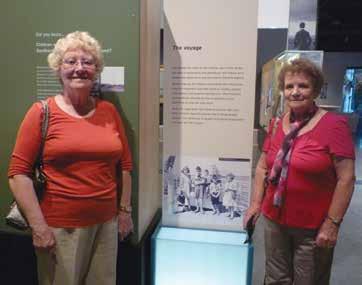
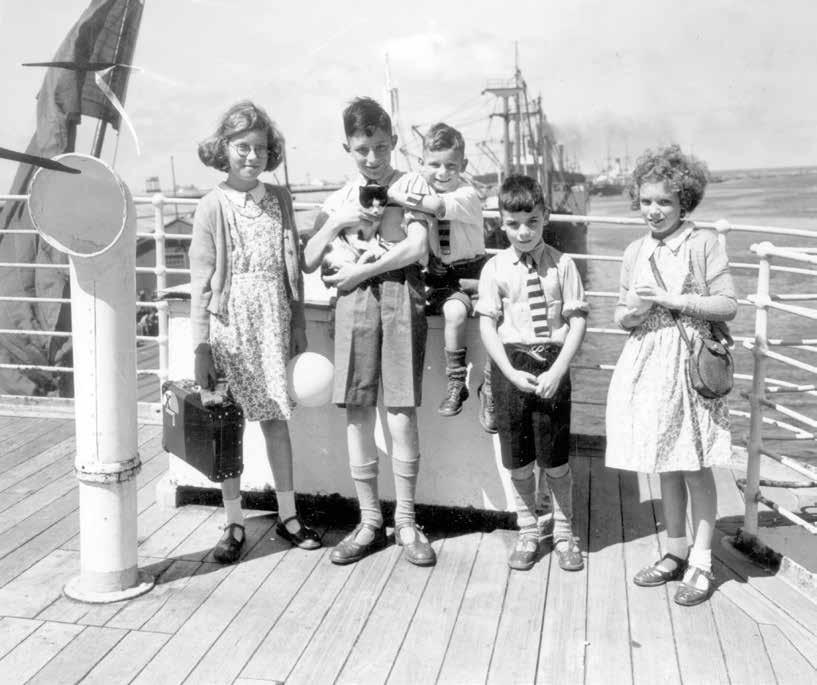
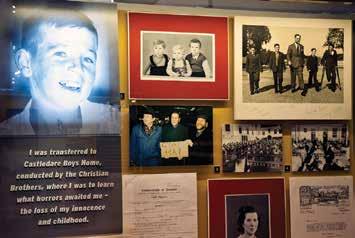
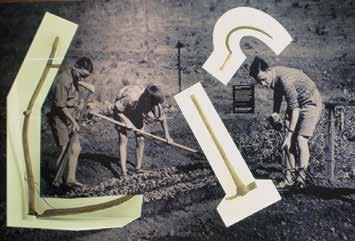
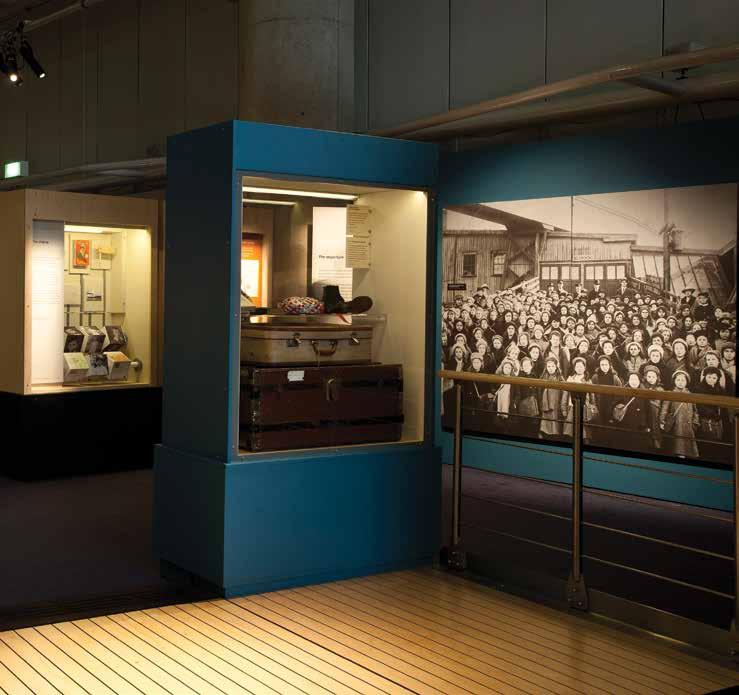
01 Case study of Raymond Brand, who was sent from Father Hudson’s Homes in Birmingham to Western Australia in 1953.
Photograph Andrew Frolows/ANMM
02 Farming tools donated by former child migrant Peter Bennett capture the essence of working life at Fairbridge Farm School, Molong, NSW, 1930s–40s.
Photograph Kim Tao/ANMM
03 View of On their own – Britain’s child migrants exhibition at the Australian National Maritime Museum, 2010.
Photograph Andrew Frolows/ANMM
care of the Fairbridge society and sent to the Fairbridge Farm school at Pinjarra, south of Perth. This image captured them on the very day they arrived in Fremantle on Ormonde in 1950, the same year as Pam Wright.
i had been intrigued by this photograph since i first saw it in 2009 while researching the exhibition at the state Library of Western australia. it was part of a collection of highly constructed arrival photographs, surely designed to encourage continued government and public support for schemes that were once considered generous philanthropy, but are now widely condemned as flawed social policy. i was interested in the subjects of this wellcomposed photograph – the boys in their distinctive striped Fairbridge ties; the girl on the left, whom we now know is Connie, with her Orient Line suitcase – but i never expected them to be a family group. This finding again reinforced the significance of telling personal stories and presenting living history in museums. it also demonstrated the important role that museums play in collecting this history, making it accessible and reconnecting people with their heritage and material culture.
The tour of On their own has also provided avenues for reassessing the material culture and historiography of child migration. i n 2012 i was contacted by former child migrant Hugh mcgowan, who had visited the exhibition at the national a rchives of australia in Canberra. He said:
There were two items of significance to me in the exhibition. The first was the letter from the superintendent of Dhurringile Rural Training Farm for Boys to the superintendent of Quarriers Homes in Scotland which reported the safe arrival of the five boys who arrived in 1963. This is relevant
to me because of the statement he made about how highly we spoke of Quarriers, which was sheer nonsense!
The second letter is the one I found in the drawer that we were invited to open.
To my astonishment, there was a letter that I wrote 51 years ago to Mr Munro at Quarriers. May I say I’d never written that letter unless it was under duress as I’m sure it was, simply because I was so glad to get out of Quarriers that I had no intention of looking back.
Hugh had been sent from glasgow to the Presbyterian Church’s Dhurringile farm near Tatura, Victoria, at the age of 13. He explained the story behind his glowing letter – written on board Orion en route to australia in 1961 – showing that objects are not always what they seem:
As I recall we were all made to sit down and write the letters. None of us really wanted to but I think it was something instigated by Quarriers, because I remember a letter of a similar vein being read out in the church, written by a boy who preceded us to Australia.
The On their own tour has also allowed the anmm to expand its historical interpretation by partnering with local venues and communities to develop artistic responses, public programs and web content that complement the themes of the exhibition, while further researching its contested subject. i n 2011 we supported melbourne’s i mmigration museum to create the thoughtprovoking display Stolen childhoods, which focused on the experiences of three child migrants sent to Victoria and Tasmania after World War ii a nd in 2012 we worked with the Clontarf Old Boys’ a ssociation and Community a rts network Western australia to record the responses of former child migrants during a visit to the former
The exhibition’s universal themes of family, identity and belonging resonated very strongly with the 350,000 people who visited it during its Australian tour
Christian Brothers’ Clontarf institution in Perth. The resulting film, On their own in WA, featured a collection of oral histories and photographs that examined the intergenerational legacy of child migration. it was shown alongside the exhibition at the Western australian maritime museum in Fremantle, giving a voice to marginalised groups in local and regional areas and drawing out their shared histories.
it is this evocative concept of shared histories that has been the most rewarding outcome of On their own – Britain’s child migrants e xhibition visitors have often made such remarks as, ‘How could i have grown up in the u K yet never heard of england’s stolen generation?’, or, ‘it’s kind of ironic to come to australia to learn so much about Canada’. it is immensely gratifying that we can use international collaborations and travelling exhibitions to remind people of these local connections on a global scale. On their own, on the road in australia and the u K, has provided a unique opportunity to explore the hidden history of Britain’s child migrants in a transnational context.
This exhibition is supported by the National Collecting Institutions Touring and Outreach Program, an Australian Government program aiming to improve access to the national collections for all Australians.
The museum’s Welcome Wall is a tribute to the more than six million people who have crossed the seas to settle in Australia. For details on how to register a name on the Wall, please phone 02 9298 3777.


One of Australia’s most popular and enduring sporting events is the Sydney to Hobart Yacht Race. It starts each December 26 and the passage down the east coast grabs national attention over the Christmas and New Year break, giving ocean racing an annual moment in the spotlight. It is internationally recognised as one of the three classic blue-water ocean races, along with the Fastnet and Bermuda races. Historic Vessels Curator David Payne profiles the history and highlights of the race.
TH e 2014 sYDne Y TO HOBarT raCe will be the 70th in the series. i n a sign of the times the race has a contemporary sponsor, rolex, but the heritage of the race is now strongly recognised by all who have taken part in the past as well as those involved in this year’s event, and it’s a much bigger story than just a three-to-four-day race down the coast.
Battling the elements
Ocean racing is just that – racing yachts out on the open sea. it takes place in a natural environment and the crews and yachts have no control over what conditions the sea may provide. There are flat calms through to storm-strength gales, currents and tides, variable wave and swell patterns, and the ever-shifting wind, over day and night –the only constant is change. a race report from the first event describes it well: ‘those two irresponsibles – wind and wave’.
a nd there are no lanes, signposts or field markings to guide you. The boundaries of the course are the coastline and the landmarks that tick off milestones along the way. These days you can rely on gPs to pinpoint where you are, but in the past precise navigation depended on how accurate you were with sun, moon and star observations. This was a time when your direction and destiny very much relied on human-powered calculations and then, when the weather closed in, your best estimation.
There is no pit lane to pull over into for repairs, changes of personnel and refuelling – once you start, you have to be self-sufficient to the end. You are always working the yacht and can change its configuration while you are sailing –different sail combinations and trim allow the crew to adjust the boat to the conditions, and the winners monitor and optimise the
boat constantly to keep it sailing at its full potential. But you’re working with very expensive and sometimes fragile gear, and sail changes have to be done with care, especially in challenging conditions.
The backup to gear failure is how you react to incidents on board, making running repairs where possible or having something spare in reserve or a margin of safety that allows you to carry on despite damage.
The safety net, as such, is waiting off to one side. Communications, flares, a life raft, ePir Bs, survival suits, even pre-race training and simulations – this is all secondary gear rigorously monitored and enforced, yet marking time until things go seriously wrong. Onshore emergency services are there to respond, but they too have their controls and limits, and self-help among the competing yachts is a code of practice to help avoid a catastrophe. The risk of this
is always there, and there have been notable times when it has played out in public view (see page 14).
Teamwork and leadership are intrinsic qualities needed throughout to keep harmony among the crew, to maintain their enthusiasm and ability to push on, and to keep it all under control and operating at a high level.
There are no lanes, signposts or field markings to guide you. The boundaries of the course are the coastline and the landmarks that tick off milestones along the way
it’s a race full of intriguing contrasts: how the amateur sailors of all levels mix with the professional sportspeople and Olympic representatives in the crews; the high-tech races against those of the previous generation; even the nature of the contest – how many other sports have such a diverse range of participants and
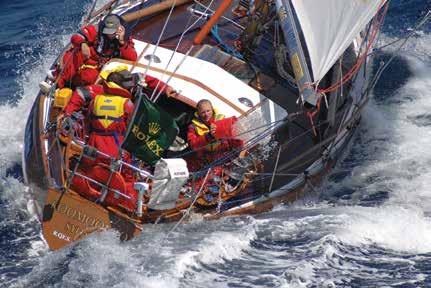
equipment, all sent off at the same time, aiming for the same goal, on the same course? The top boats were all high-tech in their time, but those of today seem even more so – hugely expensive racing machines built with advanced materials to fine tolerances, carrying only what is needed to support the crew so they can operate efficiently, forcing them to live and work around the yacht and its gear.
Participants will experience a huge range of emotions over the journey, and require stamina to see it through. The extraordinary scenery along the way seems a contradiction to the serious racing intent, but the atmosphere can be uplifting and this feeling becomes part of the reason crews return to race in the open sea time after time. a nd so develops that other factor, experience, one that helps enormously and only comes with time and determination – but come it does for the many sailors who feel the addiction of this sport and return each year to take on the Hobart race.
The sydney to Hobart race began in an off-the-cuff fashion. i n the latter part of World War ii, sailors on sydney Harbour formed the Cruising Yacht Club of australia (CYC a) to promote cruising and casual races in lieu of those suspended during the previous war years. Their first official event was in October 1944. During 1945 three
of the members – Jack earl, Peter Luke and Bert Walker – planned a cruise to Hobart in their respective yachts after Christmas. One evening Captain John i llingworth rn gave a talk to the club members, and afterwards Peter Luke suggested i llingworth might like to join the cruise. i llingworth’s reply was ‘i will, if you make a race of it’.
a nd so it was. The Sydney Morning Herald on 16 June 1945 noted that ‘Plans for a race from sydney to Hobart, early in January 1946 are being made by the Cruising Yacht Club … five possible entries had already been received’.
Later, in the Australian Power Boat and Yachting Monthly of 10 October 1945, there is a more formal notice.
Yacht Race to Tasmania: It is expected that an Ocean Yacht Race may take place from Sydney to Hobart, probably starting on December 26, 1945. Yachtsmen desirous of competing should contact Vice President Mr P Luke … Entries close December 1 1945.
From these small beginnings the cruise became a race and Captain i llingworth helped with the arrangements, showing the club how to measure the boats and handicap the event. The plans, expectations, the probables and possibles of earlier reports – they all turned into reality at the entrance to sydney Harbour just inside north Head on Boxing Day, 26 December, in 1945,

01 The vintage yacht Koomooloo sank in the 2006 race. The crew abandoned ship and took to their life raft before being rescued. The yacht had recently been extensively overhauled and the cause of the sinking was never determined. Photograph by Ian Mainsbridge. Reproduced with permission
02 Super-maxi Skandia during the 2005 race, digging into the crest of a wave at high speed in strong reaching conditions off Tasmania. Photograph by Rolex/Carlo Borlenghi Reproduced with permission
03 A cold front dwarfs one of the 2010 contestants. Photograph by Rolex/ Carlo Borlenghi


Perfect conditions with a northeast breeze have helped establish race records. In 1973 the reinforced cement hull Helsal – nicknamed the ‘floating footpath’ – set a surprise record, but it did not last long. In 1975, the world-beating maxiyacht Kialoa III came across from the United States, and owner Jim Kilroy steered it to a new record, well under three days. In 1999 the water-ballasted Volvo 60 class yachts were able to take maximum advantage of the strong northeast wind pattern. Nokia, from that class, set a new race record of one day 19 hours and 48 minutes at an average speed of 14.39 knots (26.66 km/h). This was nine hours faster than Kialoa III ’s longstanding record from 1975, which Morning Glory had briefly improved on by 30 minutes in 1996, 21 years after Kialoa’s triumph.
A curious line honours winner was Nocturne in 1953, a 10.66-metre (35-foot) sloop designed by Alan Payne, which mastered unusually light and fickle conditions to beat much larger craft in a slow race with no retirements.
The record now stands at one day, 18 hours and 23 minutes, set by Wild Oats XI in 2012. Rule changes since 1999 permitted vessels up
to 30.48 metres (100 feet) in length, and with favourable conditions the new super-maxis built to this limit easily had the potential to improve the record.
When Huey Long from the United States brought his aluminium yacht Ondine in 1962, one of the closest finishes to that time occurred when Ondine narrowly beat the steel Solo across the line, but Solo won on handicap.
The handicap winner is the true winner of the race, a fact sometimes obscured to the public as the bigger boats dominate the headlines. A small number of boats have ‘done the double’ and won both; Wild Oats XI has twice scored a treble with the race record as well, in 2005 and 2012, the only yacht to achieve this feat. Quite often the trophy has gone to a well-sailed yacht towards the middle of the finishing order, however, and sometimes the changeable weather patterns favour the smaller yachts towards the tail end.
The most notable handicap winner is Freya, designed, built and sailed by brothers Magnus and Trygve Halvorsen, which has the remarkable distinction of winning three races in succession, from 1963 to 1965 (see Signals 105). Love & War has also won the race three times, in 1974, 1978 and 2006.
when nine yachts set forth, including i llingworth in his recently purchased yacht Rani i llingworth had previous experience of ocean racing from his homeland in england and in the united states, where he was a respected competitor, and he prepared Rani to race to Hobart, and not just cruise there. The other sailors had a more relaxed attitude.
That first race encapsulated many features now associated with the event, and in hindsight was a warning of things to come. a strong southerly gale hit the boats on the first day, and many were unprepared for the rough seas that scattered the fleet. some boats hove to, one retired and the others sought shelter. Wayfarer ’s crew went ashore twice to phone home before resuming the race, including a stop at Port a rthur. according to Seacraft magazine of march 1946, ‘Licensee of the Hotel a rthur put on a barrel of beer specially for Wayfarer ’s crew, and they enjoyed their first drink of draught beer since they left sydney on Boxing Day. a local resident treated the ship’s company to a crayfish supper, which was the gastronomic highlight of the voyage’.
The top boats were all high-tech in their time, but those of today seem even more so – hugely expensive racing machines built with advanced materials to fine tolerances
meanwhile the experienced i llingworth, who had prepared Rani and his crew well, had continued to race his yacht throughout. Before the race it was reported that the raa F would put planes on patrol to keep the yachts under observation, but the weather had made that very difficult. When the gale eased and an aircraft was dispatched to look for the fleet, Rani was so far ahead that it was not located and was presumed missing. This became a headline article in the press, and later the sudden reappearance of Rani off Tasman island was a sensation. Rani won easily and the remaining seven boats gradually crossed the line in Hobart, bringing more stories of the race ashore for the public to enjoy.
This impressive coverage for the period ensured the race would continue, and by march 1946 media reports noted that the club secretary, a C Cooper, had said it would be an annual event starting on Boxing Day. a s it went ahead in its second year the race included tighter regulations based on those used by the royal Ocean r acing Club of Britain.
The event has been run every year since, and its fortunes have varied. There has been consistently strong public interest, and crowds line the harbour and its foreshores to watch the Boxing Day start, a tradition in parallel with the Boxing Day cricket Test match in melbourne.
media interest is not confined to the east coast; the race is followed throughout the country and the results are reported internationally. The attention is often on who will finish first, and the focus on this ‘line honours’ contest has been encouraged to maintain the media interest. Vessels from overseas have raced regularly with the local fleet since the early 1960s, and the race has been won on handicap and line honours by a modest number of craft from outside australia.
it quickly became recognised as one of the major offshore races due to the tough and demanding conditions the fleet usually has to overcome. i n response to this, the CYC a established good safety precautions quite early on, which for many years it updated in line with the evolution of the participating craft. it often established precautions or limits not enforced in other events. From 1951 onwards there has been a radio relay vessel accompanying the fleet, and safety items carried by the boats and crew remain a priority in the organisation of the race. The sydney to Hobart is now internationally recognised as one of the three classic blue-water ocean races, along with the Fastnet r ace in the united Kingdom and the Bermuda r ace on the east coast of the united states.
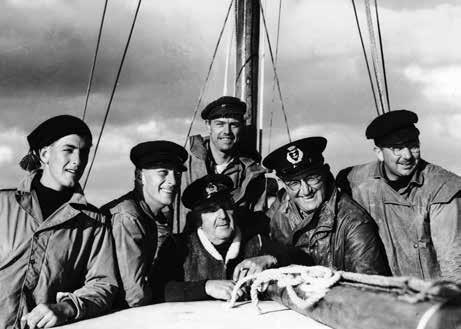
01 Bacardi holds the record for greatest number of Sydney to Hobarts contested, at 28 races. Photograph Richard Bennett. Reproduced with permission
02 Wayfarer’s crew in 1945. The yacht came last in the inaugural race, and still holds the record for the slowest-ever time, at more than 11 days. CYCA archives
03 The start of the 1968 race. Photograph Ern McQuillan. ANMM Collection

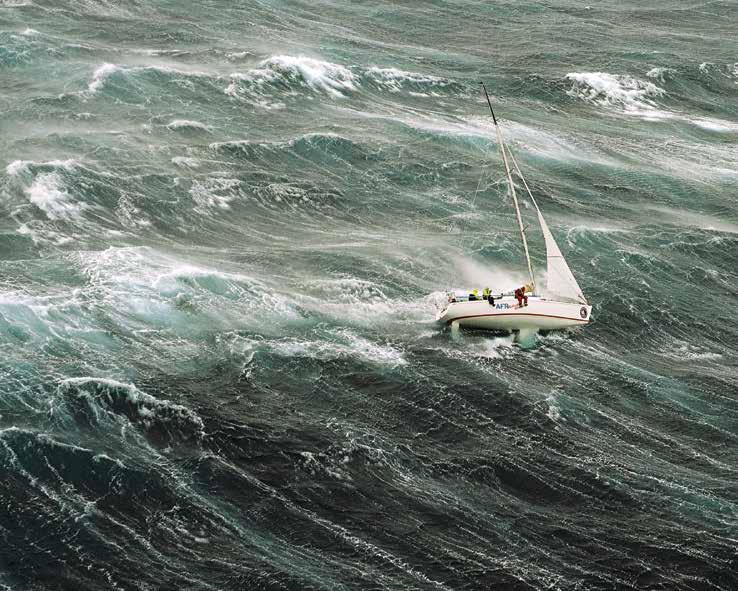
The 1998 race captured world attention when the fleet encountered the most extreme conditions in the event’s history. a strong southerly-flowing current was mixed with a southwest gale caused by an almost cyclonic depression travelling east across Bass strait. This had developed soon after the race began and was predicted by many weather forecasters. Winds of more than 80 knots (150 kilometres per hour) were recorded, but the opposing wind and current directions produced difficult seas with an unusual number of enormous waves that caused the most damage. Yachts were knocked down beyond 90 degrees, and some rolled completely. numerous yachts were unable to withstand the continuous battering and were forced to heave to or otherwise adopt survival techniques before retiring with damage. a small
number were abandoned and later sank, and six lives were lost off three boats in different circumstances.
The rescue effort was chaotic for a period as there were too many calls to respond to, but the heroic efforts by the civilian and service rescue helicopter crews, filmed by press helicopters working in the same extreme conditions, along with help provided by racing yachts standing by stricken competitors, combined to save many sailors and avoided a total catastrophe. i n the reviews and enquiries that followed a number of factors emerged that had contributed to the disaster. The race organisers then moved quickly to address the deficiencies in equipment and experience that had been highlighted by the race conditions and the fleet’s inability to cope with them. The event is now run at an extremely high level of safety
awareness. r isks remain, however; the 2004 event again brought difficult conditions and many retirements, including the two hightech maxi-yachts leading the fleet.
The end of the race is marked with celebrations by all the crews, and the area around Hobart’s Constitution Dock is packed with spectators, crews and their families who have come down to join them. i n the same tradition as at the start, the people from Hobart turn out to see the finish, and even when this occurs overnight there is still a strong contingent on and off the water waiting for the gun to sound.
For many yachtspeople the sydney to Hobart race is the high point of their season and their sport. some aspire to do it just once, while others come back year after year. The challenging conditions might
01 AFR Midnight Rambler won the 1998 race that sank five yachts and killed six people. From 115 starters, only 44 yachts completed the race. Photograph Richard Bennett. Reproduced with permission
02 Kialoa III in 1975 with all sails set, in a classic 1970s/80s combination of spinnaker plus blooper sails off the mainmast. Photograph Richard Bennett. Reproduced with permission
Just over 30 yachts listed on the Australian Register of Historic Vessels (ARHV) have taken part in the race, and for some, their connection to it has been a prime reason for their listing. Freya (HV000624) and Love & War (HV000572) are the only two yachts to have won the race on handicap three times. Freya’s wins were quite remarkable, three in a row from 1963 to 1965 in varying conditions, while Love & War –designed to the IOR rule in 1973 – won under this rating system in 1974 and 1978, then came back after two major rule changes to win again in 2006 under the current IRC rule. It remains a contender in 2014.

That first race encapsulated many features now associated with the event, and in hindsight was a warning of things to come
appear to be the main drawcard in some instances, but the attractions of blue-water sailing have seduced many competitors in the long run. The moods and atmosphere of the wind and ocean, and the satisfaction of sailing a yacht in these elements, are truly felt and understood by the great majority of the crews.
The combination of strong public interest and the enduring attraction of the race for the competitors would seem to ensure the future of the sydney to Hobart Yacht r ace and its continuing contribution to australia’s maritime heritage.
Sydney to Hobart Yacht Race – 70 years is on show at the museum until 1 March 2015. This intimate photographic exhibition offers a taste of the theatre and evolution of the race through modern and archival images of the race, panoramas of the course, and plans of past and present yachts.
Kathleen Gillett (HV000042), Wayfarer (HV000152) and Archina (HV000035) all took part in the first race. Kathleen, as she was then known, was fourth and Wayfarer last, while Archina retired early during the strong gales.
With the race established it was not long before purpose-built craft lined up at the start. One of the first was Eolo (HV000488), a heavy wooden cutter designed and built in Sydney, while the fast yawl Margaret Rintoul (HV000430), by famous American designer Phillip Rhodes, took line honours in 1951 and 1952.
In the late 1950s the English Lion class had established itself as a strong, race-winning design in the United Kingdom and a small number were built locally, with Siandra (HV000130) winning in 1958 by surprise – its radio had failed and the yacht was not sighted until it appeared in Hobart’s Derwent River in an excellent position to take out the race.
Astor (HV000036) represents some of the grand and elegant yachts that have raced to Hobart. Designed in 1924 by William Fife, it was also a very good performer and won line honours three times in the early 1960s.
Gretel (HV000471) is another graceful yacht, designed by Alan Payne for the 1962 America’s Cup, where it showed the world that Australia was a force to be reckoned with. Once its matchracing days were over it found
a new life as an ocean racer, and nearly won the Sydney to Hobart in 1980. Payne’s designs feature strongly in the ARHV roll call. Solo (HV000491), twice a winner, led to the Tasman Seabirds designs Maris (HV000233), Ronita (HV000082), Kaleena (HV000081) and the 1960 winner Cherana (HV000426). Lorita Maria (HV000392) is a custom design with a keel derived from aspects of Gretel ’s design, while Serenade (HV000260) is noteworthy as a sister ship to Payne’s first design to race in the Hobart, Nocturne. The big steel yacht Nirimba (HV000456) was built by Royal Australian Navy (RAN) apprentices and sailed in many races with an RAN crew.
The gaff-rigged Maluka (HV00240) is listed primarily through its cruising exploits, including passages to Hobart, one of which ended in a dramatic grounding and eventual recovery off the Victorian coast. Finally in 2006 a rebuilt and strengthened Maluka joined the race south. Mercedes III (HV000494) was Ben Lexcen’s first ocean-racing design and first raced in 1966. Tasmanian yacht Westward (HV000432) and the South Australian yacht Nerida (HV000015) were the first boats to win the race for their respective states.
More details on these and other Sydney to Hobart entrants can be found on the Australian Register of Historic Vessels: anmm.gov.au/arhv
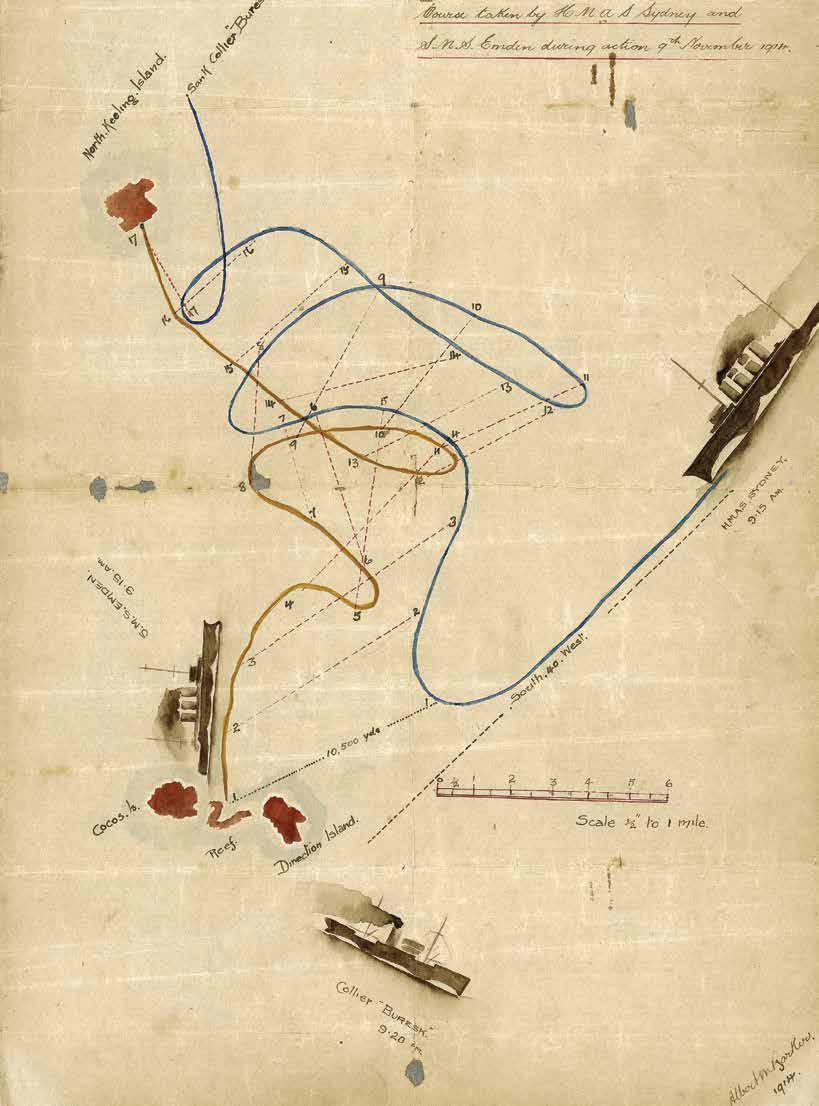
‘The Emden’s luck, like the hour Glass, had had its time & her shots began to fall either side of the “Sydney” due to the splendid manoeuvring of our Captain’
November 2014 marked 100 years since the Battle of Cocos – Australia’s first great sea battle, between HMAS Sydney and the German raider SMS Emden A first-hand account by one of Sydney ’s sailors presents a raw and personal portrayal of the events. Dr Stephen Gapps, curator of the exhibition War at Sea – The Navy in WWI, has been researching the story.
F ran K T re VOr JOnes was born in the north Wales farming village of Llanbyrnmair, montgomeryshire, in 1892, the second of five sons of local carpenter evan Jones and his wife Jeanette. at the age of 15, persuaded by seafaring neighbours of the opportunities, Jones reluctantly left his family and joined the royal navy.
a s soon as he boarded his first ship, he later said, he just wanted to go back home to the mountains of Wales. But he had signed up for several years’ service and by 1911 had risen from Boy 2nd Class to the rank of Ordinary seaman on H ms Victorious, then part of the Home Fleet. For Jones, life on an ageing vessel based at Torquay might not have compared to the opportunity to serve on the 2nd class protected cruiser H ms Encounter, which in 1912 was commissioned into the royal australian navy (ran and employed in training new australian recruits. This must have given him the idea of joining H mas Sydney, a modern, Chatham class light cruiser, newly built and ready to sail to australia.
On 25 June 1913 – the day Sydney was commissioned at greenwich, scotland – Jones started to write, in a neat hand and with some literary skill, a journal he titled ‘Commission of H mas Sydney and record of steaming’. Jones’s regular entries about life on Sydney continued until late 1919.
at some point during this time he also began to use his middle name, Trevor, instead of Frank.
Jones was serving on Sydney on 4 October 1913 when the new ran fleet entered Port Jackson amid great fanfare and celebrations. He must have been impressed with both his new ship and his australian experiences as, like many of his fellow royal navy sailors, he formally applied to transfer to the australian navy.1
it was traditional for junior officers to compile informal ships’ logs as part of their training, but not so for common sailors. Jones – who had some training as a clerk before joining the navy and who later worked as a bank clerk – entered daily records of the vessel’s mileage, coal loaded and general movements. He even added up the amount of propeller rotations over given distances, noting that in Sydney ’s first year of commission 29,500 miles (47,500 kilometres) had been covered, 12,120 tons (12,314 tonnes) of coal burnt and 34,250,000 ‘revolutions on each shaft’ made.
i n fact, Jones’s account is more like a journal or diary than a ship’s log. a s well as recording mileage and coal, at other moments he describes people, places or events with a sentimental, often writerly hand. He wrote fondly about time spent in Hobart, and about boxing and rugby matches that the ship’s company took part in at visiting ports. i n February 1914 he noted:
Monday 23rd 5.50 pm. Arrived Port Fairy, Victoria. Ship rolled heavily all the way. Distance 330 miles. Port Fairy has only a small population, 2000 inhabitants, but they are very nice people. Ship thrown open to visitors all day. Gave a searchlight display just before leaving.
i n the lead-up to the outbreak of war in august 1914, Jones’ journal exudes excitement about rounds of regattas, picnics and dinner parties, interspersed with drill and firing competitions – all tinged with an expectation of war and a chance to ‘see some action’.
at the outbreak of war, Sydney was joined at Townsville by the destroyers H mas Warrego and H mas Yarra before proceeding north to form a unit of admiral Patey’s Pacific squadron. Jones’s excitement is almost palpable as he describes searching the harbour at r abaul in german new guinea for enemy ships on 11 august. He noted that ‘sydney and destroyers’ were to conduct a night-time torpedo attack on r abaul, where they had ‘information that [the german east a sia squadron cruisers] scharnhorst and gneisnau were’.
The destroyers moved into r abaul harbour while Sydney guarded the entrance, torpedos at the ready:
It seemed [like] weeks waiting in the dark and everybody jumped every time a light appeared ashore. It was rumoured that guns had been mounted ashore previously and everyone expected every second to be discovered and a salvo to be fired point blank at us, but nothing happened.
The australian naval and m ilitary e xpedition force conquered german new guinea in september, and in October H mas Sydney returned to australia to form part of the escort for the first a nzac convoy of 38 transport ships from a lbany,
Western australia, to the suez Canal.
The escort – Sydney, Melbourne, H ms Minotaur and the Japanese cruiser Ibuki – sailed from a lbany on 1 november 1914. The only known german warship in the vicinity was the raider sms Emden – a ‘jack in the box’ that had terrorised shipping in the i ndian Ocean for the previous two months.
Facing the Emden
early on the morning of 9 november 1914 the convoy was steaming some 63 miles (100 kilometres) off the Cocos islands when Jones noted that the wireless operator there furiously signalled ‘“a strange cruiser at entrance to harbour”’. Sydney was ordered to raise steam for full speed and proceed to Cocos islands to investigate.
Jones was stationed as the emergency hand steering operator. He next noted that at 9.15 am Sydney ‘sighted [a] strange cruiser from the fore control top’: ‘a s soon as the “emden” sighted us, she blew her siren in an attempt to get the party she had sent ashore (to smash up the Wireless & Cable stations) back onboard. We were however to[o] quick for her & she had to run for it without them.’
according to Jones, Emden was ‘trying to clear the land … so as to make a run for it’. But on Emden, orders were to clear the decks for action.
i n fact, Emden was an inferior fighting vessel to Sydney. Though a highly effective raider, it was outclassed by Sydney in terms of guns, armour and speed. still, Captain von müller had luck and wits on his side so far. They now had no opportunity to escape, but rather than surrender, as von müller wrote after the battle, their only chance was to get close to the enemy cruiser, disable her with shells and sink her with torpedos.
Sydney ’s Captain Glossop was to later describe his vessel as a ‘hospital ship of a most painful description’
Jones continued:
The first shot was fired by the “Emden” at a range of 10,500 yds. It was the ranging shot & hit the water about a hundred yards short and then screemed [sic] overhead. The “Sydney” immediately fired a ranging shot. After this broadsides were fired. The Emden undoubtedly had the best of matters for the first 20 minutes
By 9.40 am both ships had started to fire broadsides. i n one of those surreal moments often recounted during war, Jones noted a strange effect of one of Emden’s early shots on sydney;
The Emden had the “Sydney’s” range to a nicety. Before the action had been under way 10 minutes, the “Sydney’s” rangefinder got a lovely shot clean in the waist, cutting it in half … Another piece stuck in the Lower Bridge & a third piece went through the Lower Bridge screen, taking with it exactly half a pair of binoculars which was hanging up there. at first, von müller’s confidence in his highly trained gun crews – even though many of the best gunlayers had been left behind with the abandoned shore party – was well placed and the Emden’s fire was accurate. When a shell was seen to explode on Sydney, Emden’s artillery officer Lieutenant gaede was reported to have cried out ‘First blood! We’ve got their range. now let them have it!’2
With salvos being fired every six seconds, at times three salvos would be in the air at once.
The next thing to happen was in the Starboard battery where 7 out of a guns crew of 9 went out. The Gunlayer and another member of the Gun crew were killed & the other five men badly wounded. The after control was the next place to get it. At this station were 1 officer & 4 men.
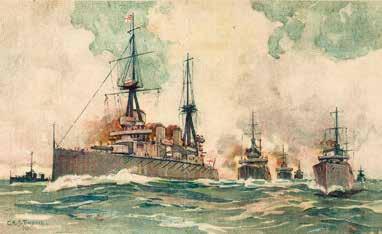
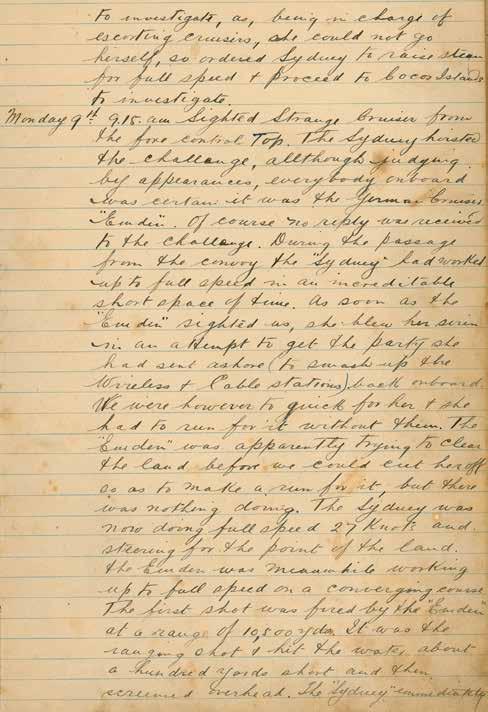
In the lead-up to the outbreak of war in August 1914, Jones’ journal exudes excitement about rounds of regattas, picnics and dinner parties, interspersed with drill and firing competitions
01 Page 16: Watercolour and pen diagram of the courses taken by HMAS Sydney and SMS Emden during the Battle of Cocos on 9 November 1914. Drawn by Albert M Barker, based on an original sketch made and agreed to by the opposing captains, John Glossop and Karl von Müller. ANMM Collection
02 Postcard titled ‘The Australian Fleet, 1913’ pasted into a logbook describing HMAS Sydney’s commissioning voyage and wartime movements, including the battle with the Emden. The log is believed to have been written by at least two unknown people. ANMM Collection Gift from K Daskalopoulos
03 Entry for 9 November 1914 from Frank Trevor Jones’s log, describing sighting the Emden. ANMM Collection Gift of A Rowell
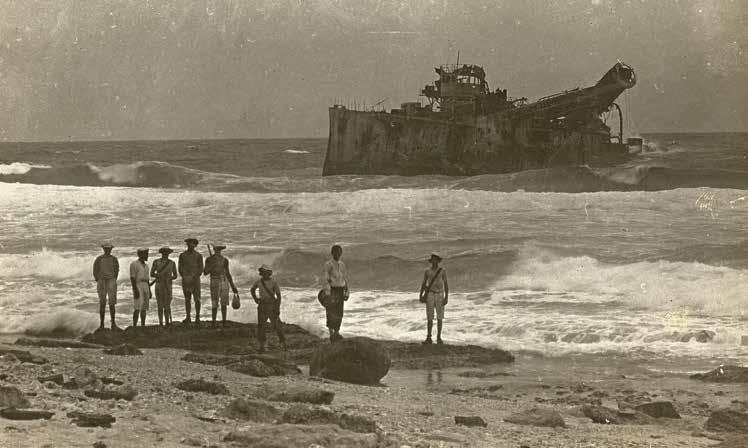
All were wounded. The officer had a piece taken clean out of both calves of his legs, one of the men had 17 wounds in one leg & another had 7 wounds in his left leg & side & his right eye destroyed.
A nice shot scooped a lump out of the top of the shield of the foremost Starboard gun. Through the shell striking the shield it caused the driving band to fly backwards and it went clean through the Gunlayers stomach.
‘The Emden was in an awful state … All amidships from the foremast to the Mainmast was one mass of bent and twisted iron’
Jones then notes that this was Emden’s last shot that did any major damage. a nother round ploughed through two bulkheads, tore through the commander’s cabin and went through the ship’s side without exploding. a nother fortunate incident saw a shell strike and ‘shove
its nose in’ Sydney ’s side, but it didn’t have enough force and fell back into the sea.
The Emden’s luck, like the hour Glass, had had its time & her shots began to fall either side of the “Sydney” due to the splendid manoeuvring of our Captain. Now the “Sydney” had her share of the fun
Now some big things began to lose their equilibrium. At 10.04am the “Emden’s” foremost funnel disappeared. At 10.20am our Lyddite Shell caused an explosion by the “Emden’s” mainmast & a big fire followed.
At 10.34. The “Emden’s” foremast and fore control top were shot clean overboard. At 10.42. The second funnel followed the first & an explosion occurred through one of the “Sydney’s” shots finding its way into the Emden’s engine room. At 11.08. the 3rd. funnel joined up with the other two & at the same time the “Emden’s” forebridge did the disappearing trick – it being blown clean out of her. The Emden now altered course and steered for the land – North Keeling Island. At 11.11 am the Emden went aground.
At 11.15 am “Sydney” ceased firing and altered course to chase the Emden’s collier. This vessel had laid off and watched the fight. As soon as she saw the Emden getting
it in the neck, she turned round and started making tracks for a different part of the Indian Ocean, but she must have overlooked the “Sydney”.
a fter Sydney fired a shot across the vessel’s bows it was stopped and boarded. Emden’s coal tender Buresk, a British collier captured on 26 October, was manned by a small german prize crew and a number of Chinese sailors who ‘rushed up to the sydney’s officer and asked to be taken to the warship as the collier was sinking’. The sea cocks had been opened and the vessel was assisted under water with four shots from Sydney ’s guns.
When Captain glossop returned Sydney to the beached and battered Emden, to the crew’s amazement, the german flag was still flying at the mainmast. according to Jones, signals were made by ‘morse flag’ to Emden, ‘“Do you surrender’, with Emden replying “no signal books, what signal?”’. it appeared that – despite being beached, crippled, and on fire with no steering gear or guns in action – the Emden had indeed not surrendered, and glossop ordered several more shots fired.
01 The wreck of the Emden beached on North Keeling Island, Cocos Islands, c1915. ANMM Collection
02 A view of SMS Emden, photographed just after the battle and published in a booklet called Emden Souvenir Photos Its frontispiece reads ‘These photos are authentic. They were taken by the Medical Officer of HMS Cadmus at Cocos Island’. ANMM Collection
03 Two of Sydney’s gun turrets, also from Emden Souvenir Photos. ANMM Collection
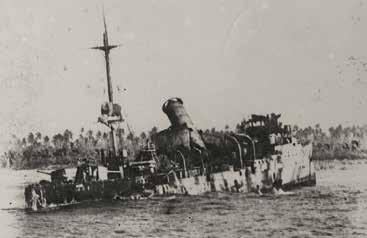

Then a man was seen climbing aloft, the german flag was taken down and a white flag of surrender was waved.
Sydney picked up survivors. glossop was to later describe his vessel as a ‘hospital ship of a most painful description’. Jones ended his description of the battle with a few words about Sydney ’s ship’s company, and special mention of Captain glossop:
Everybody was quite naturally highly strung for the first 5 or 10 minutes, but after that every body settled down to their different occupations & took no notice of the shells pitching short or those screaming overhead.
The Captain remained by the compass the whole of the action. His place was in the conning Tower behind about 6 inches of steel, but he remained in an exposed position & took his chance with other officers & men.
Jones described how during the night information was received from ‘one of the prisoners that 43 of the Emden’s crew were ashore in Cocos islands’ [sic].
But by the time a shore party from Sydney was landed the next day, the germans under Lieutenant Von mucke had ‘commandeered the Cocos islands schooner [ Ayesha] and half their stores’ and escaped. Their journey
became one of the legendary escapes of all time, sailing across the i ndian Ocean and marching through a rabian lands to Turkey and all the way back to a heroes’ welcome in germany.
r ather than give chase to the escaping germans on Ayesha, Sydney returned to aid the remaining Emden crew:
There was a very heavy ground swell running and the transferring of the wounded to the boats was made very difficult work. Luckily the “Sydney” was supplied with flexible bamboo stretchers, which allowed the wounded to be suspended upright.
There were 185 still alive on board the Emden. Out of these 45 were seriously injured and in an awful state. Out of a crew of 400, 185 men and 10 officers remained, the remainder being killed. The Sydney’s losses were 4 killed 11 wounded, 8 of them being serious cases
The aftermath of battle
Jones was at pains to describe the slaughter that had occurred on Emden:
The Emden was in an awful state … Her foremast from the foot to the foretop remained intact, but was hanging limply
over the Port side … All amidships from the foremast to the Mainmast was one mass of bent and twisted iron. Her Wireless room was like a curio box that had been turned upside down and given a good shake.
In one corner of the Port Battery there was a pile of pieces of humanity covered up with bags … Bodies were laying in all directions and positions. The majority were burnt to death through the explosion of the “Sydneys” Lyddite, which is a terrible explosion.
Just under the fore Bridge the Starboard Side was [a] proper wreck. All about the starboard battery there were gaping holes … It was a straight drop from the Quarter deck to the bottom of the ship. All woodwork had long since been burnt & there was nothing left but burnt and twisted iron … The stench from the burnt & half burnt bodies was awful.
But some woodwork did survive. The exhibition War at Sea – The Navy in WWI features the Emden’s decorative wooden stern ornament from the australian War memorial Collection. it is a tangible link to this scene of destruction described by Jones. a close look reveals that the back of the wooden ornament is blackened and charred – testimony to the heat of the iron it was attached to.
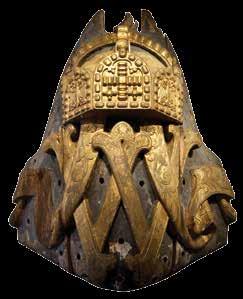
The decorative stern ornament with its i mperial german eagle design reflects an earlier age of battleships. i n many ways it signifies the end of an age of earlier wars and the beginning of the slaughter that was to be World War i a s Jones’ diary attests, the ‘awful stench’ of the ‘piles of pieces of humanity’, rather than chivalry or honour, was the real end point of this battle. a number of first-hand accounts exist of the Sydney–Emden engagement. most of the officers kept diaries or logs or wrote memoirs, as did the Emden survivors (see pages 24–25). These have all been used by historians to piece together the precise moments of the battle.
But Jones’ log, with a view from below decks, adds some wonderful details. a fter the battle, a strange moment obviously impressed itself on Jones’ mind. i have found no mention of this elsewhere. according to Jones, the superintendent, doctor and wireless operator of Cocos islands came aboard sydney and ‘had a yarn’ with Captain glossop. The superintendent returned to his boat while glossop personally thanked the wireless operator for getting the message about the Emden’s presence through to them.
When the wireless operator went to return to the boat it was already ‘laying off’ Sydney and the cruiser had started to head up steam and move away. a n officer said he would inform the captain and turn the ship around, but according to Jones the wireless operator said ‘no, never mind’ and ‘took a header over the stern’. a fter a neat dive and a swim, he reached the boat safely.
north sydney and they lived at greenwich, on the north shore of sydney Harbour – the harbour that had so impressed him in 1913 – for the rest of Frank’s life. He died in 1989, aged 96 – the last member of H mas Sydney ’s original 1914 crew.
The Joneses had no children. a friend and neighbour inherited Frank’s naval service memorabilia, including medals, and donated them to the museum in 1990.
1 In accordance with wartime procedure, Jones’s application was not submitted to the Admiralty until the war had ended.
2 Quoted in Larry Writer and Douglas Sellick, First Blood – Australia’s first great sea battle Media 21 Publishing, Sydney 2009, p 153.
The author thanks Gillian Simpson of the Vaughan Evans Library for research assistance.
More information and objects about the SydneyEmden engagement, from the National Maritime Collection, the Australian War Memorial and the National Film & Sound Archive of Australia, can be seen in the museum’s exhibition War at Sea – The Navy in WWI. The exhibition is on display at the museum until 3 May 2015, then travels nationally to 11 regional museums.
This exhibition has been made possible with the assistance of the Returned Services League Queensland Branch, Triple M, Australian Government, Australia Council for the Arts and 100 Years of Anzac.

01 The stern ornament of Emden, made of painted and gilded timber, was salvaged after the battle. It was built in three pieces and curved to follow the contour of the vessel’s stern. A large imperial crown is carved above the stylised letter ‘W’ for Kaiser Wilhelm II, Emperor of Germany. Australian War Memorial Collection. Photograph Andrew Frolows/ANMM
The rest of the war on board H mas Sydney involved no further carnage for Jones and his crewmates. Jones served on Sydney from early 1914 to 1919, on H mas Australia from 1919 to 1921, and was stationed at H mas Cerberus from 1921 to 1928. He received two good conduct badges and meritorious service mentions for new guinea and the Sydney–Emden action. But once he had become a rating, he never moved beyond his rank of able seaman until he left the navy as a Petty Officer.
Like many British sailors during this period who chose to join the ran and ultimately make australia home, Jones didn’t return to Britain. He married Violet Dale from
Further reading
Helmuth von Mucke (trans Helene S White), The Ayesha – Being the Adventures of the Landing Squad of the Emden, Ritter, Boston, Mass, 1917.
R K Lochner (trans Thea and Harry Lindauer), The Last Gentlemen of War – The Raider Exploits of the Cruiser Emden, Naval Institute Press, Annapolis, Maryland, 1988.
Larry Writer and Douglas Sellick, First Blood – Australia’s first great sea battle, Media 21 Publishing, Sydney, 2009.
Mike Carlton, First Victory – HMAS Sydney’s hunt for the German raider Emden, William Heinemann Australia, 2014.

It takes a special type of person to serve their nation. To put their mates and their country first. To make the ultimate sacrifice. At RSL Queensland, we are here to look after the men, women and families of those who cared enough to risk their own lives. To lend a hand. To support and guide. To show respect. And to say thank you.
At RSL Queensland, We’re here for them.
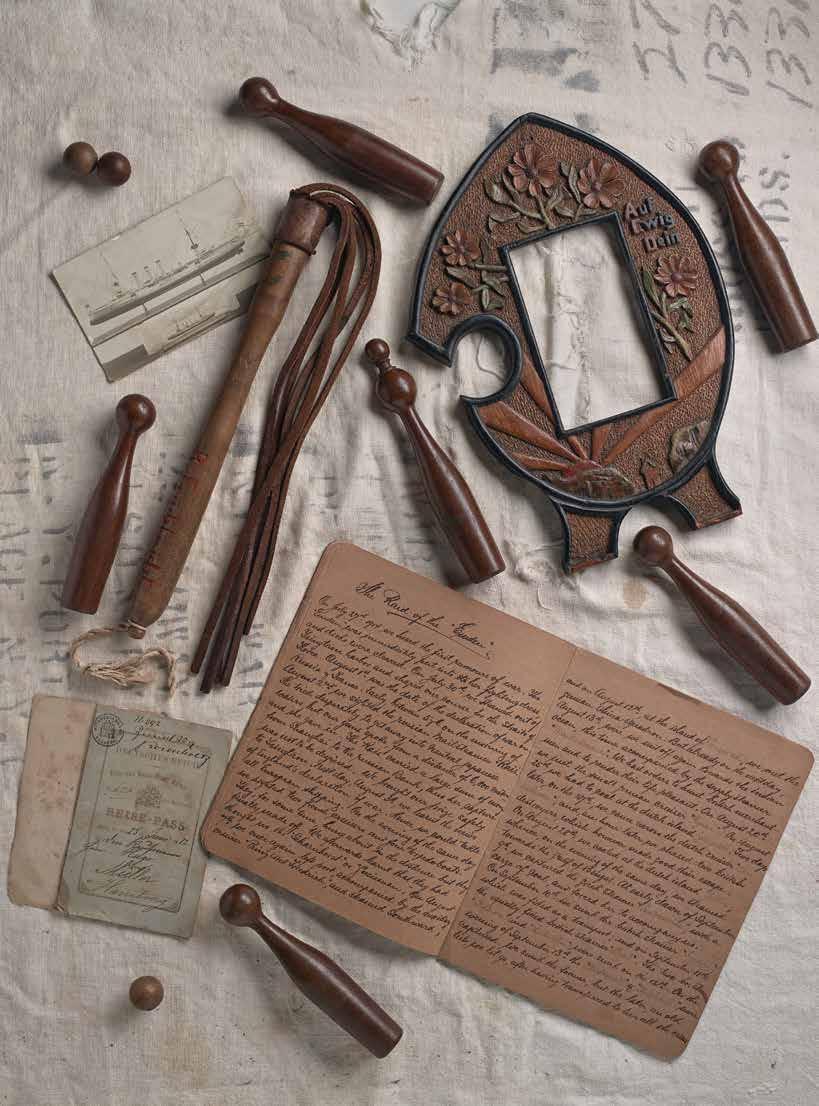
Importantly, the material includes first-hand accounts by German sailors of ‘The Raid of the Emden’ and Emden’s battle with HMAS Sydney
FOr TH e anni V ersarY of the Battle of Cocos 100 years ago, the museum is displaying a collection of material associated with the World War i german raider sms Emden, which was destroyed by H mas Sydney on 9 november 1914.
The items include a german military songbook from 1912, a reich Pass or travel document, two photographs of Emden crew with a model of their vessel, a small ‘purse’, a clothing flail, a pair of glasses, and several hand-carved wooden decorative picture frames and skittles games. i mportantly, the material includes first-hand accounts by german sailors of ‘The r aid of the Emden’ and Emden’s battle with H mas Sydney some of the objects were a bit of a mystery. The object identified as a ‘purse’ has a metal band along its lower edge and intricate decoration on the upper leather section. a close inspection of the metal revealed a section of wear consistent with intense rubbing. This led to me to believe it was in fact a flint striker kit, for fire lighting. Comparisons with antique flint strikers from China revealed this to be correct.
The clothing flail (pictured) was initially identified as a whip. research revealed it to be a piece of equipment issued
to german military in World War i for beating dust or soot from clothing, much like a rug beater.
The wooden artefacts were either manufactured by or associated with Emden prisoners held in australia during World War i a s the war progressed into a long stalemate, many germans at the Holsworthy ‘german Concentration Camp’ near Liverpool, southwest of sydney, passed the hours by making art and handcrafts. They also conducted theatre and music nights and held regular art and craft competitions.
many surviving examples of handcrafts by german internees and prisoners of war show an element of defiance in their use of german symbols. i nterestingly, some of the artefacts in this collection show a fusion of australian and german symbolism – one picture frame blends australian flora and fauna with images of the Emden and the schooner Ayesha (the vessel on which some of the Emden crew began their incredible escape voyage back to germany).
The memoirs of the Sydney – Emden battle were likely to have been taken down by australian prison guards. They are important in highlighting the german experience
of australia’s first great naval battle. The account pictured reads in part: ‘Sydney’s 15 cm shells had now silenced all our guns, torn away our funnels and one mast killed most of the crew and set their quarters on fire. Steam was hissing from broken steampipes. From the debris agonising cries of the seriously wounded men were rising completing the desolation. Yet the after masthead still proudly shows the German War-flag which we had defended as long as possible. Our commander decided to run the disabled Emden on the rocks of the nearest islet to save her from being of future use to the enemy and ordered “Both Engines full speed ahead for shore.” When just about to strand on the coral reef both engines were ordered to stop. Two great shocks then were felt and proud “Emden” was fast!’
a display case with some of the items featured in the museum foyer for the 9 november centenary of the battle, and a selection will be included in the exhibition War at Sea – The Navy in WWI when it travels nationally from may 2015.
Dr Stephen Gapps, curator
 Engraved plate after an illustration by Charles Alexandre Lesueuer, from Voyage de Decouvertes aux Terres Australes ... Partie Historique by François Peron, the account of Captain Nicolas Baudin’s expedition. An Aboriginal canoe of New South Wales appears in the foreground, with two men preparing to launch a similar canoe in the background. ANMM Collection
Engraved plate after an illustration by Charles Alexandre Lesueuer, from Voyage de Decouvertes aux Terres Australes ... Partie Historique by François Peron, the account of Captain Nicolas Baudin’s expedition. An Aboriginal canoe of New South Wales appears in the foreground, with two men preparing to launch a similar canoe in the background. ANMM Collection

Across Australia, a number of coastal and river-based Aboriginal and Torres Strait Islander communities are actively engaging with their Indigenous culture and local environment by practising cultural traditions such as tied-bark canoe-making. Mariko Smith examines early colonial records, more recent accounts, and what canoe-making contributes to Aboriginal life today.
During TH e CreaT iOn OF a C anOe – from taking the bark off the tree to the first floating – special relationships are made between people, their local landscapes and seascapes, and natural resources. This contributes to i ndigenous knowledgesharing traditions and sense of belonging to country – critical now when many i ndigenous australians feel disconnected from their cultural identity and homelands, and are concerned that i ndigenous knowledge and skills may soon be lost. regular readers of Signals may be familiar with the museum’s project Nawi – exploring Indigenous watercraft in Australia
This national collaboration between museums, i ndigenous communities, community organisations and researchers aims to highlight the maritime histories and experiences of australia’s first mariners and to continue practices related to i ndigenous watercraft into the future. i was involved in Nawi during 2012 as a curatorial intern, and it inspired my doctoral research topic about the socio-cultural significance of making tied-bark canoes for aboriginal peoples and their communities today.
One idea that i have been testing the waters on, so to speak, is about whether canoemaking holds a particular significance to aboriginal men, as distinguished from women, in expressing aboriginal masculinity and a distinct male identity. it is interesting that canoe-making appears to be a popular activity in mentoring, diversionary and rehabilitation programs for young aboriginal men at risk in the a nglo-australian education and legal systems. it seems that the discipline, physical endurance and cooperation required to make canoes are appealing to those involved and also effective in promoting a positive aboriginal identity – especially for i ndigenous men, who are often represented in a negative light in mainstream australian society and media.
Two organisations that were involved in the Nawi conference have offered canoe-building activities. redfern-based aboriginal organisation Tribal Warrior a ssociation, in collaboration with the Clean slate Without Prejudice initiative organised by redfern Local a rea Police Command, runs canoe-making workshops
01 Australian Aborigines making a bark canoe, engraved book illustration by Marion Ellis Rowan, 1886. ANMM Collection
02 Watercolour illustration of a group of Aborigines fishing (Series 36a.05). Unknown artist, but often attributed to Philip Gidley King (1758–1808). 1790s. Mitchell Library, State Library of NSW
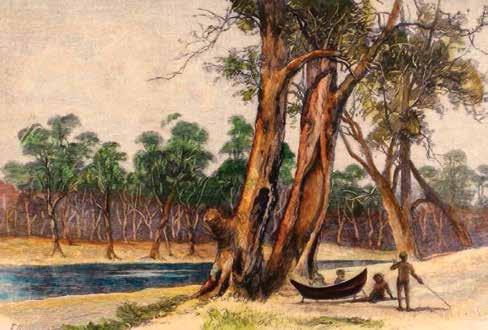
Written accounts of 18th-century European explorers to Australia provide detailed descriptions of Aboriginal life and cultural practices
as part of its i ndigenous mentoring programs. The saltwater Freshwater a rts a lliance from the new south Wales north Coast spearheaded Dunghutti and Birpai canoe revival projects, where aboriginal boys at risk of leaving high school early learnt about canoes and culture using bark, plywood, tin and corrugated iron. uncle Fred Kelly from m ission australia, who led the Dunghutti Canoes Project in Kempsey, said that:
It’s about much more than just building a canoe. It’s about creating the opportunity for young people and old people to work together. To get to know one another and learn about respect, with a focus on regeneration and cultural knowledge. It’s a traditional way of learning that teaches younger generations respect for others and themselves.1
These sound like qualities that seem to be relevant for both males and females, prompting the question, ‘Where are the women in the story?’
On the surface, primary and secondary reference material appears to strongly categorise bark canoe-making as a predominantly male activity, with women either absent from the record, present in ancillary and support roles, or more involved with using the completed canoes for fishing. This line of inquiry is based on descriptions and representations in various i ndigenous and non-i ndigenous sources about gender participation in canoe making before and after europeans first made contact with i ndigenous australians.
The written accounts of 18th-century european settlers and explorers in australia – particularly the First Fleet journals documenting the early sydney colony –are rich textual sources, providing detailed descriptions of aboriginal life and cultural practices at point of contact. There are numerous references to bark canoes, which were a common sight around Port Jackson, today’s sydney Harbour. such observations
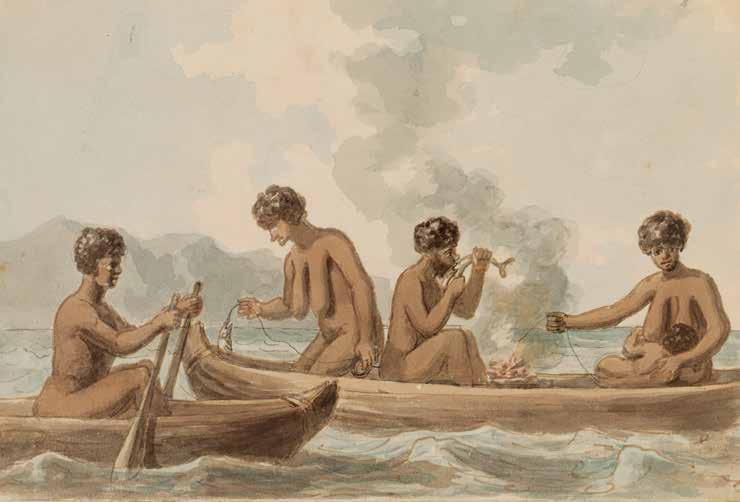
were frequent and detailed because the colonists could easily observe the canoes from a safe distance.2 There was much discussion about how many canoes were around on a particular day, what they looked like and who used them for what purposes.
marine Lieutenant Captain Watkin Tench, who arrived with the first european colonists in January 1788, described the sydney aboriginal canoe in 1789 simply as ‘being nothing more than a large piece of bark tied up at both ends with vines’. The colonists were quite amazed to see fires often lit inside the canoes for cooking, light and warmth. They observed that it was the women who mainly used the canoes for fishing, with botanist Joseph Banks, Judge-advocate David Collins and Captain (later governor) John Hunter making notes on this point.
First Fleet surgeon george Worgan wrote in 1788 that ‘[t]he women make much more use of them than the men do, for they get
into them only when they want to cross from one cove to the other, which having reached, they land, leaving the women in them to fish with a hook and line’.
Tench observed in 1793 that ‘[i]n general the canoe is assigned to her, into which she puts the fire, and pushes off into deep water, to fish with hook and line, this being the province of the women’.
a number of illustrations from the late 1700s and early 1800s show aboriginal women in bark canoes fishing, paddling and travelling with children. The museum’s Nawi team have undertaken the considerable task of combing through historical records and collections for illustrations and photographs of aboriginal and Torres strait islander watercraft, and have been able to locate a few images of aboriginal women and canoes from early colonial accounts. However, these early records contain fewer references and virtually no illustrations about the actual construction of the canoes. The references that do exist are generally
A number of illustrations from the late 1700s and early 1800s show Aboriginal women in bark canoes fishing, paddling and travelling with children
The discipline, physical endurance and cooperation required to make canoes are appealing to those involved
practical step-by-step descriptions. The records of Worgan and Lieutenant William Bradley are useful examples, providing some brief comments and inferences about gender-separated tasks in aboriginal society at the time. australia’s first governor, Captain a rthur Phillip, noted in 1789 that ‘[m]any of the women were employed at the time in fishing, a service which is not uncommonly performed by them, the men being chiefly occupied in making canoes’. Tench also offered an informative insight into aspects of aboriginal life, describing ‘[t]he canoes, fish-gigs, swords, shields, spears, throwing sticks, clubs, and hatchets, [being] made by the men...’. such commentary has seemingly embedded a view that bark canoe-making is almost exclusively the domain of aboriginal men, a universal truth of sorts that appears to have persisted to the present day.
i n the national maritime Collection, the museum holds an engraving from 1886 by australian artist marian ellis rowan (1848–1922). rowan was an artist, explorer and naturalist, known for her illustrations of flowers, insects and birds. The engraving shows a group of aboriginal people actually making a bark canoe. a lthough the location of the scene is not
clear from the image itself, the turned-up ends of the canoe are typical of a style found in some parts of australia. We can tell that the canoe is probably made from tree bark because of the scarred tree in the centre of the image. a large section of its bark appears to have been removed, leaving behind a tell-tale mark. scarred trees were a common sight around some parts of australia, showing us where a canoe –or a shield, in the case of a smaller shape – was made from a tree. The participants appear to be male rather than female. However, it is interesting to compare this to the Tasmanian aboriginal practices; the journals of george augustus robinson between 1829 and 1834 note that Truganini, wife of the Tasmanian aboriginal warrior Woorrady, and her female companion Pagerly had helped Woorrady make a canoe, or what robinson called a catamaran, from rolls of eucalyptus bark or dry rushes made into a bundle. These are possibly similar to the distinctive Tasmanian style of watercraft depicted in an 1807 engraving by Charles a lexandre Lesueur.
early european perceptions recorded in images and observations such as these often shape contemporary representations of aboriginal and Torres strait islander peoples, and indeed influence australian historiography. i n her paper on the myth of i ndigenous male indolence, shino Konishi noted that the early colonists’ evaluation of aboriginal manufactures, including canoes, ‘were overwhelmingly derogatory’. Bradley had described the sydney canoes in October 1788 as ‘by far the worse i ever heard of, being nothing more than a piece of Bark gather’d up and lashed at both ends with spreaders of small sticks inside by way of thwarts’. Worgan said they were ‘contemptible skiffs (which display very little art or i ngenuity)’. Tench offered the simultaneously complimentary
01 Harvesting yellow stringybark ( Eucalyptus muelleriana) near Ulladulla, New South Wales.
02 Scraping off excess bark.
03 Folding the bark to shape the canoe.
04 The folded ends are pierced with a stick and tied with lengths of bark. After this stage, branches are inserted as thwarts.
All photographs David Payne/ANMM
and patronising view that ‘[s]ome of their manufactures display ingenuity, when the rude tools with which they work, and their celerity of execution, are considered’.
Konishi also found that ‘the most damning appraisals were reserved for aboriginal men, who were almost universally seen as oppressive tyrants who exploited their women’s labour’. such views are still held by some people, perhaps gaining validation because the source material, being documentary records, is held in high historical esteem. This can pose problems in ongoing analysis, pressing researchers to be critically aware of the limitations in the source material.
The limited data from pre-contact and firstcontact times has meant that analysis about aboriginal gender roles can only go so far.3 Today’s informants cannot be expected to speak on the past’s account, and we need to be aware of our cultural and educational baggage in reading inferences into such material. i n terms of other sources such as material culture, historical ethnographic collections in museums may ‘significantly lack representations of aboriginal and Torres strait islander women … [giving] little insight into the cultural and social role of women in their traditional societies, and provid[ing] naïve interpretations of how they interacted with others in post-colonial times’.4 This may be because the informants and donors were overwhelmingly male, resulting in a clear though relatively passive gender bias and imbalance.
regional variations across aboriginal australia also provide different models of gender relations, so we cannot apply a ‘one-size-fits-all’ ‘pan-aboriginal’ approach from the material. a mong that diversity, however, there are similarities between social structures, with women being primarily associated with social and family harmony and the sharing of traditions, customs and language. This is interesting
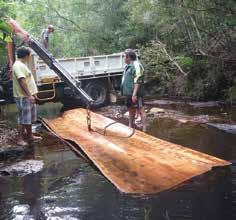
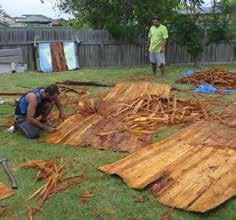

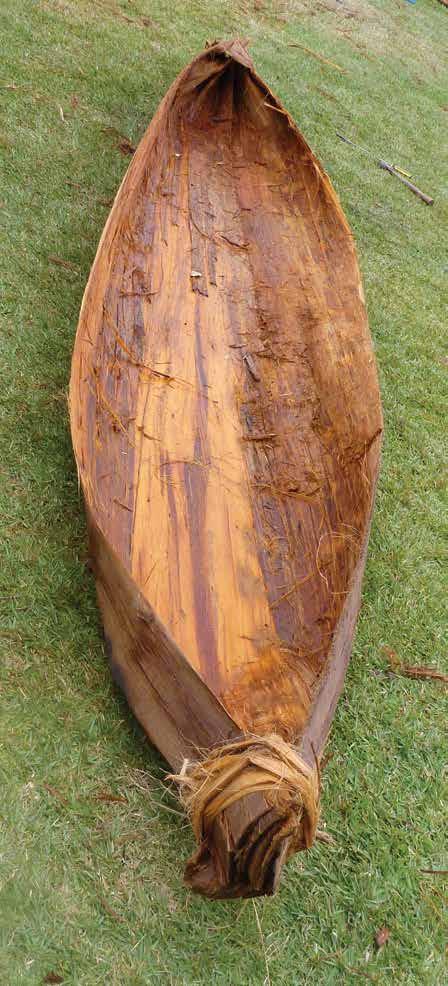
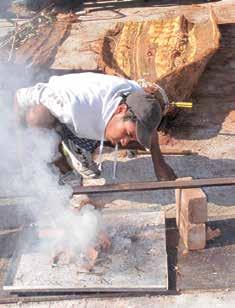
Women, Indigenous and non-Indigenous, are becoming actively involved in the study and practice of canoe-making in communities and research
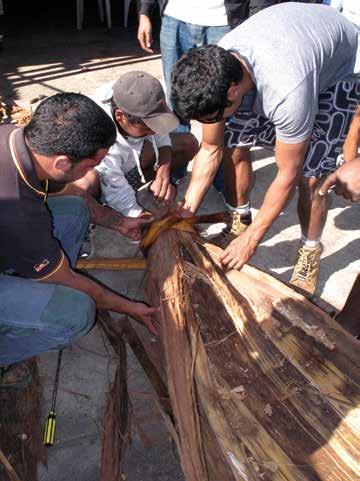
considering the arguments for greater participation by women in canoe-making activities today.
i nitiatives such as the Nawi project are making inroads on the topic of gender perspectives in i ndigenous watercraft. Women, i ndigenous and non-i ndigenous, are becoming actively involved in the study and practice of canoe-making in communities and research. The diverse viewpoints, experiences, stories and histories amongst i ndigenous men and women are moving discussion beyond the ‘traditional’ versus ‘contemporary’ view that has dominated popular discourse. Complex contexts and conditions, namely colonisation and its impact on i ndigenous peoples and cultures, shape and situate this diversity and multiplicity. The Nawi project focuses on interactions between i ndigenous and non-i ndigenous australians based on shared experiences and knowledge rather than a simplistic ‘black and white’ view on watercraft.
2 As asserted by Aboriginal historian Shino Konishi in her analysis of the journals, ‘Idle men: the eighteenth-century roots of the Indigenous indolence myth’, in Frances Peters-Little, Ann Curthoys and John Docker (eds), Passionate Histories: Myth, Memory & Indigenous Australia (Canberra: ANU E Press, 2010), pp 99–122: p 106.
3 Academics Annette Hamilton and Ann McGrath both point this out in their research about Aboriginal women and gender, from 1981 and 1990 respectively.
4 As noted by museum curators Olivia Robinson and Trish Barnard in ‘“Thanks, but we’ll take it from here”: Australian Aboriginal and Torres Strait Islander women influencing the collection of tangible and intangible heritage’, in Amy K Levin (ed), Gender, Sexuality, & Museums: A Routledge reader (Milton Park, Abingdon, Oxon; New York: Routledge, 2010), pp 129–137: pp 129–130.
01 A member of a Tribal Warrior canoe-making workshop tends the fire over which the unfinished end of the canoe behind him will be heated until the dampened bark is pliable.
02 Tying the other end of the canoe. Photographs David Payne/ANMM
1 Saltwater Freshwater Arts Alliance’s Canoe Projects, saltwaterfreshwaterfestival.com.au/ performance/saltwater-freshwater-stories-4/ (accessed 5 June 2013).
Mariko Smith is a Yuin woman who is a PhD student in the Department of Sociology and Social Policy at the University of Sydney, and also currently the Indigenous Collections Repatriation Officer at the Australian Museum. This article was developed from the author’s conference presentation on a panel with other Nawi presenters at the University of Sydney’s conference Sea Stories: Maritime Landscapes, Cultures and Histories during 12–14 June 2013.


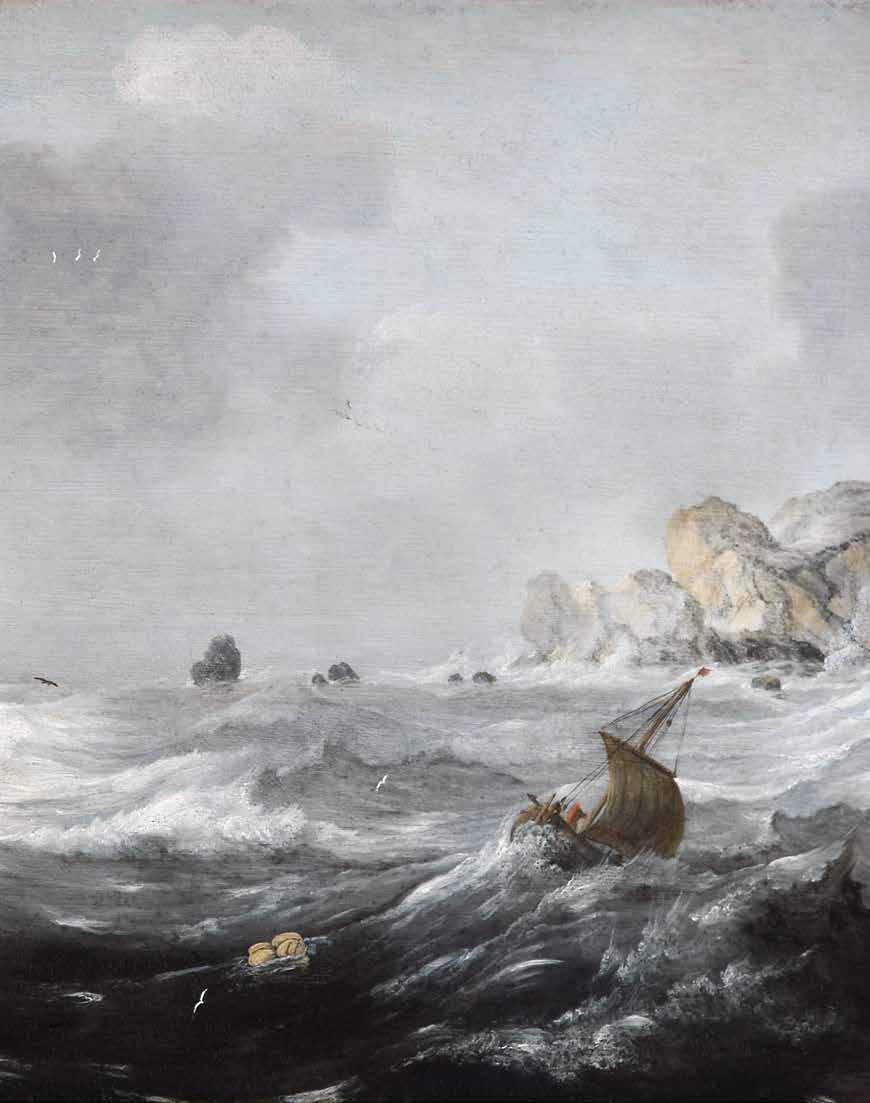
Dutch explorers and traders in the 17th century knew to their cost the dangers of sailing near the Great South Land.
A humble and tenacious sailor named Abraham Leeman experienced the worst that these treacherous coasts had to offer – not once but twice. Curatorial assistant Myffanwy Bryant recounts his remarkable story.
01 Previous pages: Ships in a storm on a rocky coast, Jan Porcellis, 1614–18. Courtesy Hallwyl Museum, Stockholm
02 A piece of an eight-real silver coin minted in Segovia, Spain, excavated from the wreck site of the Vergulde Draeck. ANMM Collection Transferred from Australian Netherlands Committee on Old Dutch Shipwrecks
03 An eight-real silver coin from Seville, Spain, excavated from the wreck site of the Vergulde Draeck. ANMM Collection Transferred from Australian Netherlands Committee on Old Dutch Shipwrecks
04 Print depicting Joan Maetsuyker by Matthys Balen (detail, 1726). ANMM Collection
05 Engraving by Wenceslao Hollar (1607–1677) showing the Dutch merchant fleet for the West Indies at anchor, 1647. ANMM Collection Gift from Vaughan Evans
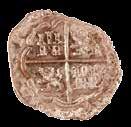
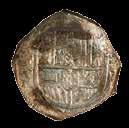
in TH e HOurs BeFOre DaW n on 28 april 1656, a Dutch east i ndia (VOC) ship called the Vergulde Draeck struck an uncharted reef on her way to Batavia (now Jakarta) and sank off the coast of what is now called Western australia, but was then an enigmatic landmass scarcely known to europeans – the fabled great south Land. i n an era when the calculation of longitude was fraught with difficulty and error, this was a tragic event yet not a shocking one. The VOC had lost some 168 ships in the previous decade to various misfortunes, and this latest wreck was further proof of the occupational hazards for those who made their living by the sea.
The disappearance of the Vergulde Draeck could have remained an unsolved mystery for Joan maetsuycker, the newly appointed governor general of Batavia, and yet another loss for him to explain to the company council back in a msterdam.
But on 7 June 1656 a small boat carrying seven starving, dehydrated and exhausted men arrived to tell an incredible tale. The leader of this bedraggled group is believed to have been abraham Leeman, who had been the Vergulde Draeck ’s under-steersman, or second officer.* Leeman explained how the ship had been wrecked upon a reef and that he and his men had managed to sail a small open boat to Batavia, spending over a month at sea.
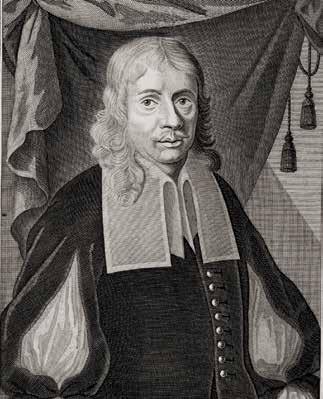
What was more, they were not the only survivors. They had left 68 other men and women, including the ship’s captain, alive on a shore on the southland.
To his great credit, governor maetsuyker acted quickly. not only had the Vergulde Draeck been carrying very expensive cargo but the VOC could not risk another loss of life such as that caused by the wreck of the Batavia and the resulting massacre 26 years earlier. The very next day maetsuyker sent two ships to search for survivors and any cargo that could be retrieved.
a small boat carrying seven starving, dehydrated and exhausted men arrived in Batavia to tell an incredible tale
The ships sailed south with high hopes, but were foiled at every turn. The weather conditions in the southern hemisphere winter were ferocious and the ships were buffeted by storms and high seas. Despite an extensive search along the shoreline and partway inland, there was no sign of the Vergulde Draeck or the
survivors. The rescue attempt had not only failed, it had resulted in another 11 crewmen disappearing while searching onshore.
maetsuyker faced a predicament: keep searching for the Vergulde Draeck survivors at the risk of losing more lives, time and money, or accept their fate as another warning of sailing too near the treacherous southland. But there were now almost 80 people stranded and possibly still alive on a hostile coast, plus a valuable cargo of coins from the Vergulde Draeck to retrieve. i n January 1658, more than 18 months since the Vergulde Draeck was wrecked, he made a final attempt. His reasons were very clear:
Although there remains for us, in view of the long lapse of time, very little hope that these people will still be found alive, but we have great fear that they have perished through hunger and misery … nevertheless we have not been able to omit, on the uncertain possibility which remains, to despatch another expedition there so as not to fail in any duty that could be demanded of us in searching for these poor souls in case they should still be alive’ (quoted in James Henderson, Marooned, page 63)
To give this final expedition its best chances, maetsuyker sent two fast, smaller ships and chose the summer months of January to commence the journey in the hope of better weather in the south.
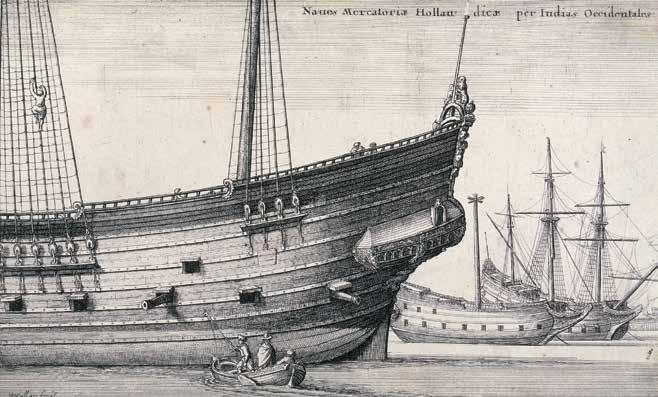
By march the search had proved relatively fruitless. One ship, the Emeloordt, had turned around after 15 days off the coast and headed back to Batavia. The other, Waeckende Boey, was now facing problems of its own. a search crew led by the ship’s first officer and navigator, abraham Leeman, found debris from the Vergulde Draeck on shore and even possible signs from the survivors in the form of a circle of wooden planks. But now the Waeckende Boey was battling raging offshore winds and large surf. a fter two weeks of being buffeted and pummelled up and down the coast, tensions on board must have been very high when the ship was finally able to approach land once again.
Leeman and his small crew were sent ashore to continue the search. On their return to the Waeckende Boey in the afternoon, the weather, by Leeman’s account, was blowing a strong wind with a ‘terribly high sea’. The captain, by now stressed and frustrated, called Leeman a coward for returning and sent the small boat back out to resume the search. it was a fateful decision. a s it turned out, Leeman was right and that night the weather was so bad he could not land the small boat. He and the terrified crew spent the night at sea believing it to be their last. While begging god for mercy, Leeman began to show the leadership that would eventually save him.
e xtraordinarily, throughout these and subsequent events abraham Leeman managed to keep a journal. His honest and detailed account of what happened to him shows us a man of great humility, faith and courage. Leeman’s determination to save his men and himself is truly remarkable considering the obstacles that he continually faced. On that first night at sea, he writes that they saw ‘nothing but death before us’, and yet he remains calm and expresses sadness rather than rage at the captain who had unnecessarily put them in this situation.
Leeman and his crew – by now dehydrated, hungry and desolate –were left stranded
While Leeman managed to land the next morning, the foul weather prevented the small boat from returning to the Wackende Boey. Over the next seven days the ship was apparently unable to locate the landing party on the shore. The captain would later claim he looked for as long as was viable, while Leeman would claim the captain ignored their signal fires. either way, the outcome was the same. Leeman and his crew –by now dehydrated, hungry and desolate – were left stranded by the Waeckende Boey, which sailed back to Batavia without them.
a lthough Leeman admitted in his journal to praying to god for succour and weeping privately in despair, he quickly realised that he alone would be the key to the group’s survival.
[27 march] I was very sad not knowing where to turn, for from the crew I could get neither action nor help, but they looked to me. If I told them anything they were content with it, if I asked them anything they said they would do whatever I told them, so that the cares were all mine.
Leeman knew what needed to be done, even though the resources available to him were dire. The small boat had been damaged during their first landing and their supplies were now reduced to what they could scavenge from the shore – essentially seal meat, seaweed and seabirds. Water was in short supply, and by the time Leeman accepted that the Waeckende Boey was not going to return, even that trickle had run low and turned foul. Leeman knew an openboat journey back to Batavia was achievable, but extremely hazardous. He now faced just that prospect with a damaged boat, scant supplies and a crew of 13 who had already all but given up hope. Leeman himself was so weak he could barely stand. Yet they set off. The boat was repaired and modified with seal skin, blankets were used for sails and a rudimentary map of
01 Hand-coloured engraved map from 1650 showing the Indian Ocean and the lands around it. The west coast of Cape York appears at centre right, and parts of the west and south coasts of Australia (titled ‘Terra des Zur’) at lower right. ANMM Collection Gift from R Gardner

a ‘piece of the southland and of the land of Java’ was carved in the stern. straight away, despite their best efforts at repair, the boat began leaking badly. Leeman kept his fears to himself and accepted that they had done all they could in preparation and that what might happen next was in god’s hands.
Leeman talks in his journal of the situation being so utterly miserable on board that it was hard to describe. The crew begged for water and relief but there was none to give. Bligh and shackleton, many decades later, would record the same feelings of quiet pressure, being leaders in situations that tested the very depths of humanity.
Towards the end of april three of the men on Leeman’s boat died in great pain and distress. The remaining crew became too weak even to hoist a sail, yet Leeman had to constantly force them to keep bailing as the small boat disintegrated around them. a terrible situation became worse when the rudimentary compass that had been their sole piece of navigational equipment was smashed by a staggering crew member. Leeman was forced to ‘set a course by the stars and just sail on in the name of god’.
Extraordinarily, throughout these and subsequent events Abraham Leeman managed to keep a journal
The men complained constantly and arguments broke out at the slightest perceived offence. Leeman held true to his belief that god would save them and continued to give the crew no indication of his growing despair or his own physical agony. He notes that he ‘comforted the men as best i could, saying that i hoped that our Lord would send us a speedy voyage as we were making good progress’. By 26 april their water supply was down to the last two rations each and the men had now been drinking their own urine and seawater for 15 days.
When all hope seemed lost, Leeman eventually came ashore at Java on 29 april. i n doing so, the small boat broke apart completely. some of the men deserted the group and Leeman and three loyal crew members were now forced to trek for five
weeks through the dense and hostile jungle. They were later captured by anti-Dutch locals, then eventually released and handed over ‘again to our people’ on 23 september 1658. That there were even four men still alive after such an ordeal at sea and over land was remarkable, and a testament to the extraordinary leader abraham Leeman had proved himself to be.
While Leeman’s sufferings had been almost beyond comprehension, they should not overshadow the probable plight of those Vergulde Draeck survivors who were left ashore in 1657 and the 11 crew who disappeared in the area shortly after. neither group was ever seen or heard from again – but they were not forgotten. Despite official VOC records being highly classified at the time, knowledge of the events of the Vergulde Draeck and the Wackende Boey reached europe. either verbally or by leaked journals, the details of the wreck and the subsequent marooning of crew from the Wackende Boey crew were made known.
The 17th century was a great era of travel and discovery for the Dutch, and the public at home soaked up stories of journeys to distant shores. a nd no shore held such a mystical attraction as the southland. europeans knew that it existed, but had no information about what the interior of ‘Terra australis i ncognita’ might hold. This lack of knowledge fed fanciful ideas about the type of social utopia that could exist there. Writers embraced the unknown landscape to create imaginary voyages ending in shipwreck and discovery that rested somewhere between actual recorded experiences and pure fiction. i n at least two such books, the survivors of the Vergulde Draeck live on. a nd happily so. The author Vairasse, writing in 1675, imagined the survivors living ‘many years in that country. The second part more wonderful and delightful than the first’. Later the Dutch author Hendrik smeeks used a marooned member of the Wackende Boey search party as a character in his book The Mighty Kingdom of Krinke Kesmes small details in the earlier parts of these books in particular indicate that the authors had some facts about what happened to the Vergulde Draeck and the marooned crew of the Wackende Boey
By the mid-19th century the idea persisted that those wrecked on the Vergulde Draeck had survived by moving inland. i n 1834
an anonymous article by an english explorer appeared in a Perth newspaper. it tells of his discovery of a ‘lost white tribe’ living in a walled settlement in the interior of Western australia. The writer provides great detail about these people whom he claims were of Dutch heritage and who had told him that they were descendants of shipwreck survivors of ‘80 men and 10 of their sisters’. The possibility that these were the Vergulde Draeck descendants was enticing to some, yet expeditions and modern re-examination of the area have shown no archaeological evidence of such a village ever existing or any remnants of the group. a more likely explanation is that the harsh and unforgiving conditions of the region were too much for the illequipped and already weakened europeans, and they perished.
a nd so for the next two centuries the Vergulde Draeck, its survivors and abraham Leeman were left to fiction and Dutch researchers. a lthough Leeman provided the VOC with his journal, we do not specifically hear from him again. a n inquest into the actions of the Wackende Boey captain was proposed to examine his actions in abandoning the boat of 14 men ‘too thoughtlessly’. The captain died before the inquest could take place, however, and the VOC seemingly decided to put the matter behind them, even if the story itself lived on in novels.
There is a small town named in abraham Leeman’s honour on the Western australian coast near the green islands, where the marooned crew first realised their fate. There is also a small monument at Two rocks, 60 kilometres north of Perth, which commemorates the original landing site of abraham Leeman and his search party. The memorial is humble and unassuming, much as the man himself appears to have been. it weathers the harsh coastal conditions and overlooks the ocean that was so much part of Leeman’s life. a lthough the monument commemorates the landing of Leeman, it should also stand as a reminder of the true hero Leeman was and serve as an inspiration that against great odds, hope can endure.
*In a later account Leeman makes no mention of this first voyage, but several reliable sources – including ANCODS (the Australian Netherlands Committee on Old Dutch Shipwrecks), the Migration Heritage Centre New South Wales and the VOC Historical Society – agree that he was its leader.
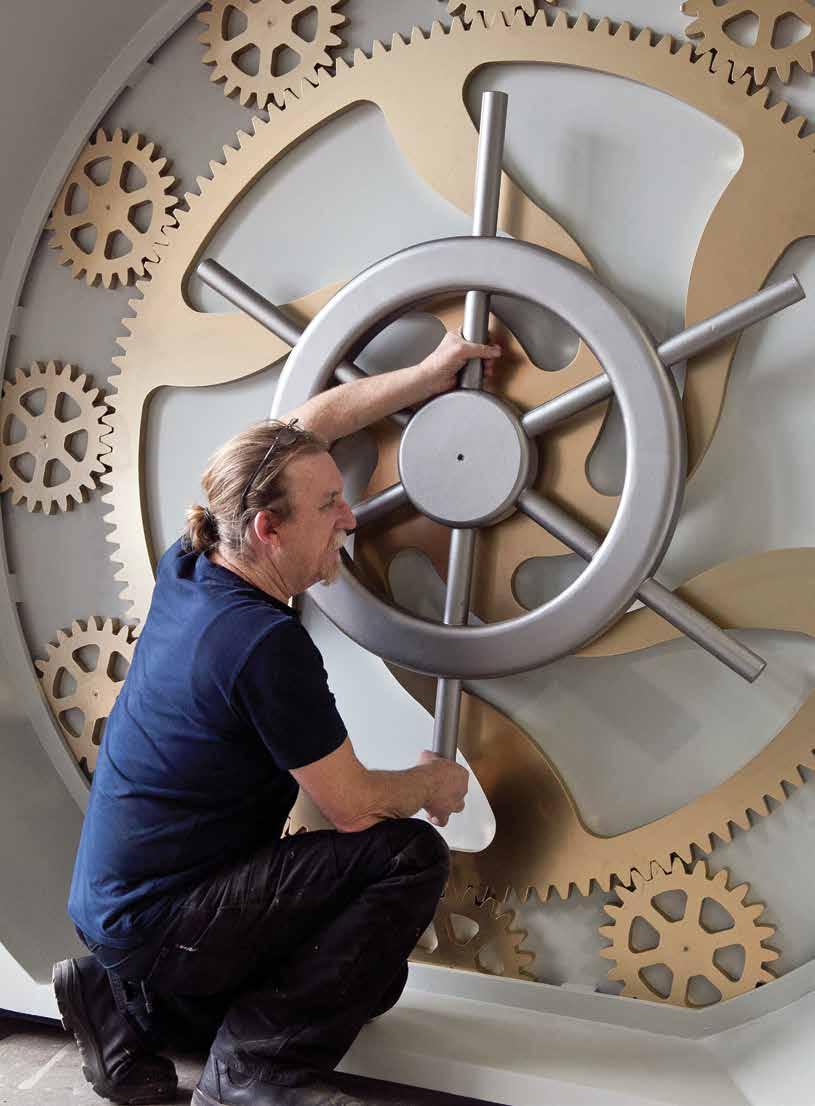
As well as reading the novel, a lot, I had to research all sorts of topics, from the psychological testing of submariners to the size of squid eyeballs
01 Preparator Peter Buckley with the airlockstyle door that forms the entry to the exhibition. Photograph Andrew Frolows/ ANMM
Museum exhibitions are the result of months, sometimes years, of intensive behind-the-scenes work by staff with many different skills. Our latest exhibition, the new holiday attraction Voyage to the Deep, is inspired by Jules Verne’s novel 20,000 Leagues Under the Seas. Its creative producer Em Blamey and preparator Peter Buckley talk about their roles in this imaginative and challenging project.
VOYAGE TO THE DEEP is an interactive exhibition for families, loosely based on Jules Verne’s novel 20,000 Leagues Under the Seas it’s about underwater adventure and discovery, and uses the book as a foundation, but then builds on it to contrast the fantasy of the novel with real submarines and modern deep-sea research – the facts behind the fiction.
Creating the concept – Em Blamey
The other day, a friend said to me, ‘You have an awesome job’, and i guess i do. a s a creative producer for the australian national maritime museum, i get to dream up new exhibitions and bring them to life. my friend’s comment was prompted by a photo i posted of the Nautilus, the steampunk submarine star of Voyage to the Deep, which opens in December. Kids will be able to climb aboard
a fantastical deep-sea vessel and take it for a drive (or should that be a dive?), exploring various undersea worlds and discovering what it’s like to live and work under water.
it’s my first project for this museum, though i’ve previously worked on sciencebased exhibitions for Canberra’s Questacon and the australian museum in sydney. But as i spent my late teens and early twenties sailing all over the world on tall ships, i know my futtock from my Flemish horse and feel quite at home here.
The project started about 18 months ago, when i was given the basic topic and started research. We used the 1998 Oxford World Classics translation by William Butcher for reference, as many of the earlier english editions contained translation errors (Butcher even got the title right: ‘seas’ not ‘sea’). We formed a team of people from different areas of the museum who would be responsible
for project management, marketing, promotion, programming and fabrication, and we started brainstorming ideas. my role was to work out ways to turn these ideas, plus concepts from the book and factual information, into a cohesive interactive exhibition. so, as well as reading the novel, a lot, i had to research all sorts of topics, from the psychological testing of submariners to the size of squid eyeballs. (Did you know whale milk is as thick as toothpaste?) i also looked into some of the things that Verne’s novel inspired, such as all the subsequent submarines called Nautilus it’s an impressive list; a Nautilus was the first submarine to dive beneath the a rctic ice (commanded by an australian), and another Nautilus was the first nuclear-powered sub. so, there was no shortage of inspiration or ideas to include. The tough part was passing these through the necessary practicality filters of what we could afford,
what things we could build in such a way that they’d be safe, durable and able to travel (as the exhibition will tour to other venues), and what would appeal to our family audience. The latter was helped by holding focus groups with parents to seek their opinions and suggestions.
Once the content had been worked out, the next challenge was sourcing all the stuff we needed. Fortunately eBay proved excellent for finding weird props; who knew you could buy replica moray eel skulls and stingray spines? We engaged suppliers in the united states, Canada and the united Kingdom, and had components built in south australia, Victoria, new south Wales, Queensland and the aCT. By the time it’s all in one place, i suspect the exhibition will have come close to travelling its 20,000 leagues.
We’re also building some key elements in house, including the fantastic entry portal and one of my favourite exhibits – a shark that you have to reach inside to
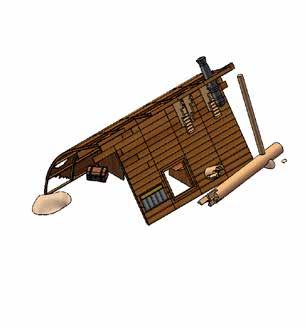
find out what he had for dinner. The shark (christened Herbert) has been sitting on my desk for the past few weeks, until he is needed. He looks cool; i just wish he’d help with the filing. my desk is also home to a 1.2-metre replica narwhal tusk, a pair of shiny brass deep-sea diving boots and a whole lot of props to fill the crew lockers and galley. it’ll seem very empty once everything’s been installed.
One of the hardest things to resolve was the forest of giant kelp. We wanted to include one of these, as they are fascinating and important australian marine habitats, but how do you build one in a gallery? especially one that will survive young visitors. We worked with a design firm in Canberra and think we’ve got it sorted, but, as it’s never been done before, we won’t know for sure until after the exhibition has opened.
my role also involved writing text for the exhibition, some of which i decided to do in rhyme, to create a sense of being
in a picture book and to engage younger visitors. Plus, mirroring the kids’ activity booklets often produced to accompany adult exhibitions, for this children’s experience we decided to do a guide for grown-ups; a booklet with additional information, puzzles and puns, so they can show off to their kids.
it’s been a challenging project, but a lot of fun too. i can’t wait to see it all assembled and in one place – a stunning steampunk submarine, a coral reef made from ghost nets and other marine debris, a giant kelp forest, a shipwreck and even the fabled lost city of Atlantis – yes, i definitely have an awesome job.
Bringing it all to life – Peter Buckley
Constructing exhibitions such as Voyage to the Deep is the work of preparators, or ‘preps’. They are an integral cog in the machine of traditional museums and, as the name implies, are employed to prepare objects, specimens or exhibits.
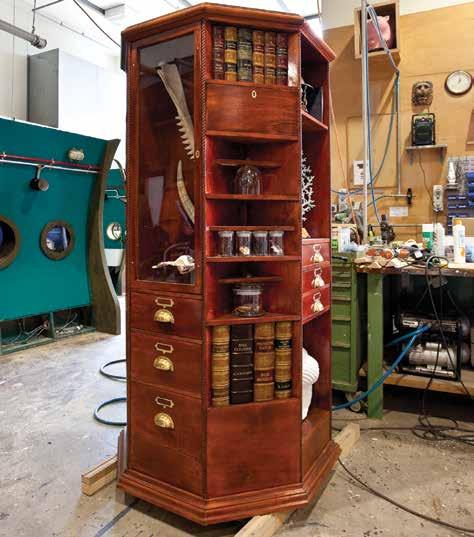
Originally they included embalmers, flensers and taxidermists as well as model makers and tradespeople. The australian national maritime museum has four preps, all of whom have visual arts degrees. This qualification is just as essential for the job as practical skills.
Preparators like working on the interesting and the new. We like to exercise our minds as well as our hands, coming as we do from a visual arts background. so, when a show like Voyage to the Deep comes along with an overall idea in place but lots of gaps in the design requiring imagination to fill them, we tend to enjoy ourselves more than usual.
The story that the exhibition is based on, Jules Verne’s 20,000 Leagues under the Seas, was familiar to us, so we had a lifetime of imagery and influence to draw on. a s a boy i exchanged comics for shells with families based at H mas Tarangue on manus island. These included the Classics i llustrated comic version of 20,000 Leagues with a shadowy Nautilus suspended
in the background of the cover illustration. i can still see it today, though it’s an image much embellished by memory. The other preps have their own engagements with the story that they can use as inspiration.
The plans we received were concept drawings only, and while we maintain an allegiance to them there is plenty of scope to embroider. The main criteria are that the exhibition is for children up to eight years old and it should be engaging and fun. so far we have taken enthusiastically to the fun and engaging.
One thing a preparator knows is that an object has more than just the obvious uses. it can be, and do, so much more, and can be pushed, coerced and subverted into something new. We keep this knowledge firmly in mind when producing and manufacturing a show like this. The items we needed to build for Voyage to the Deep included such things as a cabinet of curiosities that holds Captain nemo’s pipe organ as well as shelves and drawers
01 How to build a broken boat – designs for the shipwreck.
02 The cabinet of curiosities under construction in the preparators’ workshop. To its left is a section of the submarine’s hull.
03 Nautical specimens and treasure on display in the cabinet.
Photographs Andrew Frolows/ANMM

Items we needed to build included a cabinet of curiosities that holds Captain Nemo’s pipe organ as well as shelves and drawers filled with amazing underwater specimens
Museum preparators originally included embalmers, flensers and taxidermists as well as model makers and tradespeople

01 Children try out some of the exhibition’s dress-up costumes.
02 The hands-on exhibition features components on which children can climb and play, such as this giant clam.
03 Information panels feature nautical facts and figures plus quotes from 20,000 Leagues Under the Sea.
04 Information in the exhibition is linked to the primary-school curriculum. All photographs Andrew Frolows/ANMM





filled with amazing underwater specimens. There’s also a treasure chest to be created, plus a grand entrance – or, as we like to call it, the i mpact entry. it consists of an arch and a door, and needs to give the impression of an airlock door such as you might find on a simultaneously anachronistic and futuristic submarine – think a bit of star Wars with a liberal smattering of steampunk, plus lots of curved surfaces and faux-metal finishes. There’s also a shipwreck, with clues indicating that the Nautilus was the culprit.
Then there are all the embellishments and dressing to put in place. gauges, dials, pipes, wiring and mysterious mechanisms need to be created and included, and paint finishes applied – all the while keeping in mind that as the story takes place on the cusp of the 19th and 20th centuries, the design has to appear crisp and new as well as old-worldly. We’ve also been working feverishly on puns, which feature as titles on the gilded spines of Captain nemo’s books. Fortunately we have received many for free. We’re not averse to free humour, no matter how groan-worthy.
Building some of the items involves compound curves and angles, much finessing and multiple layers of finishes to get the desired effects. sometimes what looks good at reduced scale on paper doesn’t work as a structure, so items don’t necessarily correspond in size to their original design sketches. Fiddling with edges and pushing scale are where our sculpture and installation background comes in handy.


i’m currently working on the shipwreck, which requires internal walls that act as both a support and a feature, and which need to be easily removed. The odd shape of the hull and deck with its beams poses a challenge that will need an imaginative solution. The next phase will see other sections delivered from the outside contractors and some modelling of the special features, which will require some shaping and fibreglassing, and a great deal of painting.
so far in the construction phase we have used 80 sheets of plywood and about 60 litres of paint. By the end that amount will be closer to 120 litres. We have probably used up a 20-litre drum of PVa glue, plus boxes of nails and thousands of screws. most of the joinery is glued, nailed in place using an airgun then screwed. The show is envisaged both to travel and to reappear at the museum regularly for the Christmas holidays, so it has to last and be able to be repaired. it also need to be easily demounted and set up, to fit into a shipping container and to survive a life on the road.
While i’ve enjoyed working on this show overall, some aspects have been particularly satisfying. i really get a kick out of the entrance with its golden cogs and wheel; the solidness of the shipwreck and the way it comes apart and fits together; and the fancy furniture pieces that gave me scope to do almost anything i wanted. But what i have enjoyed more than anything else is working out how to do something,
As the story takes place on the cusp of the 19th and 20th centuries, the design has to appear crisp and new as well as old-worldly
such as building a jig to make a tool perform a function it wasn’t designed for. For example, i made a pantograph out of a piece of PVC pipe, cutting jigs for the router to make the wheel assembly on the door. This required working out how to drill 45-millimetre holes into an object shaped like a tyre – not just once but eight times, in perfect symmetry.
Visiting my grand-nephews recently, i talked with them about the exhibition and showed them some photos. The excitement it generated in these small children was a fantastic pay-off for me, and taking them to visit it will be like seeing it all afresh. i can’t wait.
Voyage to the Deep opens on 10 December. This exhibition was made possible by the support of Nine Network, Laissez Faire Catering, 2DayFM, and Douglas Fabian Productions.



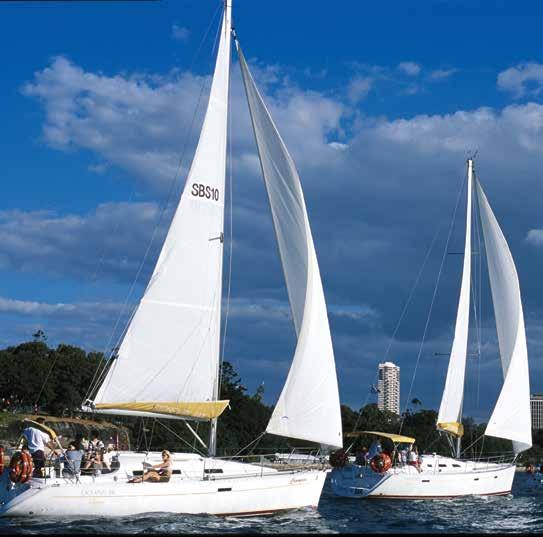
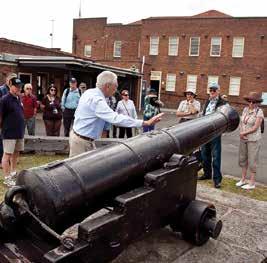
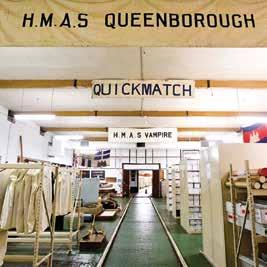
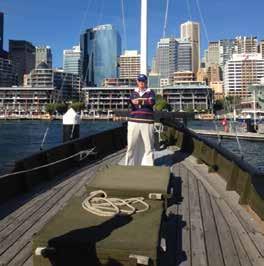

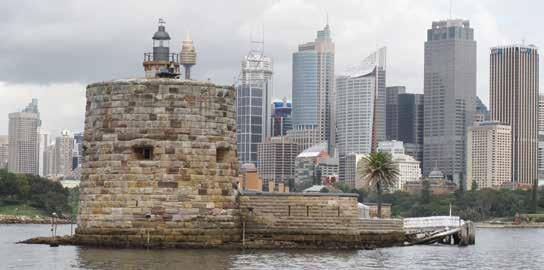
At the end of another successful year, we’d like to take this opportunity to thank our loyal Members for their support, and to wish them the best for the holiday season.
FOr mOsT mem Bers of the australian national maritime museum, Christmas is a chance to take a well-deserved break and spend time with family and friends. We hope that you will also visit the museum, as we’d love to see you at some of our special summer events.
We thank you for your valued support through what has been an exciting year of change. a s members manager, i appreciate your understanding during these changes, and i look forward to beginning 2015 with renewed vigour. i have been most impressed with the camaraderie displayed by all our members and i am sure that i speak for all of our staff when i say that we have enjoyed socialising with you this year.
There are a number of exciting members events to look forward to this summer. Don’t miss the members a nnual Yule Fest Lunch on saturday 6 December with a special guest speaker (to be announced). Combined with a gourmet lunch and the opportunity to catch up on the year past, it’s sure to be a great way to start off the festive season.
Families will be spoilt for choice this summer. There’s a fun-filled members Christmas event on sunday 14 December, with face painting, delicious food, loads
of entertainment and a special visit from santa himself. Opening soon is m ini mariners Play, a specially designed play space featuring engaging activities for kids aged 2 to 5. admission to this new activity centre is free for members.
Your new Year’s eve celebration is sorted with an exclusive members-only event at one of the harbour’s best vantage points – our very own museum. On our waterfront you will experience up close Darling Harbour’s spectacular 9 pm family fireworks. With food and beverages included, it will be an enjoyable and hassle-free evening for all.
History buffs are invited to join us for a behind-the-scenes tour of spectacle island, which is steeped in naval history and thought-provoking stories. For more educational events, please see the event listings in the following pages.
The next time you visit the museum, remember to drop in to the members Lounge to relax with complimentary coffee, tea and biscuits. There you can also check out the architect’s impressions of our new building, the Warships Pavilion, which is under construction and is due for completion next year.
Once again, i would like to thank all our valued members for your ongoing support of the museum and for making 2014 another successful year. i wish you all a very happy Christmas and a safe and prosperous new Year. Together with the members team, i look forward to more great times in 2015.
a ll the very best,
Kirra McNamara Members and Volunteers Manager01 Yachts from Sydney by Sail, hosts of the recent Members regatta. Courtesy Sydney by Sail
02 Members were able to tour MV Krait on the 71st anniversary of Operation Jaywick in November. Photograph Andrew Frolows/ ANMM
03 Young buccaneers at Talk Like a Pirate Day. Photograph Annalice Creighton/ANMM
04 Exploring Cockatoo Island’s maritime heritage. Photograph Andrew Frolows/ANMM
05 Members enjoyed an exclusive tour of Spectacle Island and its repository in October. Courtesy RAN
06 Fort Denison was the venue for a Members brunch tour in September. Photograph Janine Flew/ANMM
SUMMER 2014–15
Christmas festivities
Members Annual yule Fest lunch
11.30 am–2.30 pm Saturday 6 December
With special guest speaker, gourmet lunch and a chance to catch up with your fellow Members
Special family launch
Mini Mariners play! launch
Date to be announced
Be among the first to try our new activity space for children under five
Family entertainment
Members Christmas celebration
11 am–2 pm Sunday 14 December
Festive family fun and entertainment, plus a visit from Santa
On the water
Boxing Day cruise aboard MV Bennelong
11 am–3 pm Friday 26 December
Watch all the action of the race start
Exclusive NYE family event
New year’s Eve at the museum
6.30–10 pm Wednesday 31 December
Watch the fireworks from the vantage point of the museum’s waterfront
Family theatre performances
Captain Nemo’s nautilus
11.30 am & 2 pm Sunday 4 January – Friday 23 January (except Saturdays)
A thrilling tale of undersea adventure, by the Monkey Baa Theatre Company
Author talk
matthew Flinders open boat voyages
2–5 pm Wednesday 14 January
Author Russell Kenery focuses on Flinders’ brilliance as a sailor
Youth workshop
Short film making workshop
10 am–4.30 pm Thursday 15 January
Learn to storyboard, film, direct and edit. See your work on our YouTube channel!
Family torchlight tour
Voyage to the Deep
6–7.30 pm Friday 16 January
An after-hours tour through our new exhibition, with guide Captain Nemo
Family fun Sundays Subventure!
11 am–3 pm Sunday 18 January
Performances, films and character tours inspired by Voyage to the Deep
Youth workshop photo story: Snap! Spy! Submarine!
10 am–3 pm Wednesday 21 January
Learn about framing, aperture, shutter speed, photo editing and more
Exclusive Members cruise Australia Day on Endeavour
9.30 am–3 pm Monday 26 January
Participate in all the action on the harbour, including the famous Tall Ships race
Artist talk Farewell to Beautiful Whale
2–3.30 pm Sunday 1 February
Bryant Austin hosts his final talk on the Beautiful Whale exhibition
Meet the neighbours Spectacle Island tour
10.30 am–1.30 pm Thursday 5 February
Guided tour of the island and its repository of naval artefacts
Exclusive dinner event Valentines Dinner at yots
6.30–10.30 pm Saturday 14 February
Couples and singles are both welcome for a romantic harbourside dinner at Yots
Family fun Sundays
Row, row regattas!
11 am–3 pm Sunday 22 February
Celebrate the traditions of dragon-boat racing for lunar new year
and enquiries
Booking form on reverse of mailing address sheet. Please note that booking is essential unless otherwise stated:
Book online at anmm.gov.au/membersevents or phone (02) 9298 3644 (unless otherwise indicated) or email members@anmm.gov.au before sending form with payment. All details are correct at time of publication but subject to change.
01 Mini
02 Family Christmas celebrations. ANMM photographer
03 New Year’s Eve at Darling Harbour. Image courtesy Sydney Harbour Foreshore Authority
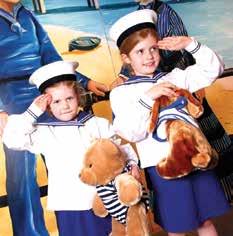
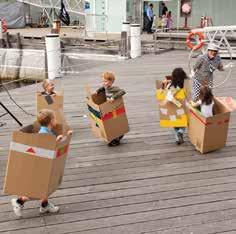
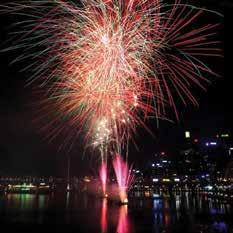
Christmas festivities
Members Annual yule Fest lunch
11.30 am–2.30 pm
Saturday 6 December
A chance to catch up with fellow Members while enjoying a delicious gourmet lunch overlooking beautiful Darling Harbour. Along with a special guest speaker (to be announced), museum Director Kevin Sumption and Chairman Peter Dexter will join us and give an insight into the exciting possibilities 2015 will bring to the museum. We can’t wait to see you all at this special event.
Members $95 Guests $115. Includes lunch and drinks
Family entertainment
Members Christmas celebration
11 am–2 pm Sunday 14 December
Start the holiday season with this fun-filled family event. There’s something for all ages, with face painting, delicious food, loads of entertainment, and of course access to the museum’s current exhibition Going Places Get into the spirit by dressing as your favourite transport technician – a pilot, train driver, sailor, whatever you like! Plus keep your eyes peeled for a special visit from the Man in The Red Suit …
Members $20 Member families $65 Guests $30 Guest families $80. Includes food and drinks
Special family launch
Mini Mariners play! launch
Date to be announced
Mini Mariners Play! is a fun and interactive gallery space for children 0–5 years and their carers. Take an imaginative journey from the sandy shore and dip under the waves to the deep blue sea with themed free play games, activities and displays specially designed to stimulate your child’s growing mind and inspire their curiosity.
Members free. Check our website for confirmation of the date
On the water
Boxing Day Cruise aboard
MV Bennelong
11 am–3 pm Friday 26 December
Had a hectic Christmas? Now’s your chance to relax on the harbour on board MV Bennelong. This VIP charter vessel provides the perfect platform for viewing the start of the Sydney–Hobart yacht race. Specifically made for Sydney Harbour cruising, the boat offers large viewing decks providing 360-degree vistas of all the action on the water. With buffet lunch provided, this is the ideal Boxing Day chill-out.
Members $90 Guests $110. Includes lunch. Cash bar available
Exclusive NYE family event
New year’s Eve at the museum
6.30–10 pm Wednesday 31 December
Your easy and stress-free New Year’s Eve is sorted with our family-friendly picnic on the harbour. The museum, in the heart of Darling Harbour, provides the perfect vantage point for the 9 pm family fireworks. A delicious picnic hamper is included in your ticket. Museum Members also enjoy an exclusive chill-out lounge on the elevated Ben Lexcen Terrace, with stunning views of the spectacular western city skyline. Enjoy the comfort of extra space, sofas, plus wine, cheese, signature cocktail on arrival, and personalised service. This ticketed event is sure to be popular, so book now to avoid disappointment. BYO picnic blanket!
Members $150 Member child $90
Member family $395. Includes picnic hamper food box with juice, water, canapés, cold food items and snacks for children; cheese platters, arrival signature cocktail, wine and sparkling wine, exclusive use of the Ben Lexcen Terrace with sofas, tables and chairs, and personal waiter service.
Guests $190 Guest child $90
Guest family $480. Includes picnic hamper food box with juice, water, canapés, cold food items and snacks for children; exclusive waterfront access. Alcoholic beverages available for purchase.
NOTE Strictly no outside alcohol is to be brought onto the premises.
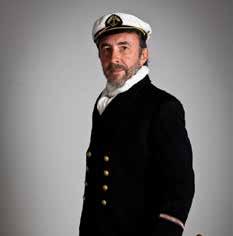
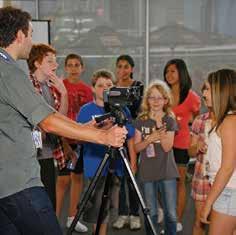
Family theatre performances
Captain Nemo’s nautilus
11.30 am & 2 pm Sunday 4 January–Friday 23 January (except Saturdays)
When Peta accidentally travels back in time to the extraordinary submarine world of Captain Nemo’s Nautilus, there are curious encounters and wonderful escapades ahead – daring escapes from ravenous creatures, time-travelling volcanoes and swirling storms. Join the cast of quirky and captivating characters inspired by 20,000 Leagues Under the Seas in this thrilling tale of undersea adventure written and performed by the acclaimed Monkey Baa Theatre Company.
Running time 45 minutes. Included in museum entry. No bookings required
Author talk
Russell Kenery – matthew
Flinders open boat voyages
2–5 pm Wednesday 14 January
Many books on Flinders promote his brilliance as a navigator and cartographer, and examine his epic circumnavigations of Tasmania and mainland Australia, but his open boat voyages are less often mentioned. Join author Russell Kenery of the Flinders Yacht Club as he details the remarkable sailing achievements of Australia’s most famous explorer.
Members $25 Guests $50. Includes refreshments
Youth workshop
Monster mash – Short film making workshop
10 am–4.30 pm Thursday 15 January
Create your own imaginative short films inspired by our Voyage to the Deep exhibition – take your inspiration from monstrous creatures, lost cities, submarines and sunken treasure. Learn to storyboard, film, direct and edit your feature and have your work featured on our YouTube channel.
Members $75 Guests $78. Includes all materials plus a USB of your movie
01 Captain Nemo guides a special tour of Voyage to the Deep. Photograph A Frolows/ANMM
02 Film-making workshop. ANMM photographer
03 Young adventurers try on some of the dress-up outfits from Voyage to the Deep Photograph Andrew Frolows/ANMM
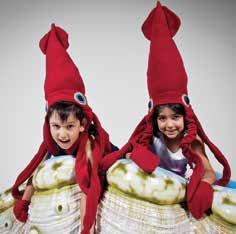
Family fun Sundays Subventure!
11 am–3 pm Sunday 18 January
Join us for lively performances, film screenings, character tours and face painting, all inspired by Jules Verne’s 20,000 Leagues Under the Seas and our new interactive exhibition Voyage to the Deep Free. No bookings required
Family torchlight tour
Voyage to the Deep
6–7.30 pm Friday 16 January
Experience our summer exhibition in a special after-hours theatrical family tour with character guide Captain Nemo. Follow a treasure hunt through the fantasy submarine world of Voyage to the Deep by torchlight. Enjoy a barbecue dinner, themed refreshments, face painting and souvenir crafts.
Members $20 Member families $73 Guests $20 Guest families $80
Youth workshop
photo story: Snap! Spy! Submarine!
10 am–3 pm Wednesday 21 January
Be inspired by our real life submarine HMAS Onslow and Jules Verne’s fictional submarine Nautilus in an adventurous workshop on digital SLR photography. Experiment with storytelling, fantasy and representation as you learn about framing, aperture, shutter speed and more. Learn to edit your photos and have your best shot printed to take home.
Ages 8–14. Members $75 Guests $78. Includes all materials, plus a cd of your photos
04 Endeavour on Australia Day.
ANMM photographer
05 Spectacle Island repository.
Photograph courtesy RAN
06 Dragon boat in the museum’s basin.
ANMM photographer
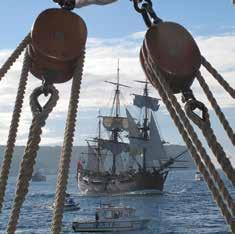
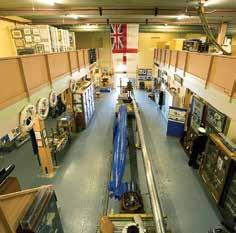
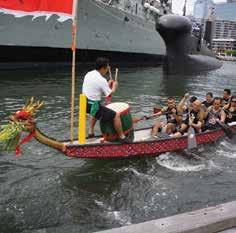
Exclusive Members cruise Australia Day on Endeavour
9.30 am–3 pm Monday 26 January
Celebrate our country’s birthday on a replica of Australia’s most famous ship. Museum Members receive exclusive use of Endeavour on Australia Day. Enjoy fully catered morning tea and lunch as we cruise on our beautiful harbour – how much it has changed since the First Fleet arrived 226 years ago! Endeavour provides the perfect platform to soak up all the action, including the tall ships fun and games at Campbell’s Cove and the famous Ferrython. Endeavour will participate in the most hotly contested event of the day – the Tall Ships Race.
Members $230 Guests $280. Includes morning tea and lunch
Artist talk
Farewell to Beautiful Whale
2–3.30 pm Sunday 1 February
As the museum begins to pack away one of our most stunning exhibitions to date, Bryant Austin will host his final presentation as a Members exclusive. Beautiful Whale represents Bryant’s 20-year journey exploring the depths of possibility to connect people with the greatest minds in the water. He will talk you through the thrilling experience of immersing himself in the water, remaining motionless, and waiting for humpback, minke and sperm whales to pass less than two metres away from his lens.
Members $25 Guests $50. Includes refreshments
Meet the neighbours Spectacle Island tour
10.30 am–1.30 pm Thursday 5 February
By popular demand, the Spectacle Island tour returns! Take a step back in time and enjoy a rare opportunity to explore this historic island – normally off limits to the public – and its repository, which is crammed with naval history and artefacts. This behindthe-scenes tour is led by Lindsey Shaw, former senior curator at the museum. Don’t miss this fascinating expedition!
Members $65 Guests $85. Includes morning tea, museum entry and ferry fare
Family fun Sundays Row, row regattas!
11 am–3 pm Sunday 22 February
A special themed family fun day that celebrates the lunar new year and the traditions of dragon-boat racing and regattas. Enjoy lively performances, film screenings, character tours, face painting and much more. Free. No bookings required
Exclusive dinner event
Valentines dinner at yots
6.30–10.30pm Saturday 14 February
Whether you bring your partner or arrive solo, the museum has you covered on Valentine’s Day. Enjoy exclusive use of Yots for the evening, where the beautiful cityscape of Darling Harbour will be your backdrop and the ebb and flow of the harbour will help create that romantic atmosphere. Feast on a sumptuous Italianinspired menu on a long family-style table.
Members $100 Guests $130. Includes 3-course meal, wine and signature cocktail on arrival
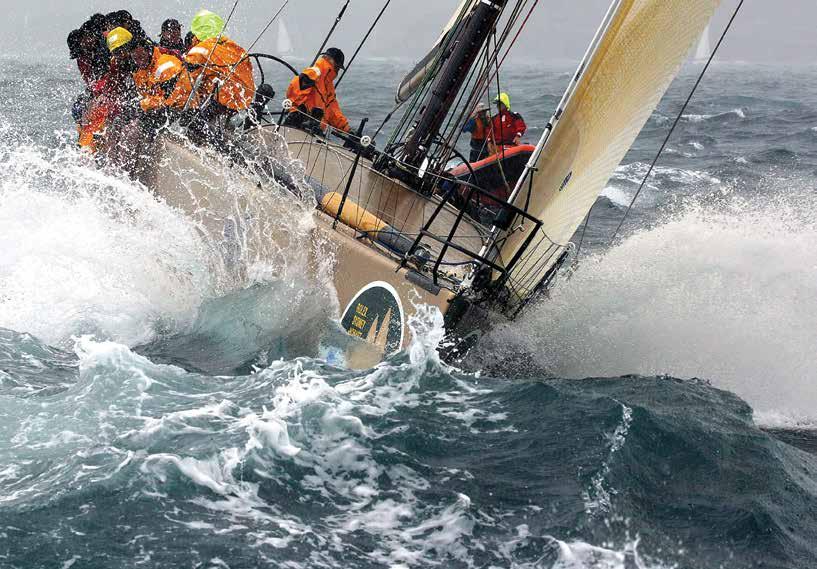
70 yEARS
5 November 2014–1 March 2015
Marking 70 years of the famous Sydney to Hobart Yacht Race, this intimate photographic exhibition offers a taste of the theatre and evolution of one of the toughest ocean races in the world.
Working from helicopters and fast chaseboats, photographers can capture the extremes of action plus the contrasts of the vast panoramic setting. The individual styles of each photographer compared with archival images offer a taste of the drama, while plans of past and present yachts show just how far the vessels have evolved. This international sporting event starts in Sydney Harbour on Boxing Day and finishes before New Year’s Eve
in Hobart, Tasmania. Beginning in 1945 –when a cruise to Hobart became a contest among friends from the Cruising Yacht Club of Australia – it is now a professionally managed race. Drawing together amateur and elite sailors, production yachts, recently superseded designs, historic craft and state-of-the-art racing yachts, the fleet assembles each year to test human ingenuity, determination, skill and luck in the theatre of the untamed ocean.
the Derwent River
02 Voyage to the Deep graphic by Thylacine Design.
03 AE2 and crew at Portsmouth, England. ANMM Collection
04 Queenscliff, 1975. Roger Scott. ANMM Collection Reproduced courtesy the photographer
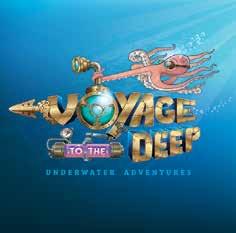
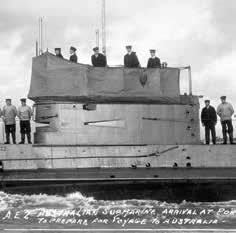

10 December 2014–26 April 2015
Voyage to the Deep is about undersea exploration and adventure – of the kind immortalised by Jules Verne’s novel 20,000 Leagues Under the Seas and celebrated in popular culture from Jacques Cousteau to the Octonauts.
This fantasy-themed exhibition for families and children aged 2–10 years includes interactives, activities, dress-ups, engaging displays, puzzles and a climb-aboard model submarine. Visitors will learn about the underwater world as it might be seen from inside an imaginary deep-sea exploration vessel, and how today’s technologies are discovering more about its mysteries.
Until 1 February 2015
Come eye-to-eye with whales at sea in this remarkable photographic exhibition. American Bryant Austin is the only photographer in the world producing life-size images of whales, including dwarf minke whales from the Great Barrier Reef, sperm whales from the Caribbean and humpbacks from the South Pacific. Austin takes up to three months to become accepted into a group of whales then, using just a snorkel, he floats at the surface waiting for a whale to come less than two metres from his camera lens. At this distance, all of its true colours, subtle tones and fine details can be captured. Funded by the USA Bicentennial Gift
Until 22 February 2015
If you’ve ever wanted to pilot an airship, ride on a hovercraft or load a cargo ship, now is your big chance! Going Places is an interactive science exhibition that explores the technology humans have developed for travel, and the way that travel has shaped society. Learn how ingenious designs have overcome Earth’s awesome size and natural processes and see pioneering technology to make the farthest reaches of our planet accessible. Going Places – produced by Scitech, Perth, Western Australia
ANMM travelling exhibitions
Waves & Water –
Australian beach photographs
Tweed River Art Gallery
19 December 2014–15 February 2015
Iconic photographs from the Australian National Maritime Museum’s collection capture Australian beach culture from the 1930s to 2000: sunbathers, swimmers, surfers, surf lifesavers and ocean pools, by Max Dupain, Jeff Carter, Ray Leighton, Ian Lever, Roger Scott, Anne Zahalka and Narelle Autio.
Until 3 May 2015
The Royal Australian Navy (RAN) played a significant role in World War I, and served in all theatres of war, from the Pacific and Indian oceans to the Mediterranean and North seas. Its story will be told through the experiences of sailors – the drudgery of patrolling and blockading, the intense actions of battle, and the incredible voyage of submarine AE2 through the Dardanelles Strait – and via first-hand accounts from diaries and journals, objects, and film and interactives.
Photographs from the IrO and IcEm
Liverpool City Library 22 November 2014–28 February 2015
Documentary photographs highlighting the work of the International Refugee Organisation (IRO) and Intergovernmental Committee for European Migration (ICEM) in the 1950s. The images capture in vivid detail the anticipation and anxiety of European migrants coming to Australia in the turbulent years after World War II.

01 The old and new slipways, boatshed and dwelling are still on the shore line of Boston Bay and additional museum buildings have been added behind them.
02 A recent image of the slip area and cradle. The slip cradle and winch can handle boats of up to 11 metres length and 3 metres beam.
All images courtesy Axel Stenross Maritime Museum
A Finnish boatbuilder who settled in Port Lincoln gave his name to a distinctive museum that celebrates his life and South Australia’s rich maritime history. Museum secretary Andrew Chappell shares its story.
a X eL sT enrOss Was BOrn aT F in BY, Finland, in 1895, the youngest of eight children. He went to sea at the age of 12 as a cook in Baltic traders and later began boatbuilding, spending the first two years of a five-year apprenticeship at his father’s shipyard in Finland. i n 1924 he joined the four-masted barque sV Olivebank and sailed the world. Of the many ports he visited, Port Lincoln particularly appealed to him; in march 1927, on his third visit, he and a shipmate, sailmaker Frank Laakso, decided to stay there. The ship’s captain was reluctant to pay a xel off, as he was a hard and competent worker; on a xel’s discharge certificate, Captain Troberg wrote, ‘He carried out his duties to my satisfaction and with imagination and neatness’.
a xel and Frank spent the rest of their lives living and working together, along with a succession of dogs, cats and chickens, and later a xel’s wife, norma. They became
the principal boatbuilders in the area, producing some 44 boats – the largest measuring 45 feet (14 metres) – and about 250 dinghies, all built of wood. From 1940 their business was located on the site where the museum now stands. Frank died in 1975, aged 75; a xel was still making boats until his death in 1980 at the age of 84, after which friends and local enthusiasts decided to keep his memory alive and turn his premises into a museum. The corrugatediron complex includes the living quarters of a xel, Frank and later a xel’s wife norma, together with a blacksmiths’ shop and boatbuilding shed.
The main aim of the museum is to preserve, display and interpret items relating to a xel’s boatbuilding, but the maritime collections have expanded over the years to include the history of fishing industries, shipping, recreational boats and yachting around this part of south australia.

MARITIME HERITAGE AROUND AUSTRALIA pORT LINCOLN
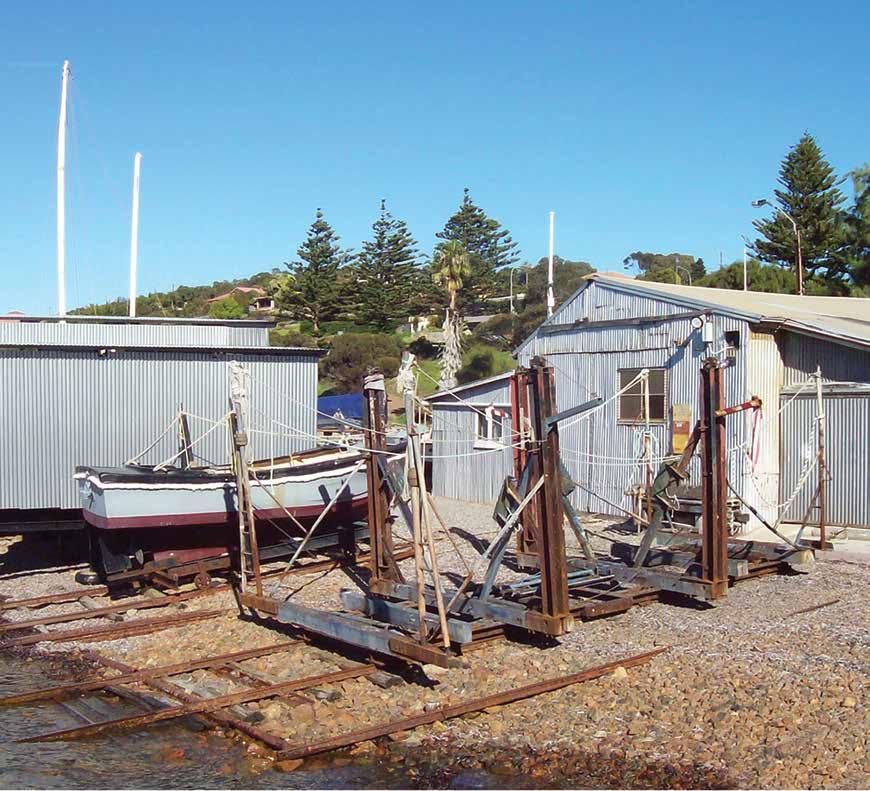


Axel was still making boats until his death in 1980 at the age of 84
01 A rare photo of Axel Stenross (left) and Frank Laakso together, working on a wooden dinghy. The boatshed has changed very little since the death of both men and remains a focal point of the museum.
02 The Hecla stabilisation work is proving to be a new visitor attraction for the museum, and coincides with increasing numbers of cruise-ship visitors to Port Lincoln.
03 Built by Axel in 1936 for his own use, Rio Rita is also on the Australian Register of Historic Vessels. As well as being a working motor launch it was popular with local residents as it cruised Boston Bay and took them to Axel’s ‘chop picnics’. It is now a static display at the museum.
a feature of the museum is its collection of 32 boats with local, state or national significance. Five boats in the collection are on the australian register of Historic Vessels: City of Adelaide (1894), Hecla (1903), Rio Rita (1936), Nabilla (1945) and Edna Felice (1969).
The wreck of the steam-powered jetpropelled lifeboat City of Adelaide (HV000093) is believed to be the only surviving example of just three boats of this kind ever built, and was declared a historic shipwreck in the late 1970s.
Hecla (HV000106), the last wooden ketch to operate in the saint Vincent and spencer gulfs, was bought by the museum in 1987 and is a static outside exhibit. it has been restored and is supported by a steel cradle built with financial assistance from the australian national maritime museum and the Commonwealth Department of the a rts. The ketch was built at Port adelaide in 1903, so was 111 years old when stabilisation works started several months ago. masts, deck and all superstructures were
removed to enable timber replacements in the hull. The sagging hull has been jacked up and returned to its original lines. Decayed timbers are being removed; the remainder will be treated with a preservative solution and additional new timbers are being fitted. This stage of the works will be complete when the hull has been re-decked and sealed against rainwater intrusion. next year the members hope to proceed with replacement of masts, rigging and fixtures true to the original designs.
Rio Rita (HV000175) was a xel’s personal launch from 1936 until he died in 1980. He also made it available for charter at Port Lincoln. When a xel and Frank moved premises in 1940, it was Rio Rita that towed nearly all of the shipyard’s buildings, equipment and fittings between the two locations on board a raft built by a xel. a carvel planked, canoe-sterned launch about 9.75 metres long, Rio Rita is on display out of the water. it remains in the same configuration as when it was launched, with an open cockpit aft of the low cabin house and saloon.

Edna Felice (HV000482), built in 1969, is the last fishing boat built by a xel and Frank. a xel had initially declined the order, feeling he was now getting too old for boatbuilding, but he was persuaded over a few drinks to accept the commission. Edna Felice reflects the typical workmanship and robust construction a xel and Frank put into their wooden boats, and shows details that were hallmarks of their methods. it is now housed under cover outside the boatshed where it was made, and retains nearly all of its original integrity.
Nabilla (HV000083) is an example of a wooden tug built for service in World War ii and afterwards used by the south australian Harbours Board. it was used to tow supply barges among the island groups around Papua new guinea and nearby once they were regained from Japanese control. i n 1954 the south australian Harbours Board purchased five such tugs, and Nabilla found use in Port Lincoln for many years before being transferred to other ports. i n 2006 Nabilla went on display, out of the water, at the museum.
a mong the museum’s other vessels on display is Capt Matthew Flinders, a montague whaler built in 1941. For many years it was the training boat for the Port Lincoln naval Cadets, after which it was signed over to the museum and beautifully restored by a volunteer member. it recently featured in a film about the gallipoli landings that is being made for release next year – 100 years after the real event.
a s well as the vessels, the museum houses some 2,700 objects and artefacts, among them some of the shipwright’s tools that a xel brought with him from Finland and which he had inherited from his grandfather. The museum also has one of the largest and most comprehensive displays of knots and splices in australia. several collections of historic photographs (totalling more than 15,000) have been passed to the museum for safekeeping. Volunteers have digitised most of the images.
a new item on display is a maquette (miniature statue) of Captain matthew Flinders and his famous cat Trim. it is one
The museum houses 2,700 objects and artefacts, among them some of the shipwright’s tools that Axel brought with him from Finland
01 Some 6,000 volunteer hours over the past four years have brought the former tug Nabilla up to its present condition.
02 The museum’s large display building houses four restored dinghies, the Montague whaler, a replica of another trading ketch called One and All, two small yachts and the crystal Fresnel lenses of an earlier Cape Donington lighthouse.
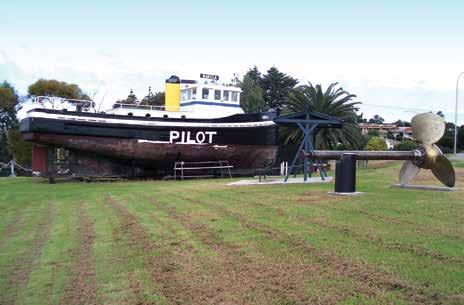
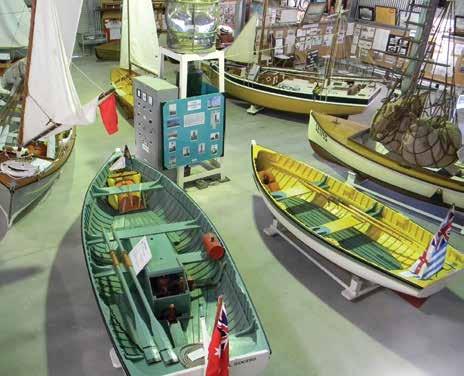
The wreck of the steam-powered jet-propelled lifeboat City of Adelaide is believed to be the only surviving example of just three boats of this kind ever built
of 75 maquettes made and sold to help pay for a larger statue, unveiled at euston station, London, on 18 July this year (see story in Signals 108). The statue was created by sculptor mark r ichards to commemorate the explorations, surveys and mapping of australia by Captain Flinders, who died in London 200 years ago. The museum’s maquette was donated by the Lang Foundation, a philanthropic organisation based in adelaide.
i n may 2014 the museum joined with the Port Lincoln Caledonian society and City Council to commemorate the 175th anniversary of the first landing of settlers at Port Lincoln. more than 250 visitors filled the main display building for the ceremony. about 25 active volunteer members run the museum, with operating income provided by entry fees and donations, as well as fees from a slipway that services small vessels. The museum also receives community support from local businesses and tradespeople, and some outdoor maintenance by City Council.
History sa last year provided a grant of $7,500 towards the cost of a new collections store, which will allow the museum to change and cycle parts of its displays, and to keep other items in secure storage. Other grants this year have been used to purchase iPads with stands, and to prepare audio-visuals to run on them.
Ours is a ‘hands-on’ museum with minimal glass and plastic separating visitors from exhibits, and which evokes the lives of two respected locals and the seafaring history of their adopted home town. The museum is open Tuesdays, Thursdays, saturday afternoons and sundays, and we hope to welcome you there.
To contact the museum: phone 08 8682 3624 email asmm6@bigpond.com www.axelstenross.com.au
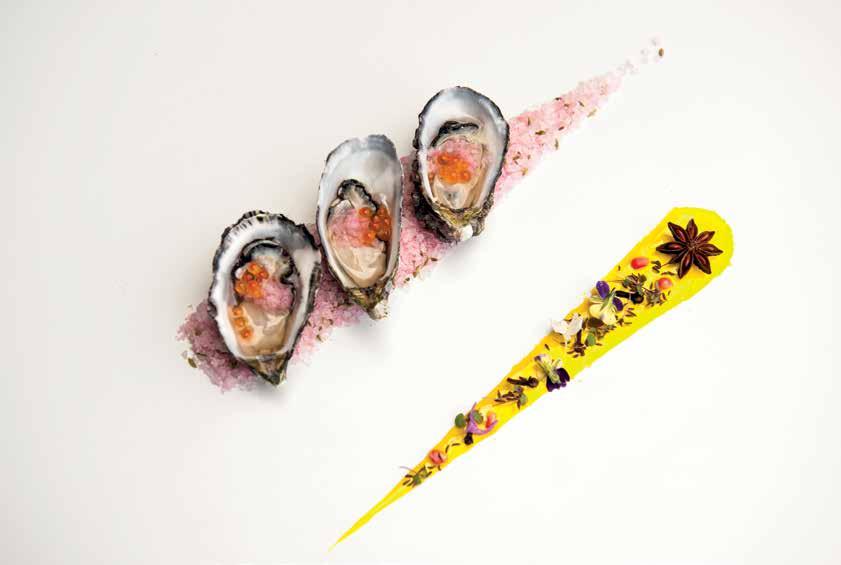
From banquet to boutique scale events in any style, you’re assured of a unique and memorable experience with beautifully presented seasonal menus crafted from premium quality, locally sourced produce, impeccable service, support and a host of generous inclusions.
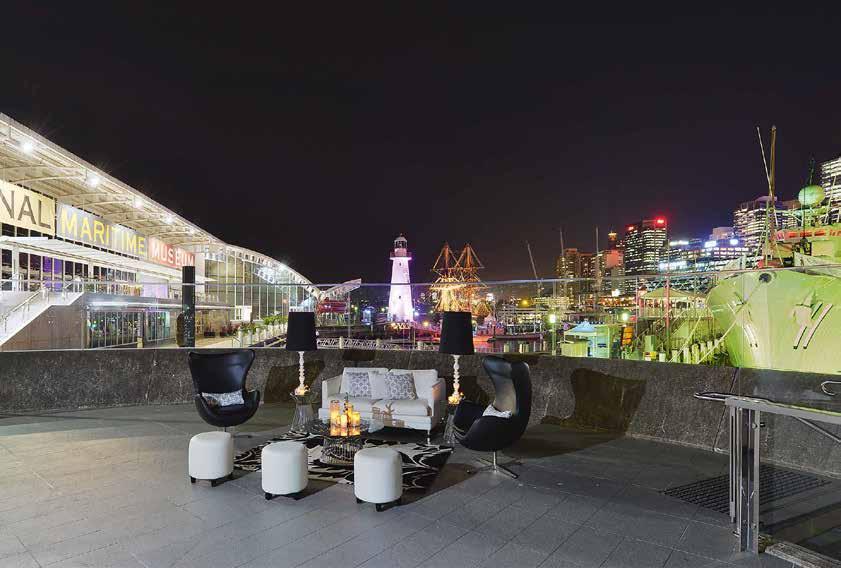
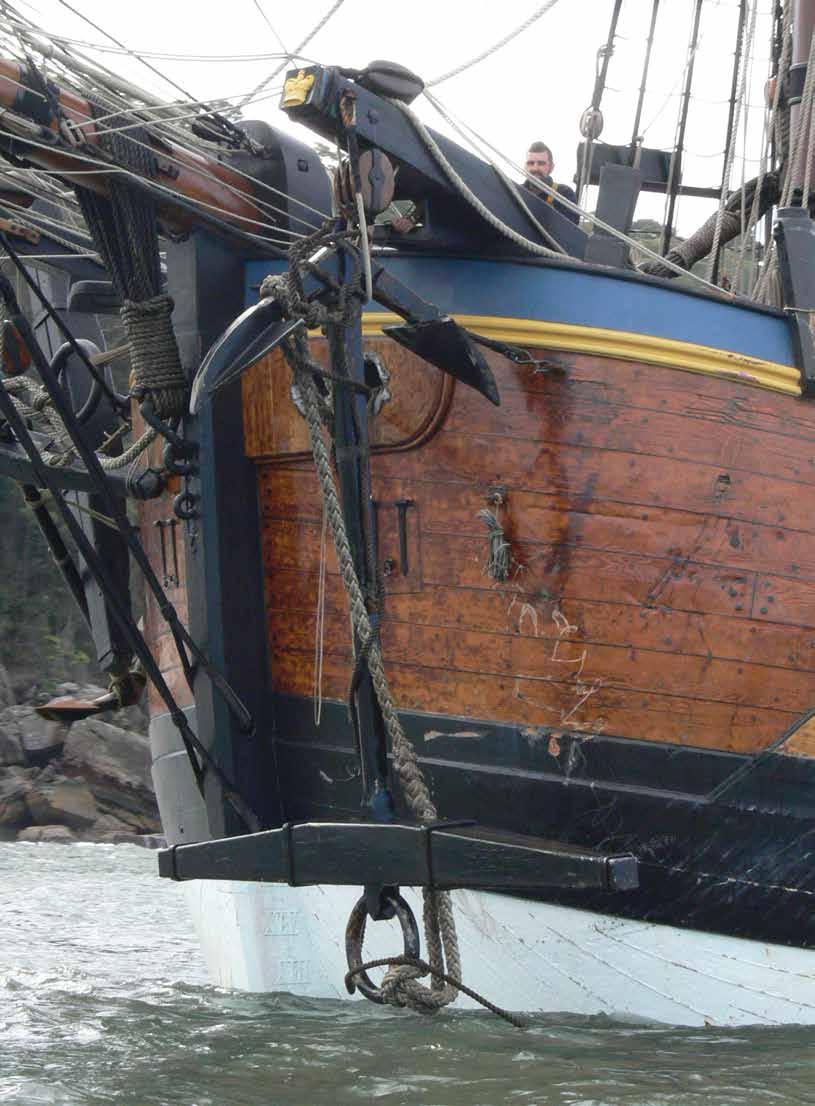
01 The 2.3-tonne bower anchor posed some challenges when it emerged from the water upside-down. Photograph Matt Renner
02 Learning about staysails with the aid of topman Eddie Micenko’s chalk diagrams on deck. Photograph Eden Alley-Porter

MODERN-DAy VOyAGES OF SCIENCE AND DISCOVERy
The museum has spent the last 12 months or so developing a sailing program for our HMB Endeavour replica. The ship has been overhauled and plans made for a series of trips themed around different sciences and featuring guest experts, including botanists and an astronomer. Endeavour ’s master, John Dikkenberg , gives a round-up of this season’s voyages and a preview of next year’s program.
a FT er CLOse TO a Y ear in POrT, it was great to finally get the ship off the wharf for a series of voyages. The first trip of the season saw a small team of voyage crew and supernumeraries gather in the waist of the ship for their introduction to Endeavour and their new shipmates. a s always, they looked a little overawed by the complexity of the ship but i was confident that their sense of confusion would soon pass. Two hours later, they were getting their hands very dirty as they helped bring in the anchor cable, thick with mud from the bottom of sydney Harbour.
The plan for the week was to spend the first day at anchor, undertaking a series of training exercises and safety drills, and then to sail each subsequent day and anchor overnight in either sydney Harbour or Broken Bay. This first trip was intended to be a relatively gentle introduction to square-rig sailing, but nature’s unpredictability overturned this plan. The second day of the journey –coincidentally the second day of spring – dawned sunny and light, but with a definite promise of wind in the air. a s the ship cleared sydney Heads,
the breeze fell away completely before swinging to the south and building. With the wind now on her quarter, the ship loved it and quickly settled into her usual gait. a s Endeavour passed Barrenjoey Light, in sydney’s north, a few short hours later, it was blowing 25 to 30 knots.
We have it easy compared to Cook’s sailors, but in a ship that is such an accurate replica, there are still countless tasks that require tough physical labour
By the time we had anchored in Cowan Creek, we were experiencing 40- to 45-knot bullets racing down the river valley. it didn’t take long for our ‘small’ (700-kilogram) stream anchor to break out of the sea bed, and by 8 pm the ship was dragging. There followed a long, cold, wet night
in which the larger 2.3-tonne bower anchor was prepared using blocks, tackles, davits and hard work, while the seas offshore reached heights of 11 metres. The anchor was finally deployed around 3 am.
We have it easy compared to Cook’s sailors – a hydraulic windlass does some of the heavy anchor hauling – but in a ship that is such an accurate replica, there are still countless tasks that require tough physical labour and highly skilled use of blocks and tackles by a coordinated team to achieve a result.
With continued poor weather, we spent day three at anchor, and some of the officers spoke to the voyage crew on topics such as square rig sailing, navigation, maritime history and the history of the Endeavour replica. When we set sail again on the fourth day, the seas were still about four or five metres as we cleared Barrenjoey once more, but the sail was certainly exhilarating. With no let-up in the strong southerly breeze, the final night saw the sails brought in and a long slow motor back to sydney.
Week two brought much better weather for sailing, with the wind still in the south. Our destination was newcastle, with another

Cowan Creek excursion included on the way so that Endeavour could contribute to the royal Botanic gardens’ understanding of that region. The ship carried two botanists, Dr matt renner and Dr Trevor Wilson, who gave lectures on the Broken Bay area and led excursions ashore to collect botanical specimens. a s Trevor explained, one of the exciting things about going ashore along the Hawkesbury r iver is that you might just find a plant species that hasn’t previously been collected or identified.
Almost everyone on board learnt to take the sun’s altitude and work out their latitude from a noon sight
For Endeavour it was a cast back in history, as Lieutenant James Cook’s original Endeavour, on its journey of scientific discovery between 1768 and 1771, was the repository for a vast number of botanical specimens previously unknown to europeans. With a large amount of plant
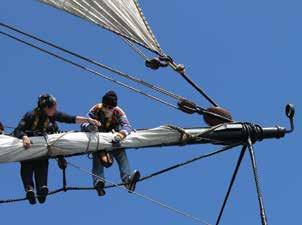

material on board, we began to weigh anchor on the morning of 10 september. a s our bower anchor broke the surface, however, we found that the hawser had wrapped itself around one fluke and our two-and-a-half-ton anchor was upside down. There followed another protracted manoeuvre as the anchor was righted and brought on board.
The sail to newcastle was brilliant, and with the breeze remaining south we reached out from the coast and back several times to ensure we did not arrive early. at the appointed hour, we sailed into the pilot boarding ground, took in sail and reluctantly flashed up the engines. entering newcastle, we exercised the tradition of emptying our guns by firing a blank from each of our 4-pounder cannons. a s tradition demands, the local battery at Fort scratchley returned our salute with several rounds from its m k 7 guns and its 80-pounder. There was a definite smell of black powder in the air. newcastle turned on both the weather and the crowds, and over one weekend and two half days we had about 3,000 visitors to the ship at her berth alongside Queen’s Wharf, plus several school groups.
The following week Endeavour sailed with a brand new crew to Port stephens, back to Cowan Creek and then to sydney. unbelievably, the wind was still from the south and the prediction was for little if any change. Where the focus of the previous week had been on botany, this leg of our program concentrated on astronavigation and astronomy. a lmost everyone among the voyage crew and supernumeraries learnt to take the sun’s altitude and work out their latitude from a noon sight.
Despite the gloomy outlook for making ground to the south, we managed to play the small shifts in wind direction and on a couple of nights, used the periods of darkness to motor down the coast. On cue, we anchored for a final time in Cowan Creek and were joined by renowned astronomer Dr Fred Watson from the australian a stronomical Observatory. He gave an outstanding series of lectures, instructed voyage crew in the use of sextants, and led a sweep of the heavens using the telescopes we carried on board for the event.
The next series of voyages began in late October when the ship sailed south for

eden, joined by special guest, whale expert geoffrey ross. On this trip we participated in the national whale count – recording what species we saw, where they were seen, and their abundance and behaviour. We also sighted dolphins, albatross, sunfish and seals, and took part in the eden Whale Festival. Despite very poor weather, the town turned out in large numbers to see the ship and the visit was an outstanding success. The voyage home saw a variety of winds and four days of exceptional sailing.
a fter their return to sydney in november, the crew will enjoy a break before coming back on board for australia Day celebrations on sydney Harbour in January, and then almost six weeks in Tasmania.
The Tasmanian voyages, themed around maritime and convict history, are proving to be very popular, and will visit such destinations as maria island, Port a rthur, Hobart, Port Davey, macquarie Harbour and adventure Bay. The ship will also participate in the australian Wooden Boat show and the parade of sail in Hobart. For those who read a rthur r ansome’s Swallows and Amazons as children, Tasmania is a ‘must see’.
Home from Tasmania in march, the ship is due to go to garden island for her survey docking, a coat of anti-fouling paint and a little work below the waterline. There will be opportunities for museum members to visit the ship when this event takes place.
While all this activity is under way, we are developing the ship’s next sailing program. The voyages for the latter half of 2015 are all likely to be to destinations with a strong connection to the Endeavour legacy. a s soon as we can, we will be posting details on our web page. We hope to see you on board.
John Dikkenberg has been at sea or in the maritime industry for most of his working life. He joined the Royal Australian Navy in 1966 and, after graduating, served at sea in destroyers and the troop transport HMAS Sydney before joining the submarine service in 1972. He subsequently served in all the Australian submarines and the British submarine HMS Orpheus. He was the Commander of the Australian Submarine Squadron from 1989 to 1993. John joined the Sydney Heritage Fleet in 2006 and frequently sailed as captain of the barque James Craig He became captain of Endeavour in May 2013.
For more information on next year’s voyaging program, see anmm.gov.au/endeavourvoyaging
01 Voyage crew ashore, preparing to collect botanical samples of the Hawkesbury area. Photograph Matt Renner
02 Furling the topgallant sails. Photograph Eden Alley-Porter
03 Third mate Penny Kealy and supernumerary Bill Morris, an expert on sextants, measure the angle of the sun at its zenith. Photograph Eden Alley-Porter.
04 Voyage crew at the helm. Photograph Eden Alley-Porter 04
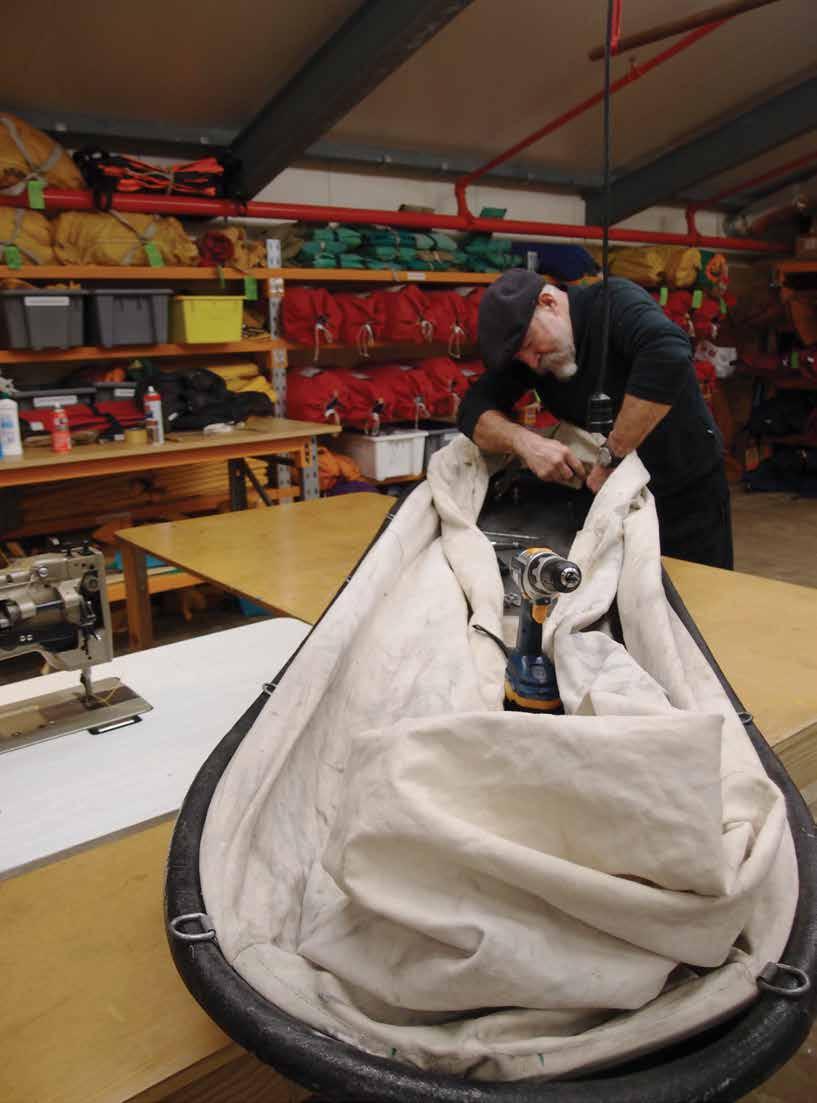
‘Antarctica is a harsh continent … but with good planning and preparation, fieldwork usually goes very smoothly and we have a good time’
As well as scientists who conduct research and fieldwork, all Antarctic bases employ a range of highly skilled support staff who assist the scientists and maintain the bases year round. In the final of her series of articles from Scott Base, former ANMM conservator Sue Bassett talks to some of the old hands about the challenges and pleasures of working in Antarctica.
WH en C a PTain rOBerT Fa LCOn sCOTT brought his Terra Nova expedition to a ntarctica in 1910, his aims were mainly scientific – even scott’s plan to reach the south Pole involved conducting science along the way. scott wanted to put together and lead the best equipped and most skilled scientific expedition ever to leave Britain for polar regions … and that he did, covering fields that included geology, physiography, biology, physics, meteorology and surveying. unknowingly, he was paving the way for the future.
under the current a ntarctic Treaty, which came into force in 1961 and to which 46 countries accede, all work and activities carried out in a ntarctica today are for
peaceful purposes only, with scientific research and international scientific cooperation being the priorities.
Here in the ross sea region during the summer season, when there is continuous daylight and regular aircraft access, new Zealand’s research base, scott Base, accommodates 80 scientists and support staff, while the nearby us base, mcmurdo station, houses about 1,200. Therefore, many of the people we cross paths with here, albeit briefly, are carrying out ground-breaking research in a broad range of scientific disciplines, not least of which relates to polar system dynamics and climate change. But behind these scientists, and facilitating their on-ice activities and research, are teams of highly skilled support personnel who, in decreased numbers, also stay on to maintain the base operations throughout the long dark a ntarctic winters. During these times a ntarctica new Zealand’s dedicated team at scott Base also supports us – the a ntarctic Heritage Trust’s winterover conservators doing our bit for a ntarctic science and working to preserve the artefacts left by the early expeditions of scott and shackleton.
One such person is scott Base’s winter field support officer, Brian staite. Over the past 20 years, Brian’s done 17 summers and three winters on the ice, with quite a few other shorter stints in between. His role is to support scientists in data gathering, and he’s been a field guide, mountaineer, station manager, and leader of survival training and search-and-rescue training.
Of the scientists he supports, Brian says: ‘i get to be with some of the smartest people on the planet who spend their lives looking for evidence and proof to support an amazing variety of theories and hypotheses that i would not normally have ever known anything about’. He adds: ‘a nd i like them to be happy! … i’m not looking for adventure; we are here for business as usual. There are strong beliefs that a ntarctica is a harsh continent … but with good planning and preparation, fieldwork usually goes very smoothly and we have a good time’.
Brian remembers all field trips with great clarity and in intense detail – such as his five expeditions with the german program as field guide, the surreal and spectacular scenery experienced on a geoscientific expedition to Queen maud Land, and the addictiveness of the sharpening focus and clarity that come with avoiding crevasses or sea-ice cracks, or getting the shelter up before a storm arrives – but he says the days on base can blur a bit. During this winter at scott Base, when not venturing out to monitor sea-ice thickness or pressureridge activity, Brian could be found at the sewing machine or workbench indefatigably maintaining field equipment such as tents, cooking kits and sleds, as well as designing and producing ingenious bags for every purpose, and helping others with their needs and projects.
While his a ntarctic experiences inspired him to undertake a fine arts degree and become a practising artist when not on the ice, his on-ice recreation is usually cross-country


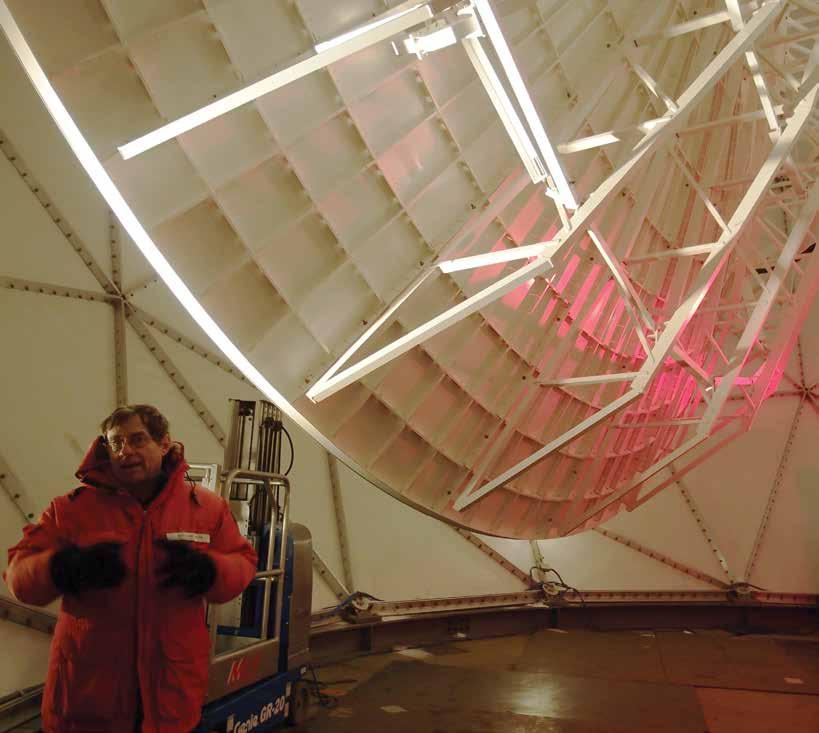
01 Keith ‘Grump’ Roberts, in the communications equipment room at Scott Base, working on the testing phase of a volatile organic compound (VOC) control unit for a valve used to detect the presence of VOCs in the base’s two powerhouses.
02 Ray Funk at NASA’s McMurdo Ground Station explaining the process of data acquisition from a passing MetOp satellite. These polar-orbiting meteorological satellites provide numerical weather prediction models with high-resolution global atmospheric temperature and humidity structure for use in high-accuracy weather forecasting. Data are also used in the study of atmospheric chemistry, and provide longterm records for climate monitoring.
03 Ray inside the geodesic dome above McMurdo Station as the 10-metre dish antenna springs into action to track and acquire data from an orbiting satellite as it passes.
skiing, which he describes as ‘just the best thing to be doing … even in winter a dark starry day can be glorious.’ Topping that, though, was bringing his surly moonlander fat-tyred bicycle to the ice this winter: ‘it’s been just so cool. i get a huge grin like a big dog with his head out the car window. a nd at -52 º C the bike keeps on trucking!’
a nother stalwart is scott Base’s winter telecommunications technician, Keith roberts, known affectionately as grump … although he’s not at all, really, once you get to know him. grump has done 11 on-ice winters and six summers – more than 3,000 days in total. While he finds the responsibility of maintaining the lines of communication out of scott Base challenging at times, he is inspired by the people he meets on the ice and by the everchanging beauty of the place.
He’s had some memorable experiences over the years, including having to spend the night on mt erebus when heavy cloud cover between the repeater site and mcmurdo station prevented the planned helicopter pick-up. He says: ‘sitting on a rock at 11.30 at night in the sun looking at full cloud cover below and cloudless, blue sky above was quite remarkable’.
He adds: ‘Taking an overnight camping trip to Cape Crozier and getting caught in a blizzard for three days was also memorable. spending more than a few hours in a sleeping bag inside a polar tent that was slowly becoming smaller as the weight of the snow pushed against the walls, all the while getting covered by fine snow being driven through the double wall of the tent by 90-knot (167-km/h) winds, certainly featured high on the “perhaps-not-to-berepeated” scale’.
When i asked grump to describe something about his work here that most people would
probably find surprising, he responded with: ‘Common sense dictates that you don’t put cold metal in your mouth, yet when you are up an antenna tower, wearing gloves most of the time, inside your mouth is the only place to keep small nuts and bolts while warming your hands again inside thick gloves’. The rest of us would probably put that one firmly on our ‘perhaps-not-to-be -experienced-at-all’ scale!
grump keeps a close eye on all things telecommunications-related, runs the scott Base Fm radio station, and is fire chief. When not concocting the next fire/ emergency drill scenario or preparing another splendid brew in his beloved teapot, grump could be found spending much of his downtime during the winter darkness cosying up to the fire with cryptic crossword puzzles and sudoku.
Brian and grump are just two of the 11-strong scott Base team to winter-over this year, alongside our team of four conservators. Over the hill at the much larger mcmurdo station, a team of 145 people do the same in support of the united stated a ntarctic Program, a branch of the national science Foundation.
additionally, nasa has its permanent mcmurdo ground station there, which is part of the near-earth network of satellite tracking and data acquisition stations falling under goddard space Flight Center, maryland, and Wallops Flight Facility, Virginia. i n a large white geodesic dome on top of a hill overlooking mcmurdo station stands the busiest near-earth antenna in the world, tracking the 30-plus international polar-orbiting satellites that pass overhead each day and downloading and transmitting their data around the world. r ay Funk is one of two nasa engineers based there throughout the
In a large white geodesic dome on top of a hill overlooking McMurdo Station stands the busiest near-earth antenna in the world
winter to ensure these routine automatic operations run smoothly, and to perform maintenance, testing, upgrades and operations on the electronic systems used to track orbiting spacecraft.
r ay is a relative ‘newbie’, having done two winters and a summer in a ntarctica, where he is on call 24/7. He finds one of the biggest challenges is the extra planning and lead time needed for even simple tasks, particularly during the flightless winter season: ‘a minor or common item that you didn’t think of because it is so readily available back home may not be available here … and there’s no r adio shack nearby’.
When in a ntarctica, r ay misses time with his family, the beach and pool, fresh fruit and vegetables and other food choices; but when away he misses the uncomplicated and relaxed social interactions he enjoys on our two neighbouring a ntarctic bases. i nspired by nature, which he describes as ‘indescribably raw here, and beautiful at the same time’ he explains that ‘in extreme weather we do actually sometimes run rope lines between buildings to facilitate travel. That’s not just in the movies!’ Further, of the large numbers of contract staff who support the scientific research carried out at mcmurdo station, r ay says: ‘i’m often surprised to find people working well below their education and training level here, only to return year after year not because they can’t find other work, but because they want to return’.
But most of us are not at all surprised by that. it’s the highly contagious lure of a ntarctica … and we get it.
To learn more about the Antarctic Heritage Trust’s work, go to nzaht.org or visit the Trust’s Facebook page facebook.com/antarctic.heritage.trust
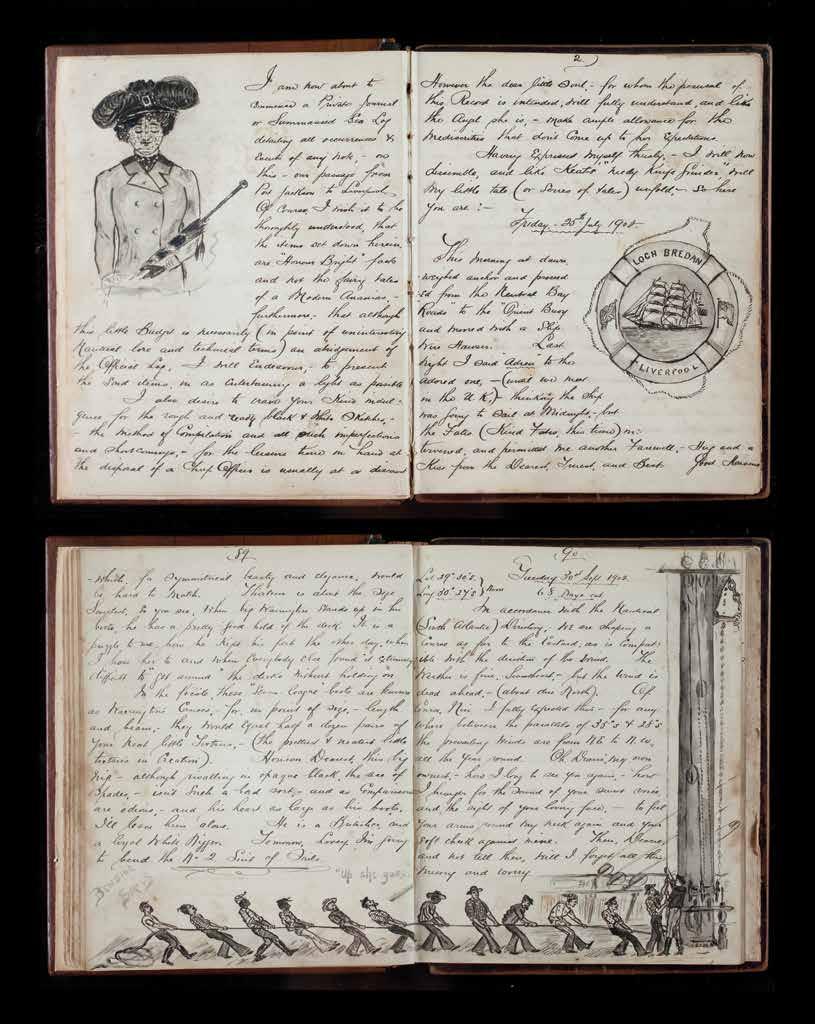
His characterisations of Nin are incredibly strong and vital, yet we finish with no clue as to her actual identity
Traditional stories of maritime history often focus on robust men driving nations forward with grit, adventure and ambition, but the recent acquisition of a seaman’s log for the National Maritime Collection shows a more personal view. It reveals the inner life of an officer, surprising us with its characterisations, wit and expressions of love for a woman farewelled on the dockside. Senior Curator Daina Fletcher relates the story.
rOBerT rOBerT sOn sm YTH e sailed as chief officer from sydney on 25 July 1902 on the Loch Bredan, carrying general cargo to Liverpool, england He kept a journal, recording the voyage and its routines and vagaries with an experienced and knowledgeable eye. What makes his account so compelling and delightful, however, is that this narrative is wrapped around an intensely personal ode to his beloved, his longing for her expressed through heartfelt exhortations and beautifully sketched portraits.
The chronicle is deftly illustrated, robertson exhibiting a quick pen and lively style. His characterisations of nin are incredibly strong and vital, and the journal is peppered with his ink portraits of her in both real and imaginary scenarios, yet we finish with no clue as to her actual identity. she remains anonymous and elusive.
The writing is so intense that upon opening the journal’s timber covers the reader is immediately hooked and the 112 years since it was written disappear rapidly as we are reminded of our first flush of love. This chief officer is clearly smitten:
We eagerly follow smythe’s descriptions of a seafarer’s life, his observations of the captain and crew as they manoeuvre the vessel across the southern Pacific, dodging ‘crystal islands’ of ice to Cape Horn and north, and always at the behest of the god of Winds. Hove to in terrible storms in the southern ocean, smythe ponders, why call it the Pacific?:
the Geographical Ass … who dubbed this stretch of Salt Water – ‘the Pacific’ – is guilty of the biggest lie … Gale blowing with Hurricane force and accompanied by terrific Squalls. Not a single day passed without shortening down or reefing; and dry clothes and bedding were luxurious Commodities … (sunday 31 august, 38 days out, page 36)
01 (top) Opening pages of the journal: ‘I am now about to commence a Private Journal or Summarised Sea Log…’; (bottom) 29 and 30 September 1902: ‘Bending sails’; ‘Up she goes’.
‘as i keep the lonely watch ... and walk the deserted poop ... ‘eight bells to eight bells’ in the watch below, so angel mine – asleep or awake, you are never out of my thoughts.’
(Wednesday 29 October 1902, 97 days out, page 152)
The ship travels through the tropics, first ahead of its anticipated 90-day passage and then falling behind, becalmed in the doldrums watching steamers pass. smythe laments the spoiling of stores. a sydney butcher named Playfair had supplied the vessel in port with fresh meat and vegetables for use in harbour, and also catered for the voyage with salt beef and pork and preserved tripe. This latter deal proved fraudulent: ‘Three barrels of beef (380 lbs each), two of pork (240 lbs) and all the tripe were this day committed to the deep … Playfair was the butcher’s name, but by the Lord Harry, – it should have been “Playfoul”.’ (monday 22 september, 60 days out, page 76)
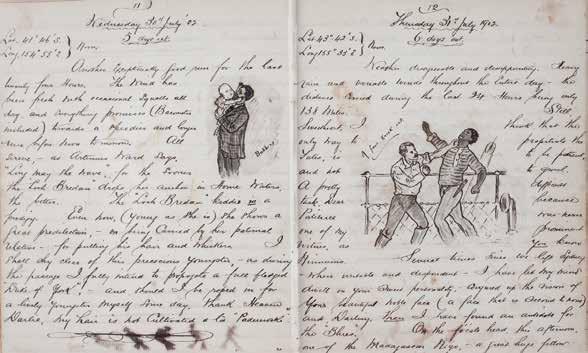
Smythe recounts the trials of working at sea and the romantic views of those on terra firma as opposed to the reality
smythe also provides nin with technical notes: on longitude and soundings, taking position, observations, and sighting and signalling passing ships. He enthusiastically describes natural phenomena such as the aurora australis, icebergs looming ‘2 miles long and 1 mile broad’, waterspouts, and the birds, fish and albatross that the ship encounters.
Besides nin, the other main characters are the master, officers and crew. smythe spends some time characterising his fellow shipmates. Captain Thomas Williams has been in command of the Loch Bredan since 1899. a lso on board are his wife Catherine and adored six-month-old baby Betty, the ‘Little Loch Bredan kiddie’. Both lighten the mood. m rs Williams plays the gramophone on deck, while the young child amuses with her antics yet occasionally tries the nerves of those around when teething.
When the ship encounters snow after rounding Cape Horn, a snowfight ensues:
The ‘old man’ with his usual Eccentricity gathered a bucketful of Snow from the poop deck and carried it below, for the purpose of letting the ‘Kiddie’ dip her feet in it ; – So that he would be able to say, in years to come, that ‘She was paddling amongst the Snow, when she was 6 months old.’
Funny isn’t it?’ (monday 15 september, 53 days out, page 63)
Captain Williams, a Welshman, is drawn as a likeable character. a lthough referred to as ‘the old man’, he is just 30, only a year older than smythe. Williams deferred to his chief officer during a two-week gale in august, disappearing down below. ‘He was sensible, and knew what Comfort was, at all events, – or to use a happy a merican metaphor, “There were no flies on him”’ (31 august, 35 days out, page 37). Williams furnishes smythe with two fowl and a bottle of whisky for his 29th birthday on 2 november, 101 days into the voyage, and happily joins in the crossing-the-line ceremony and other rituals on deck.
second mate nelson, although lacking his certificates, is drawn as a ‘gentlemanly ropehauler’ of some talent who ‘shovels the tucker into his mouth with his knife’.
surprisingly to smythe – who regards himself as somewhat superior – nelson shares acquaintances with smythe and nin and recounts racy anecdotes from the north sydney ‘push’. smythe encourages him to study for his formal certificates. Third mate Bloomfield, smythe remarks, is not as competent a sailor, observes drawing-room etiquette even in a storm, and is subsequently discovered to have aristocratic connections.
The crew is sketched in broad brushstrokes as a mixture of a nglo-i rish and mauritian or south i ndian seafarers of mixed ability, experience and morality. We observe their movements – daily watches, hauling ropes, manning yardarms, cleaning decks, tarring down the rigging, varnishing the chainwork – and we read of their ablutions, such as washing their clothes or taking rainwater baths on deck. Their leisure hours and sundays of rest are spent strumming or singing, catching albatross, fishing for dolphin, shark or flying fish, or playing cards or ‘that creation of some lunatic brain’, ping pong – played with a set fashioned from lime boxes.
smythe relates the crew’s camaraderie in snowfights, their enthusiasm for the crossing-the-line ceremony, which he illustrates and describes in detail for nin,

01 Captain Williams with his daughter, Betty; fisticuffs in the fo’c’sle.
02 ‘A Marine Reverie’ on Monday 27 October 1902, 95 days out.
03 On Saturday 11 October 1902, 79 days out, Smythe records the antics of the crossing-the-line ceremony: ‘Big Warrington was Father Neptune … very majestic he looked, too’.
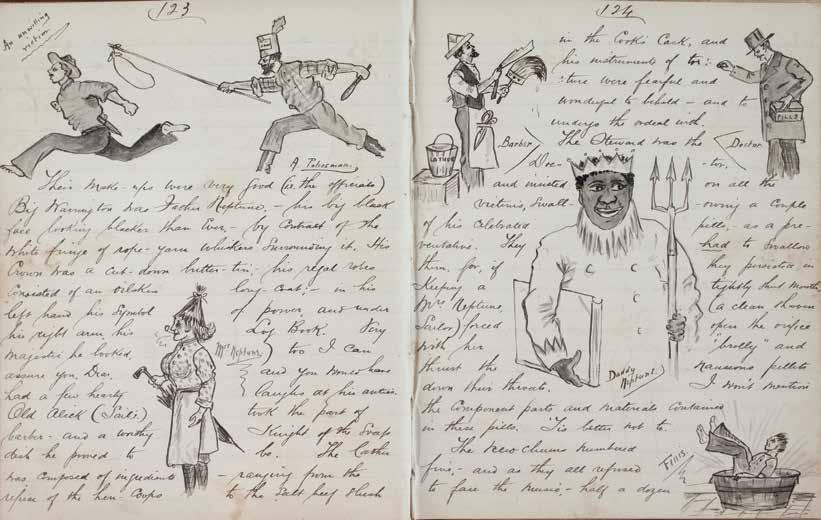
‘the Geographical Ass … who dubbed this stretch of Salt Water – “the Pacific” –is guilty of the biggest lie … Gale blowing with Hurricane force and accompanied by terrific Squalls’
the shared superstitions – such as not complaining or ‘Provi will turn against us’ – and their rough-and-tumble tendencies.
a s chief officer smythe has to sort out personal differences – between seaman and steward, mate and i rish, i rish and Cockney, or south a sian or West i ndian – and enquires about scuffles, challenges, and the occasional explosive tensions in the fo’c’sle. smythe names and sketches the noneuropean crew – the cook’s boy ‘Joe’; Florieu Octavius, from the isle of Bourbon; edward White, from Calcutta; Harry Fairley and Joseph noël, both from mauritius; and Warrington, a West i ndian who signs on in nova scotia. a lthough he characterises them vividly and energetically, smythe regards the black crew as inferior and describes them in language very much reflecting his time and place. He observes the crew’s ragged unmentionables are seen drying, to the mirth by everyone around, while the threadbare clothes of the black crew evoke similar amusement.
The most impressive character to smythe is Bill (William) Warrington, a towering 29-year-old who is introduced early in the voyage when he needs new boots. Warrington’s feet are way too big for

the boots in stores; second mate nelson exclaims ‘“good Lord ! feet, do you call ’em, – i call them yards”!’ Old a lick the sailmaker fashions a pair of boots out of canvas.
‘i n the focsle, these “seven league” boots are known as Warrington’s canoes’. (monday 29 september, 67 days out, page 89)
Warrington has an air of the dandy about him. He portrays father neptune in the crossing-the-line ceremony, and plays the banjo or accordion on sundays.
All Warrington’s Songs (Sacred or Secular) have the same air – and in this respect, Can be identified with the slow Mournful wail of a Gregorian Chant, more than anything else. His rendition of Hymns is particularly Effective … (sunday 26 October, 94 days out, page 145)
smythe recounts the trials of working at sea and the romantic views of those on terra firma as opposed to the reality, which includes dealing with severe injuries with no trained medicos among a troop of vagabonds. He relates that two sailors become incapacitated in a gale, suffering a twisted spine and broken ankle. i ntolerant of bad language and bad behaviour, he becomes increasingly disillusioned with sailors and a sailor’s life
as he draws closer to paying off in Liverpool. ‘How i do hate and detest a sailor’, he writes.
so what about do we know Chief Officer r r smythe and nin, to whom his journal is dedicated and whom he farewelled on the dockside at Circular Quay in sydney?
We wonder why she did not accompany smythe on the voyage to the united Kingdom, like the master’s wife Catherine Williams. a lthough referred to variously as ‘my darling wife’ and ‘wifie’, was nin indeed smythe’s wife? a s we read through the journal smythe’s desperation about nin and his reflections about their relationship seem to indicate they are not yet married.
nin reaches out from the page in effusive vivid prose and in sketches, often hastily drawn in snatched moments on a ship more often rolling than not. smythe paints her as a singer, performer, even a character actor. Was this real or aspirational? Was she a performer with binding engagements, building a career with her voice? smythe writes to make inquiries for her at theatres in the u K and dreams of her beautiful face on playbills. it seems most likely that she was an aspirational singer, performing in private in her drawing room.

smythe had sailed the world’s oceans for more than ten years in a chequered career arcing from apprenticeship to first mate and back to able seaman, spending time ashore as well as at sea. Born in glasgow on 2 november 1873, he is described on his competency certificates as being five feet 4½ inches tall, with fair hair and grey or blue eyes.
He is recorded as deserting the Fernfield at sydney in march 1899. Could this be when he met nin? soon afterwards he is obliged to return to the united Kingdom to replace some lost papers and certificates. He arrives back in sydney on the Hounslow from glasgow as second mate on 4 september 1901, aged 28. On 25 July 1902 he picks up his pen as first mate on the Loch Bredan, after farewelling nin at Circular Quay.
early days out of sydney see smythe missing nin terribly. at first he seems measured in his commentary, but the delays from gales and poor winds eat away at this lovesick officer and his passionate missives to nin and reflections on life as a seafarer – ‘The most vexatious and miserable of vocations’ – become a little overwrought. smythe had intended this voyage to be his last, and to make his living away from
the sea supporting nin as a concert-hall chanteuse in the united Kingdom.
On 25 november 1902, the ship docks in Liverpool. The voyage lasts 123 days, a ‘most monotonous and most miserable passage’, and at its end smythe is desperate to receive word both from nin, hoping to hear when she will follow him, and his mother. Happily the pilot brings him both longed-for letters, and this is how the diary ends. Frustratingly for the reader, we never discover if smythe and nin meet in the united Kingdom or even the contents of nin’s letter.
several years later it appears that he is back in australia. robert robertson smythe marries eveline mabel mclean (or maclean) in 1908. i n 1911 smythe gives evidence before an inquiry, in which he is cited as a master mariner. it appears that the couple had a child, maisie. r r smythe died in 1947 and was buried in Woronora Cemetery at sutherland in sydney’s southern suburbs. a s we go to press we are still on the track of eveline. it seems likely, but not certain, that she is nin, so questions remain: Did nin and smythe marry? Did nin sail to the united Kingdom? Did she become a singer?
01 ‘Up aloft’: ‘Here we are 40 days out and not around the infernal corner yet’ (Tuesday 2 September 1902, page 42).
02 Never to be seen again: Loch Bredan at her last port, Port Adelaide, South Australia, 1903. State Library of South Australia
a nd what about the Loch Bredan – the crucible for this emotional outpouring?
i n september 1903, the year after smythe’s voyage, Captain Williams sailed from adelaide for south a frica with a cargo of compressed grain. On board were his wife Catherine and daughter Betty, now 18 months old, whose feet had first touched solid ground in adelaide, when she toddled off the ship, racing her father to the wharf, astonished to scuff her shoes in the mud. Talking to a reporter for the Register in adelaide on 23 January 1904, Captain Williams noted that she had learnt to walk on the voyage back to australia.
Tragically but not uncommonly, Loch Bredan disappeared without trace on that voyage, with all souls lost, in unknown circumstances. The covers of smythe’s journal – made for nin from the charthouse doors that had been stove in during a gale in august 1902 so that she would have ‘part of Loch Bredan herself’ – are all that remains.
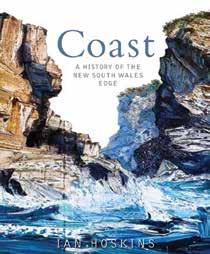
By Ian Hoskins, published by NewSouth Publishing, New South Wales, 2013. Hardback, 448 pages, illustrations, bibliography, index. RRP $49.99 (Members $44.95). Available at The Store or online http://store.anmm.gov.au
ausT ra L ia is a COasTa L COun T rY; despite its vastness, the great majority of its population clings to the coast. ian Hoskins’ new book Coast (which is not connected with the popular BBC TV series of the same name) explores this relationship between humans and the coast of new south Wales. Hoskins and new south Publishing have excelled themselves with this publication. Coast has a sweeping narrative, striking design, numerous maps, marvellous colour plates, black-and-white photographs that bleed into the text, and a superb cover by seascape artist neil Frazer.
ian Hoskins is the north sydney Council historian and author of the award-winning book Sydney Harbour: A History. His new Coast takes several days to absorb. its 11 chapters cover such topics as natural history; the first coastal people; the europeans; convicts; coal, cedar and cane cutting; fishing; boatbuilding; defending the coast; and heritage and conservation issues, all interwoven like a finely textured fishing net. We learn, for instance, that the new south Wales coast is 2,100 kilometres long, with 130 estuaries, and that some of its sandstone cliffs are 27 million years old.
numerous coastal landscapes include swamps and remnant rainforests containing a multitude of vegetation and wildlife, with thousands of species both above and below the sea. Hoskins explains, ‘The largest animals in coastal waters are not fish but mammals. Whales, dolphins and other cetaceans are descended from the first mammals to return to oceans emptied of large marine reptiles, in a process that began around 50 million years ago’.
Hoskins’ passion for the coast started when he was a child, holidaying near Jervis Bay on the new south Wales south coast. a fter several more recent visits, the idea for his book gradually formed. He writes, ‘a s a historian i had made a point of visiting the aboriginal [rock] overhang, which survived with its shell midden as profound evidence of an ancient human attachment to this coast’.
The author points out that there are 17 i ndigenous languages along the coast,
although in 1770, Lieutenant (later Captain) James Cook and his naturalist Joseph Banks wrongly assessed that ‘native’ numbers were scarce. This was during the first of Cook’s three south Pacific expeditions. a fter observing the transit of Venus at Tahiti in 1769, Cook, under admiralty orders, explored the south Pacific searching for Terra australis i ncognita, the long-postulated great southern Land, and became the first known european to encounter the east coast of what is now australia.
Numerous coastal landscapes contain thousands of species of vegetation and wildlife, both above and below the sea
a fter Cook was killed in Hawaii in 1779, Banks testified to the British Parliament that Botany Bay would make an excellent site for a convict settlement, and so began the history of modern australia, and an often troubled relationship between the european settlers and the i ndigenous people.
Hoskins writes of the difficulties that the first colonial governor of new south Wales, Captain a rthur Phillip, had with both the i ndigenous inhabitants and the convicts. Despite the governor’s policy of rehabilitating convicts, norfolk island (1,670 km north-east of sydney) and the coastal settlements of newcastle and Port stephens became jails for the most intransigent.
Like many of the governors who came after him, including Lachlan macquarie, Phillip was to lose his composure and send soldiers on reprisal missions to kill aboriginal people who had stolen livestock from land stolen from them. not all contact between the i ndigenous people and the colonists was hostile, however; Phillip’s relationship with an i ndigenous man named Bennelong (who gave his name to the point on which the sydney Opera House now stands) began with a kidnap and transformed into an unusual friendship.
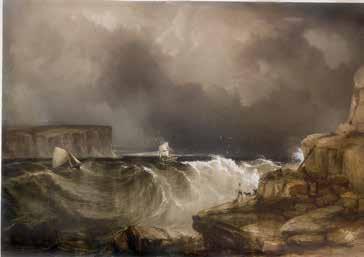
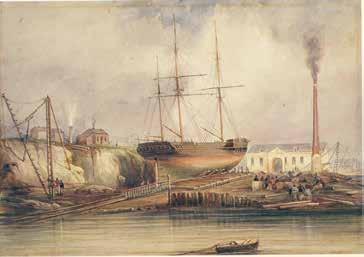
Hoskins also describes the special rapport that existed between Captain matthew Flinders and his i ndigenous guide Bungaree on the Investigator. The two had many memorable encounters on their voyage round the continent, such as their discovery of aboriginal circular huts at shoal Bay. The maps produced by matthew Flinders on this voyage were spectacular in their detail and fine drawing.
a fter 1802 the British started to spread out along the whole coastline of Terra australis, claiming land in Tasmania, Western australia, south australia, and finally in 1859 in Queensland. The Dutch and the French – both former possible claimants to parts of australia – were finally out of the picture.
Hoskins details how ex-convicts started their own businesses and The australian agricultural Company was formed as early as 1824. some aboriginal people began working on new south Wales wharves, and along the new south Wales coast cedar cutters denuded the landscape. Cane plantations in northern parts of the state brought indentured labourers from the Pacific, and dispossession and massacres of aboriginal people became more widespread.
The book’s chapter on boatbuilding is equally enlightening. Hoskins describes the early aboriginal canoes, the governors’ restrictions on the size of european dinghies for fear that convicts would steal them to
escape, and the activities at the dry docks in sydney. He writes, ‘sydney harbour, in particular, was like a highway, and it was filling with those needing to carry themselves and their goods from one place to another’. The first paddle steamer, Surprise, was built in 1831. By 1850 there were three boatbuilding sites, and the Coolangatta and the sleek Kiama were launched as trading vessels.
Coast also includes wonderful colour plates of coastal landscapes and seascapes and various ships, by artists such as Joseph Lycett, William Westall, Oswald Brierly, Frederick garling, robert Westmacott, Conrad martens and Julian a shton. Other images include lighthouses, the famous beach views of max Dupain, lifesavers and surfers, and photographs of boats and coastal buildings, including caravan parks and glenn murcutt’s eco-sustainable houses.
The final chapter concentrates on heritage issues, through important figures in our conservation history such as Vincent serventy, myles Dunphy and marie Byles. it covers the creation of national parks and marine parks, and the formation of advocacy bodies such as the national Trust, the Total environment Centre, the national Parks a ssociation and the aboriginal saltwater Freshwater a rts a lliance. The latter, Hoskins explains, ‘is a regional organisation comprising people from ten different
aboriginal Land Councils, whose goal is to foster aboriginal arts and culture’.
But the coast continues to be threatened by climate change, warming oceans, rising sea levels, mining, and the relentless progress of ‘civilisation’. What is most obvious, Hoskins notes, ‘is the politicisation of the issue of climate change and its causes and solutions’.
Coast is certainly a demanding read, but it repays you with marvellous information and excellent research and writing. The book’s inside front cover features a map of the new south Wales coast with european place names, while on the inside back cover is a more detailed landscape map with aboriginal place names. it’s a great visual motif, and typical of the care, detail and aesthetic style that are evident all the way through Coast
Margaret Smith
Reviewer Margaret Smith’s most recent documentary A Smarter Country – creating the future explores the world of green pioneers in agriculture, building and renewable energy who are working towards a sustainable future.
01 Sydney Heads by Conrad Martens. This 1854 watercolour of a storm at the entrance to the harbour is one of Martens’ most dramatic seascapes.
02 Frederick Garling’s watercolour shows the Australasian Steam Navigation Company’s patent slip at Pyrmont in the 1860s.
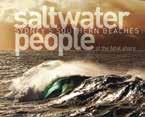
Writers, publishers and readers of maritime history are invited to nominate works for maritime history prizes totalling $5,000, sponsored jointly by the Australian Association for Maritime History and the Australian National Maritime Museum. Nominations for the next round close on 31 March 2015.
PasT en T ries in TH ese TWO PriZ es have covered a wide range of topics – including maritime archaeology and exploration, beach culture, evolution, art and the livestock trade – demonstrating the diversity of this subject area. Both biennial prizes reflect the wish of the two sponsoring organisations to promote a broad view of maritime history that demonstrates how the sea and maritime influences have been central to the shaping of australia, its people and its culture. This year the prize money in both categories has been increased. This will be the eighth joint prize for a maritime history book awarded by the two organisations, and the third community prize.
The 2015 Frank Broeze Memorial Maritime History Prize of $4,000
To be awarded for a book treating any aspect of maritime history relating to or affecting australia, written or co-authored by an australian citizen or permanent resident, and published between 1 January
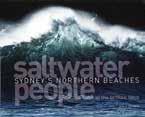

2013 and 31 December 2014. The book should be published in australia, although titles written by australian authors but published overseas may be considered at the discretion of the judges. The prize is open to australian authors or co-authors of a book-length monograph or compilation of their own works. edited collections of essays by multiple contributors are not eligible.
The Australian Community Maritime History Prize of $1,000
To be awarded to a regional or local museum or historical society for a publication (book, booklet, educational resource kit, DVD or other media) relating to an aspect of maritime history of that region or community, and published between 1 January 2013 and 31 December 2014. The winner will also receive a year’s subscription to the australian a ssociation for maritime History.
The major prize is named in honour of the late Professor Frank Broeze (1945–2001) of the university of Western australia, who has been called the pre-eminent maritime historian of his generation. Professor Broeze was a founding member of the australian a ssociation for maritime History, inaugural editor of its scholarly journal The Great Circle, and introduced australia’s first university course on maritime history. He was the author of many works on australian maritime history, including the landmark Island Nation (1997), helping to redefine the field in broader terms than ships, sailors and sea power. He reached into economic, business, social and urban histories to make maritime history truly multidisciplinary.
How to nominate
nominations must include a synopsis of the work (minimum 300 words) plus photocopies of the following:
• dust-jacket or end covers, or DVD cover (including publication details)
• title page
• imprint page
• contents pages (including an isBn in the case of print publications)
• one or two chapters (or a representative portion) of the publication, including examples of illustrative material.
Copies of any published reviews should also be included. The publication itself may also be submitted (highly recommended for the australian Community maritime History prize). nominations close on 31 march 2015. nominations should be posted or emailed to: Janine Flew
Publications editor
australian national maritime museum
2 murray street sydney nsW 2000 email publications@anmm.gov.au
Following an initial assessment of nominations, shortlisted authors or publishers will be invited to submit three copies of their publication. These will be judged by a committee consisting of emeritus Professor m ichael Pearson, president of the australian a ssociation for maritime History; Jeffrey mellefont, former editor of Signals; and one independent nominee. The prize will be announced and awarded at a time and venue to be advised.



01 Sister institutions In October the museum’s Director, Kevin Sumption, formally signed a Sister Park Agreement between the museum and the WWII Valor in the Pacific National Monument at Pearl Harbour. The roles of both institutions include commemoration and acknowledgement of naval national service in wartime and in peace, and the display of heritage vessels and educational exhibits relating to naval service.
The purpose of the ‘sister park’ relationship is to promote international cooperation and support, and to enrich the experience of staff and visitors to both sites. We look forward to working closely with our new sister organisation, especially with our strong navy focus over the next year, with related exhibitions, programs and the construction of our new Warships Pavilion.
Mr Sumption is pictured with his co-signatory, Paul DePre, Superintendent, World War II Valor in the Pacific National Monument, National Park Service.
Story Michael Harvey; photograph Gene Cailwag
02 The search for Endeavour The Australian National Maritime Museum is delighted to have partnered with archaeologist Dr Kathy Abbass and her team from the Rhode Island Marine Archaeology Project (RIMAP) in the United States to find Captain James Cook’s original Endeavour. A memorandum of understanding was signed at the Australian embassy in Washington DC on Thursday 9 October.
Searching through archives 15 years ago, Dr Abbass discovered that Endeavour was likely to be in Newport Harbour, one of 13 ships deliberately sunk by the British in 1778 during the Revolutionary War to block America’s French allies from entering.
Dr Abbass and her team have located what they believe could be nine of the 13 ships in water eight to 15 metres deep. Silt in the harbour has probably helped to preserve the vessels. The museum is aiming to find Endeavour by 2020 – the 250th anniversary of Cook’s Australian exploration. Museum Director Kevin Sumption is pictured (left) with Dr Abbass and The Hon Kim Beazley ac, Ambassador to United States of America, signing the memorandum of understanding.
Story Jude Timms; photograph courtesy Australian Embassy, Washington DC, USA
03 A VIP cruise on Kathleen Gillett The museum welcomed Her Excellency Unni Kløvstad, the newly-appointed Ambassador of Norway, to Sydney with a short harbour cruise on board Kathleen Gillett – which originally came to the museum as a bicentennial gift from the people of Norway. The ambassador and her family thoroughly enjoyed both the vessel and the harbour, which turned on a magnificent day for the sail, with a light northeast sea-breeze filling in over the morning. The museum’s Fleet and curatorial teams put the boat through its paces after its recent maintenance slipping, setting sails off Taronga Zoo and working up the harbour before running back downwind to the Opera House. It was a wonderful way to show our guests the harbour’s sights and also show off Kathleen’s sailing abilities. Assistant Director Michael Harvey is pictured (left) with the ambassador and her children.
Story Michael Harvey; photo Nigel Erskine/ ANMM
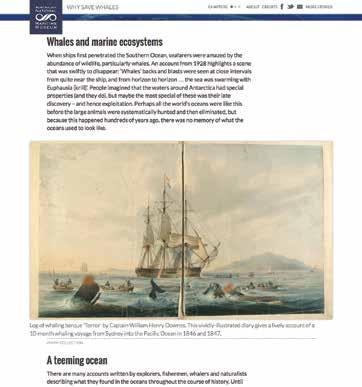
Why save whales? Read the full story online at stories.anmm.gov.au/why-save-whales.
i T’s Been a BusY F e W mOn THs for the Digital Outreach team as we continue to explore new ways to engage with our online audience. i n november we launched a new online platform to deliver enriched stories about maritime history, the marine environment and our extensive collection. The trend towards long-form storytelling has swept the internet, fuelled by the rapid uptake of tablets, e-readers and mobile devices. The museum’s digital stories harness these new formats, offering rich content that can be enjoyed on devices of any type or screen size, from desktop computers to smartphones.
We encourage you to explore the stories already on offer. Curator David Payne’s story recounts the triumphs and tragedies throughout the 70-year history of the sydney to Hobart yacht race, and is illustrated with dozens of rare historic photographs. stories by Janice Wormworth and renowned scientist Dr stephen nicol examine the history and evolution of whales and the threat of whaling,
and have been enhanced with illustrations, photographs, video and audio. read the stories at stories.anmm.gov.au
We’ve added a kids’ section to the museum’s new website. it includes details on the museum’s special family-friendly exhibitions and events, as well a fun and easy craft activities inspired by exhibitions and themes here at the museum. ever wondered how to make whale-themed finger puppets, create a paper submarine, or construct a Di Y terrarium? Head to the craft section for step-by-step instructions and printable downloads: anmm.gov.au/kidscraft
Our ever-popular blog is frequently updated by staff across the museum, including curatorial, visitor programs and Fleet. The crew of H m B Endeavour posted regularly from their voyages to Broken Bay, newcastle and eden between september and november. Crew members, along with special guest geoffrey ross from nsW Parks and Wildlife service, have been on the lookout for whales on their southern migration, recording their sightings for the
Australian Antarctic Division’s national database. Check out photos and stories at anmm.gov.au/blog
To complement the exhibition War at Sea: the Navy in WWI, we’ve introduced a new Twitter account. Through @WarregoJohn we’re posting snapshots from the 100-yearold personal diary of John Brown, a wireless radio operator aboard H ma ships Protector, Warrego and Brisbane from 1914 to 1918. Follow along for glimpses into the highs and lows of life in the royal australian navy during World War i: twitter.com/ WarregoJohn
Be sure to keep an eye on our other social media feeds for behind-the-scenes photos and the latest museum news. We always love to hear about your visit to the museum’s exhibitions and events. Tag or mention us in your photos on Facebook, Twitter or i nstagram.
The digital team
Connect with us Twitter and Instagram – @ANMMuseum Facebook – facebook.com/anmmuseum

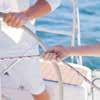


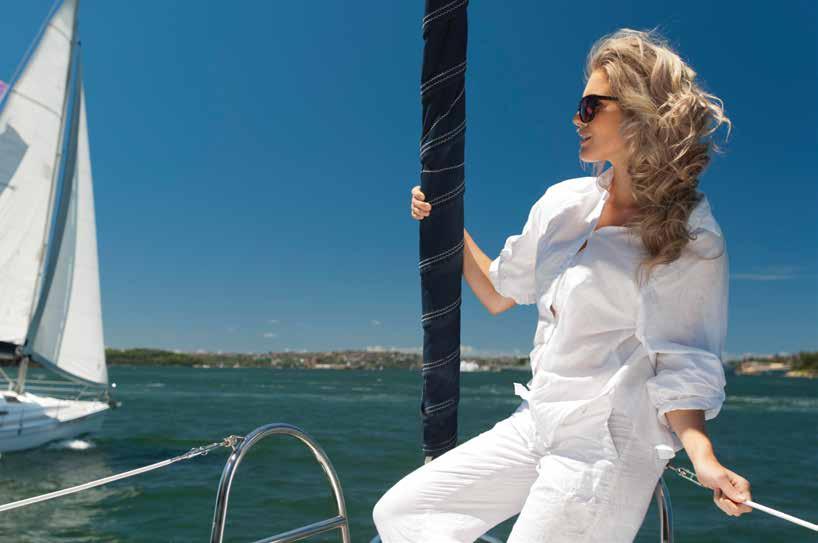

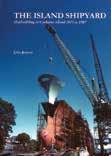
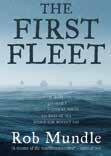
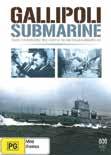
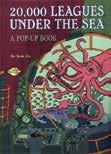
THE ISLAND SHIPyARD
By JOHN JEREMyChronicles Sydney’s Cockatoo Island and its 117 years of shipbuilding activity, focusing on the dockyard’s construction of ships for the Royal Australian Navy.
$45.00 / $40.50 Members
THE FIRST FLEET By ROB MUNDLE
Discover how 11 ships, their crew and convict passengers sailed 17,000 nautical miles to found a new colony in Australia.
$49.95/ $44.96 Members
GALLIPOLI SUBMARINE DVD
Traces the incredible true story of Australian submarine AE2 and her crew, with a nail-biting dramatised account of their terrifying dive in enemy territory. 62 minutes
$30.00 / $27.00 Members
20,000 LEAGUES UNDER THE SEA POP-UP BOOK
A pop-up book of Jules Verne’s engrossing story, with flaps, hidden panels and double-page scenes of the Nautilus, the visit to Atlantis and the giant squid attack. Special offer normally $39.95 now $25.00
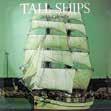
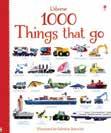


Shop online at anmm.gov.au/thestore
TALL SHIPS 2015 CALENDAR
With its modern examples of tall ships – schooners, brigantines, brigs, and barques – this calendar will make you yearn for the open sea. 30 cm square, 13 images
$19.95 / $17.96 Members
1000 THINGS THAT GO
This large board book contains 1,000 pictures of vehicles, with their names. Each double-page spread shows a wonderful array of trucks, diggers, cranes, trains, ships and more.
$22.00 / $20.00 Members
SILK SIGNAL FLAG SCARF
Wear a piece of the sea wherever you go – nautical chic is always in fashion. Silk, 52 cm square.
$79.95 / $71.96 Members
MERMAID PLUSH DOLL
Dressed to impress, this mermaid doll comes in a variety of colours. Made of soft micro fabric, with bean filling doublebagged for safety and durability. Height 45 cm, for ages 3+
$29.95 / $26.96 Members
9.30 am–5 pm 7 days a week | 02 9298 3698 | fax orders to 02 9298 3675 thestore@anmm.gov.au | Members discounts | Friendly service

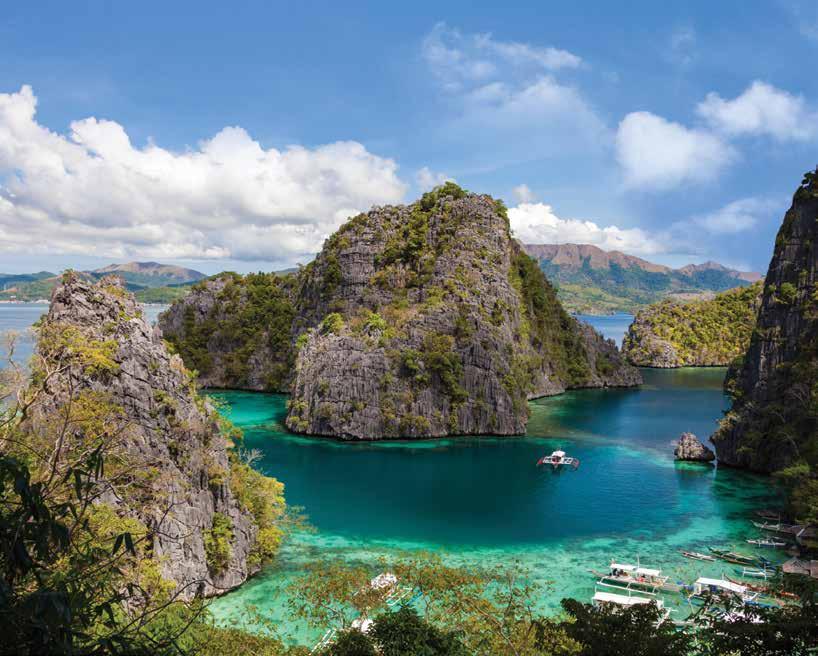
Pack a sense of adventure and journey beyond the tourist trail, with APT’s Luxury Small Ship Cruises offering a unique discovery of the world’s seldom seen treasures.
P Cruise in luxury on the MS Caledonian Sky, with just 55 stylish suites for a small ship cruising experience
P INCLUDED – All shore excursions, guided sightseeing, tipping, airport transfers and port charges
P INCLUDED – Exquisite onboard dining with wine, beer and soft drink served with lunch and dinner on board
P INCLUDED – Fleet of 10 Zodiac landing craft for greater access to remote areas
P INCLUDED – Onboard Expedition team of expert naturalists, historians and ecologists
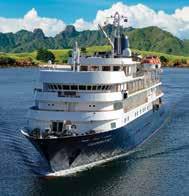



Comments or questions about Signals content?
Call the editor 02 9298 3777 email signals@anmm.gov.au
Signals is online
Search all issues from No 1, October 1986, to the present at anmm.gov.au/signals
Signals journal is printed in Australia on Sovereign Satin
250 gsm (cover) and 128 gsm (text) using vegetable-based inks on paper produced from environmentally responsible, socially beneficial and economically viable forestry sources.
Cert no SGS-COC-006189
01 Astor – no strings attached. Formerly Ada, built in 1924, Astor won line honours in the Sydney to Hobart race in 1961, 1963 and 1964. CYCA archives
Australian National Maritime Museum
Open daily except Christmas Day
9.30 am to 5 pm (6 pm in January)
2 Murray Street Sydney NSW 2000
Australia Phone 02 9298 3777. The Australian National Maritime Museum is a statutory authority of the Australian Government.
Become a museum Member
Benefits include four issues of Signals per year; free museum entry; discounts on events and purchases; and more. See anmm.gov.au or phone 02 9298 3644. Corporate memberships also available.
ANMM council
Mr Peter Dexter am faicd
Directors
Mr Paul Binsted
Mr Robert Clifford ao
Mr Peter Harvie
Ms Robyn Holt
Dr Julia Horne PhD
Mr Shane Simpson am
The Hon Margaret White ao
Rear Admiral Stuart Mayer
csc and Bar ran
Signals
ISSN 1033-4688
Editor Janine Flew
Staff photographer Andrew Frolows
Design & production Austen Kaupe
Printed in Australia by Pegasus Print Group.
Material from Signals may be reproduced, but only with the editor’s permission.
Editorial and advertising enquiries
Janine Flew 02 9298 3777 signals@anmm.gov.au
Deadline mid-January, April, July, October for issues March, June, September, December
Signals back issues
Back issues $4 10 back issues $30
Extra copies of current issue $4.95
Call The Store 02 9298 3698
Foundation partner ANZ
Major partners
Accor’s Darling Harbour Hotels
Lloyds Register Asia
Nine Entertainment
Returned and Services League of Australia (Queensland Branch)
Southern Cross Austereo
partners
Australian Maritime Safety Authority
Australian Pacific Touring Pty Ltd
Douglas Fabian Productions
Laissez-faire
Royal Wolf Holdings Ltd
Sydney by Sail Pty Ltd
Transport for NSW
Founding patrons
Alcatel Australia
ANL Limited
Ansett Airfreight
Bovis Lend Lease
BP Australia
Bruce & Joy Reid Foundation
Doyle’s Seafood Restaurant
Howard Smith Limited
James Hardie Industries
National Australia Bank
PG, TG & MG Kailis
P&O Nedlloyd Ltd
Telstra
Wallenius Wilhelmsen Logistics
Westpac Banking Corporation
Zim Shipping Australasia
ANMM GOV AU